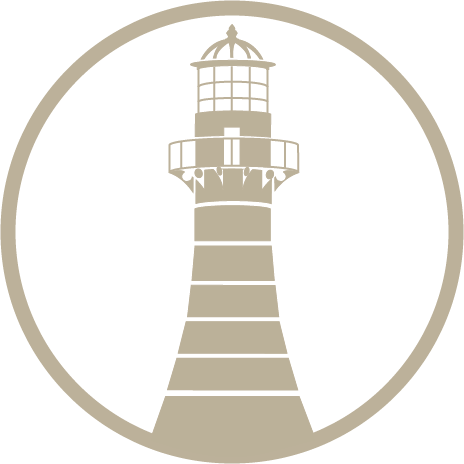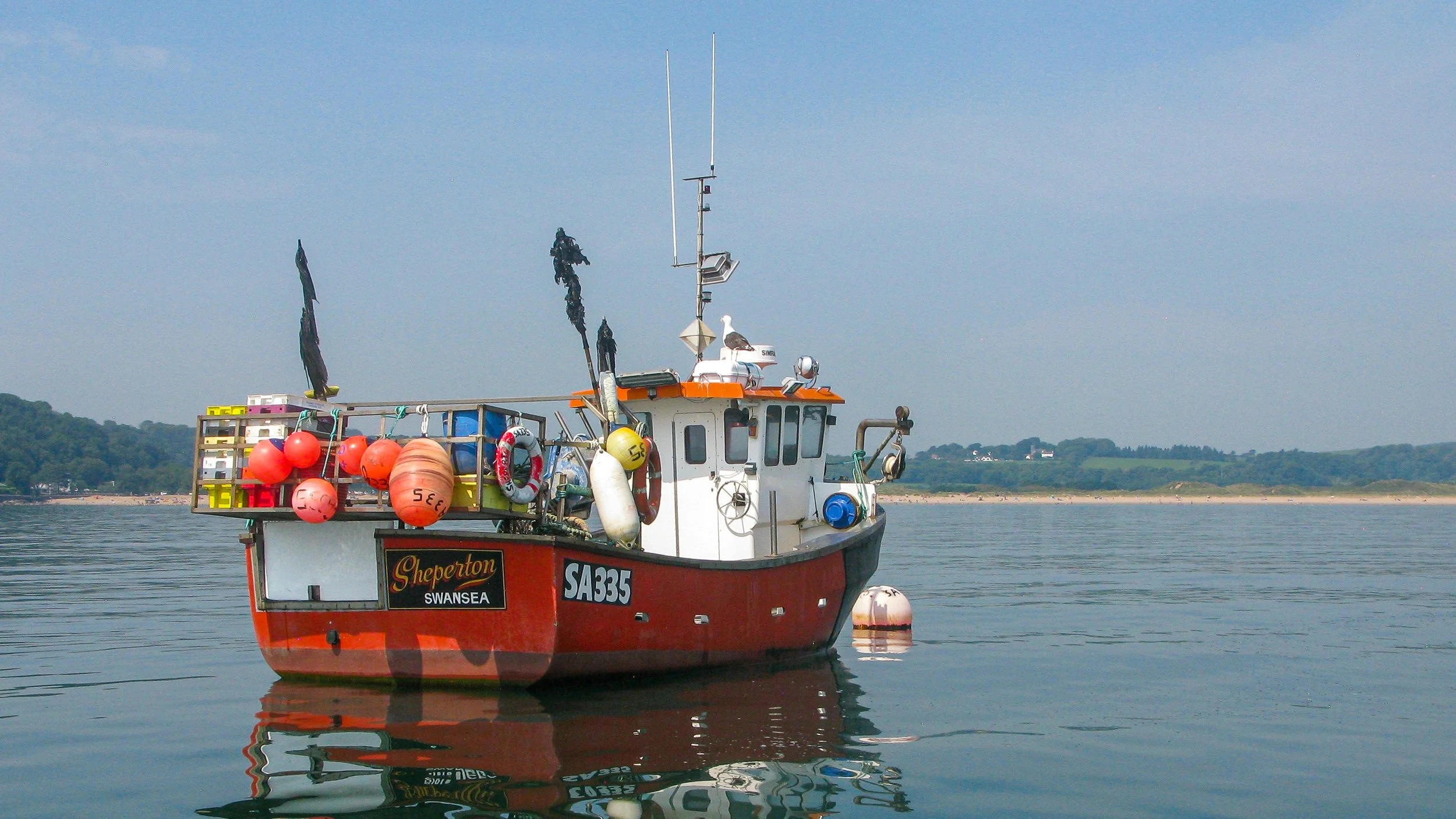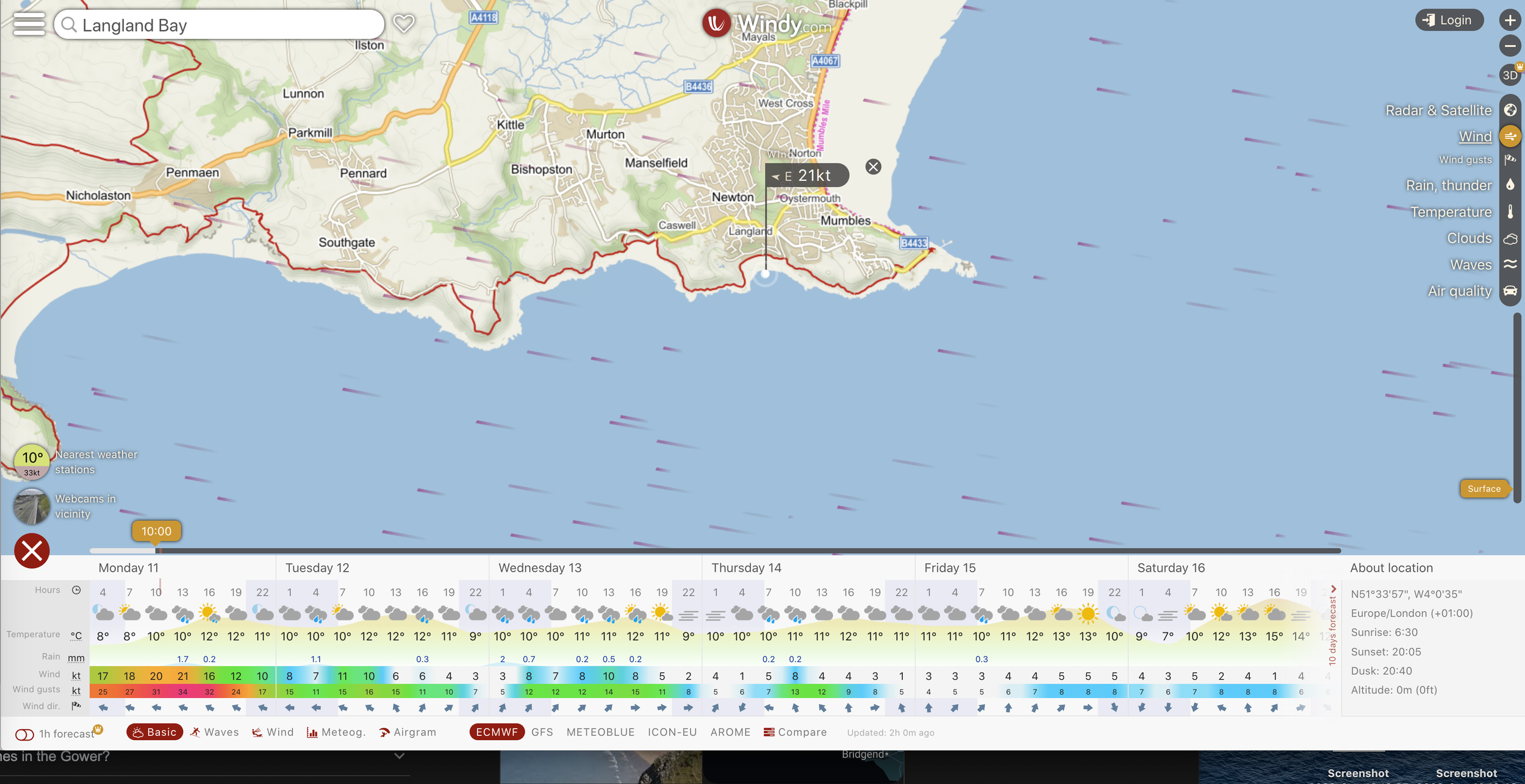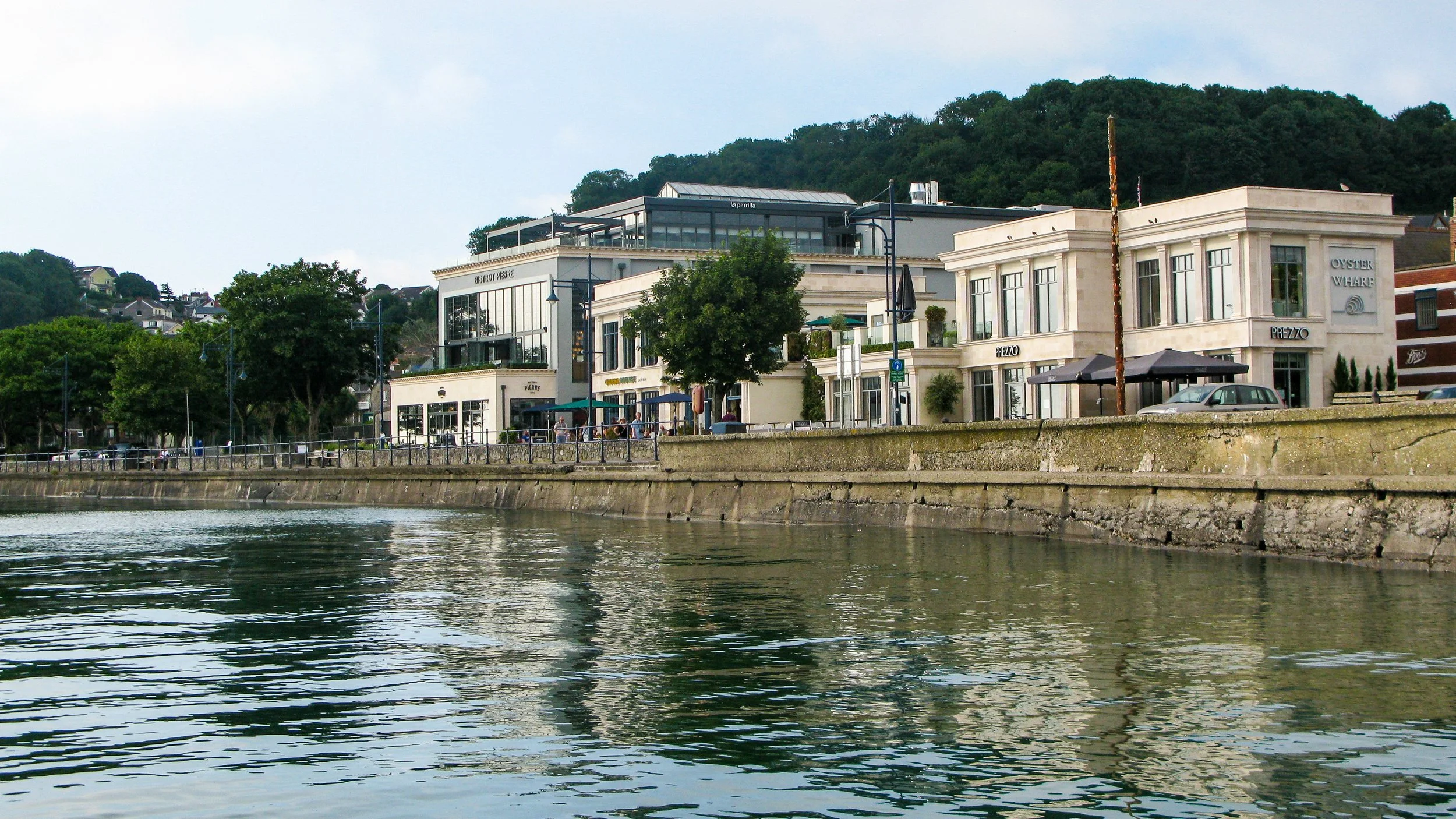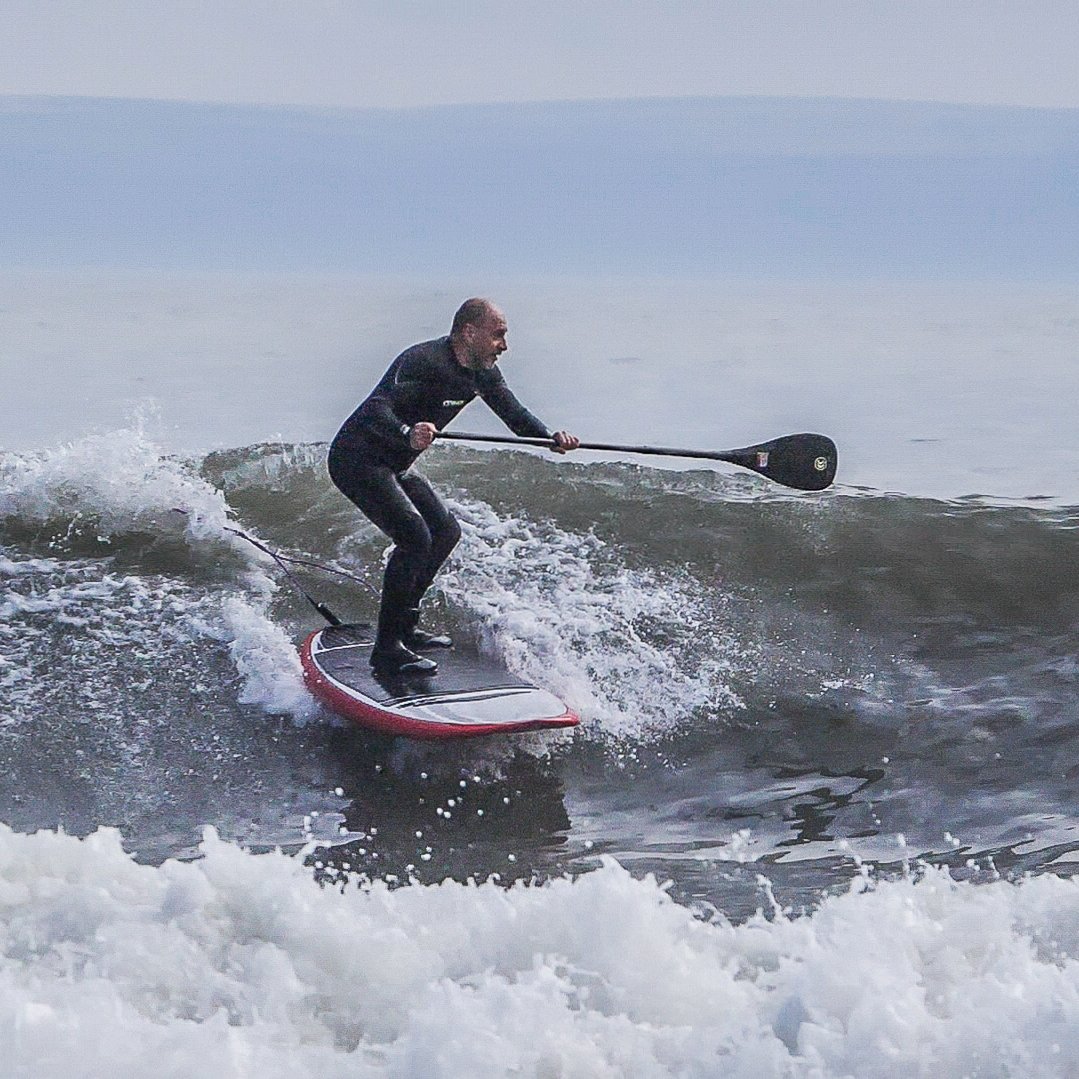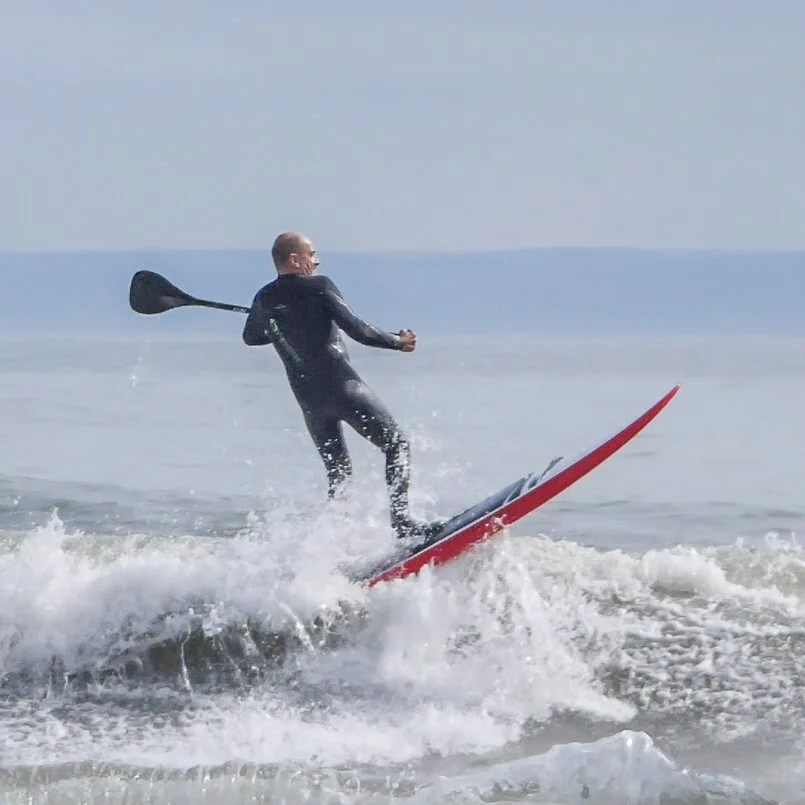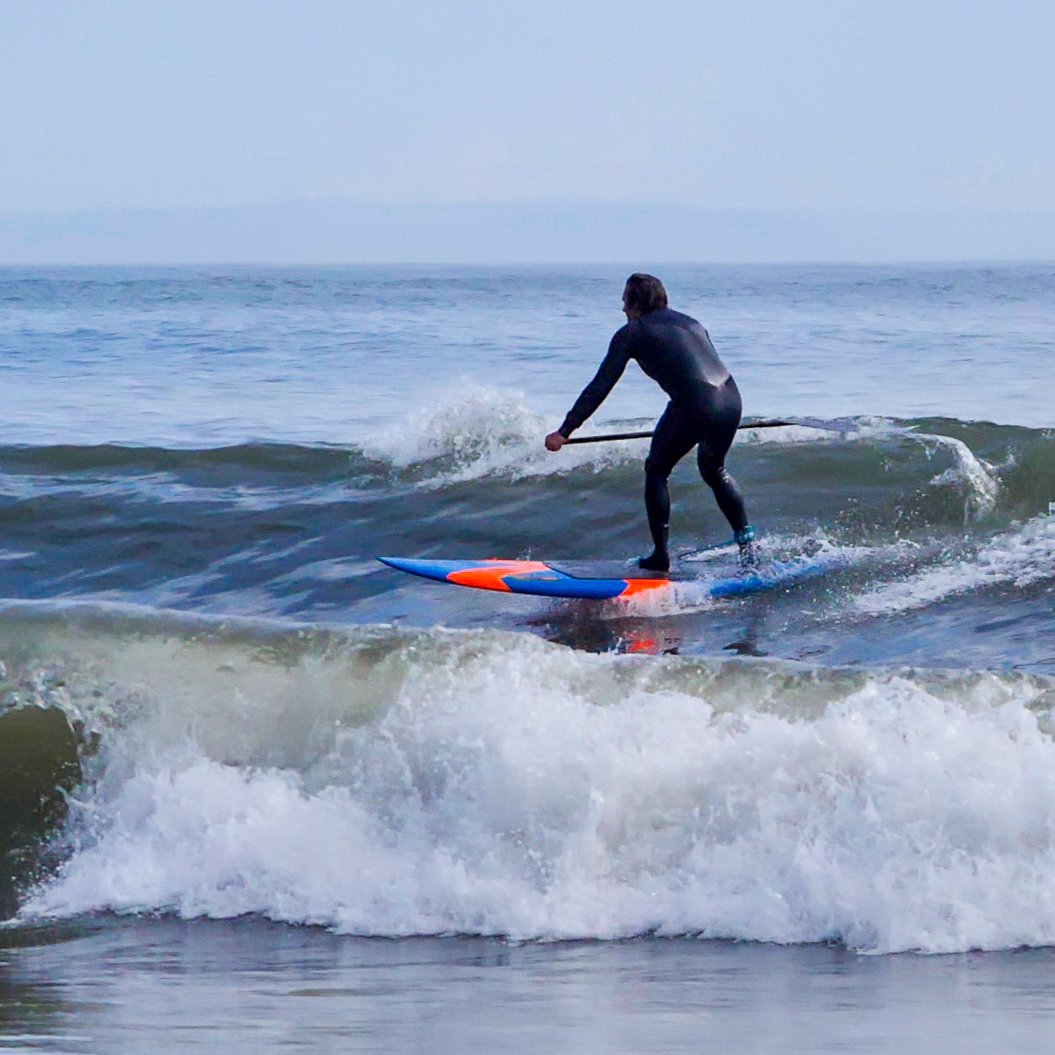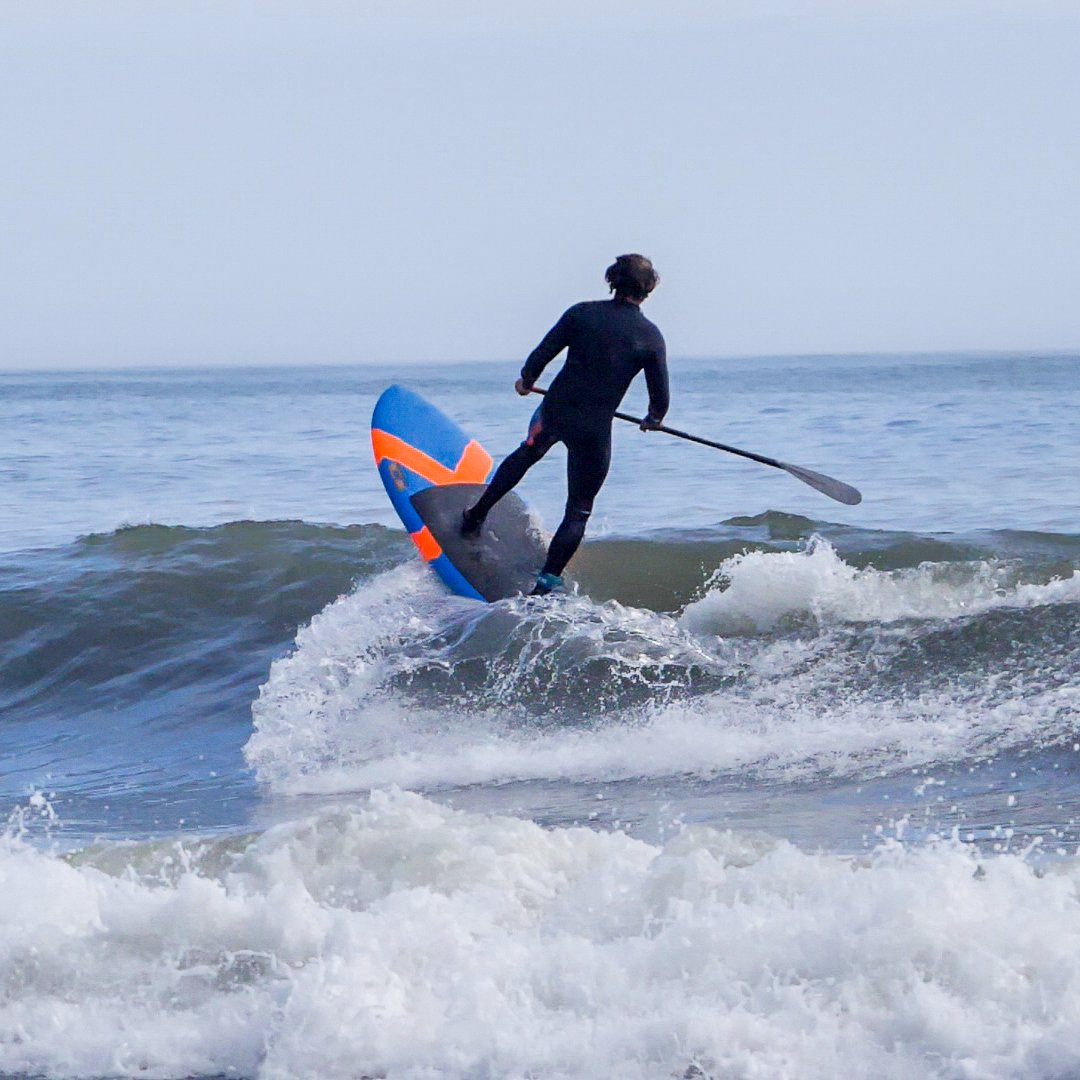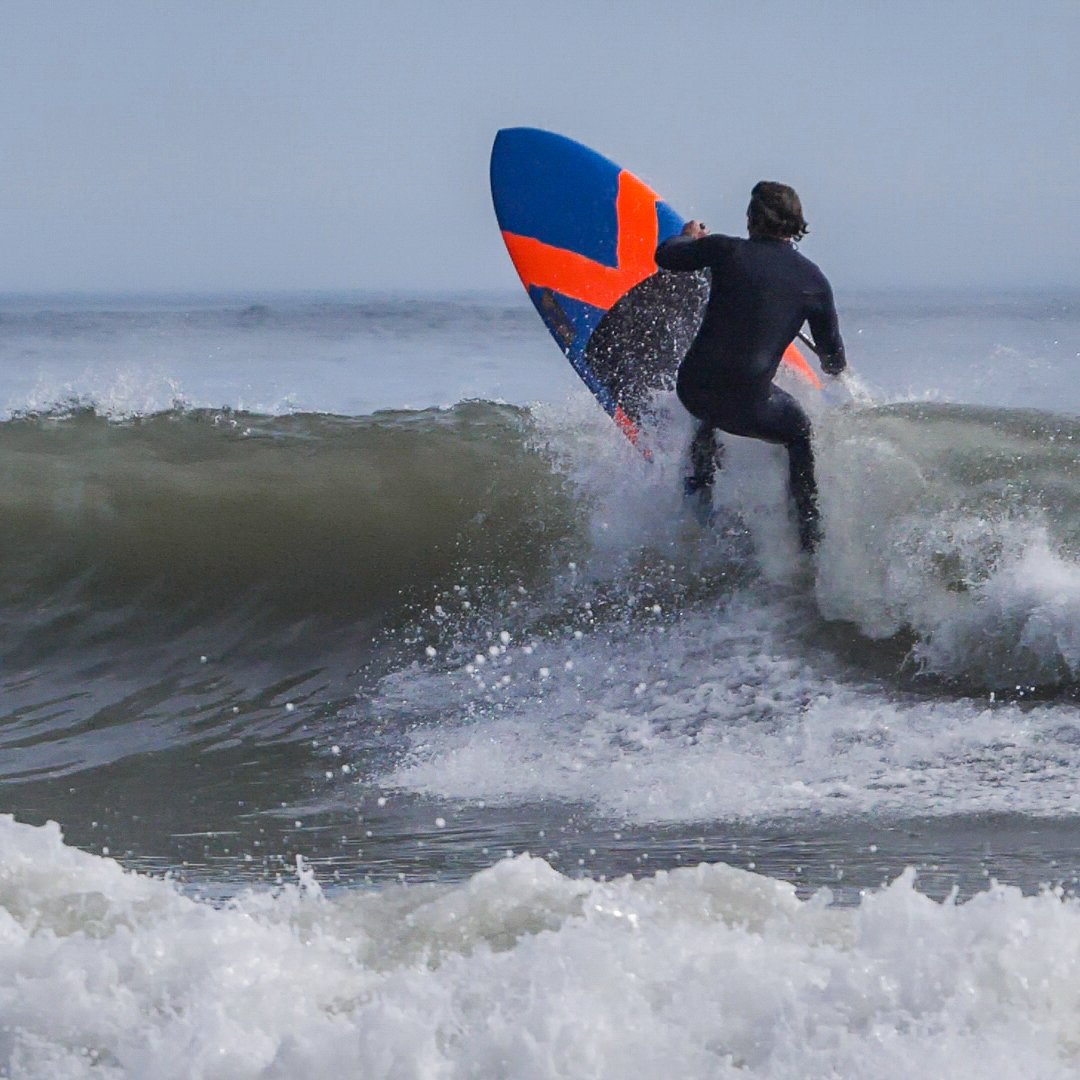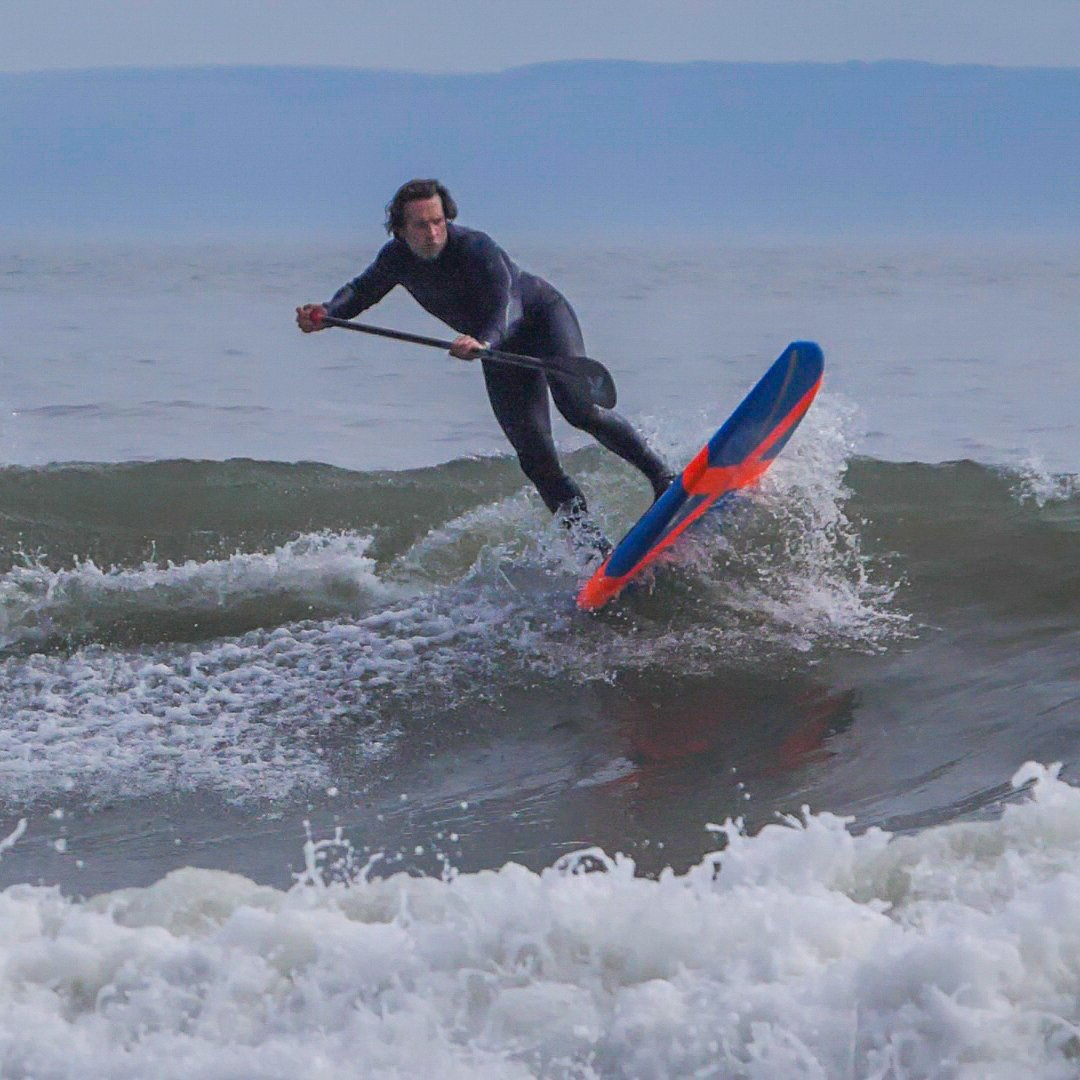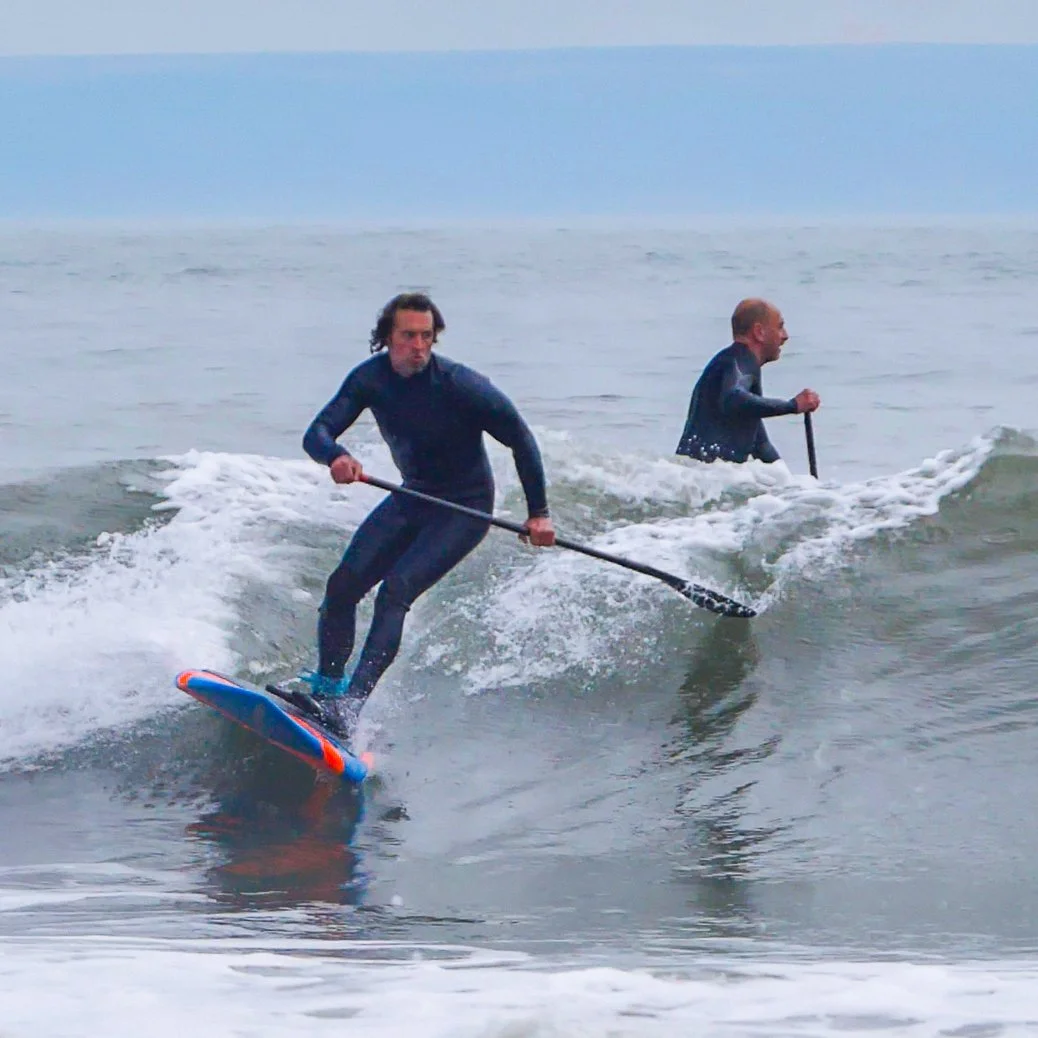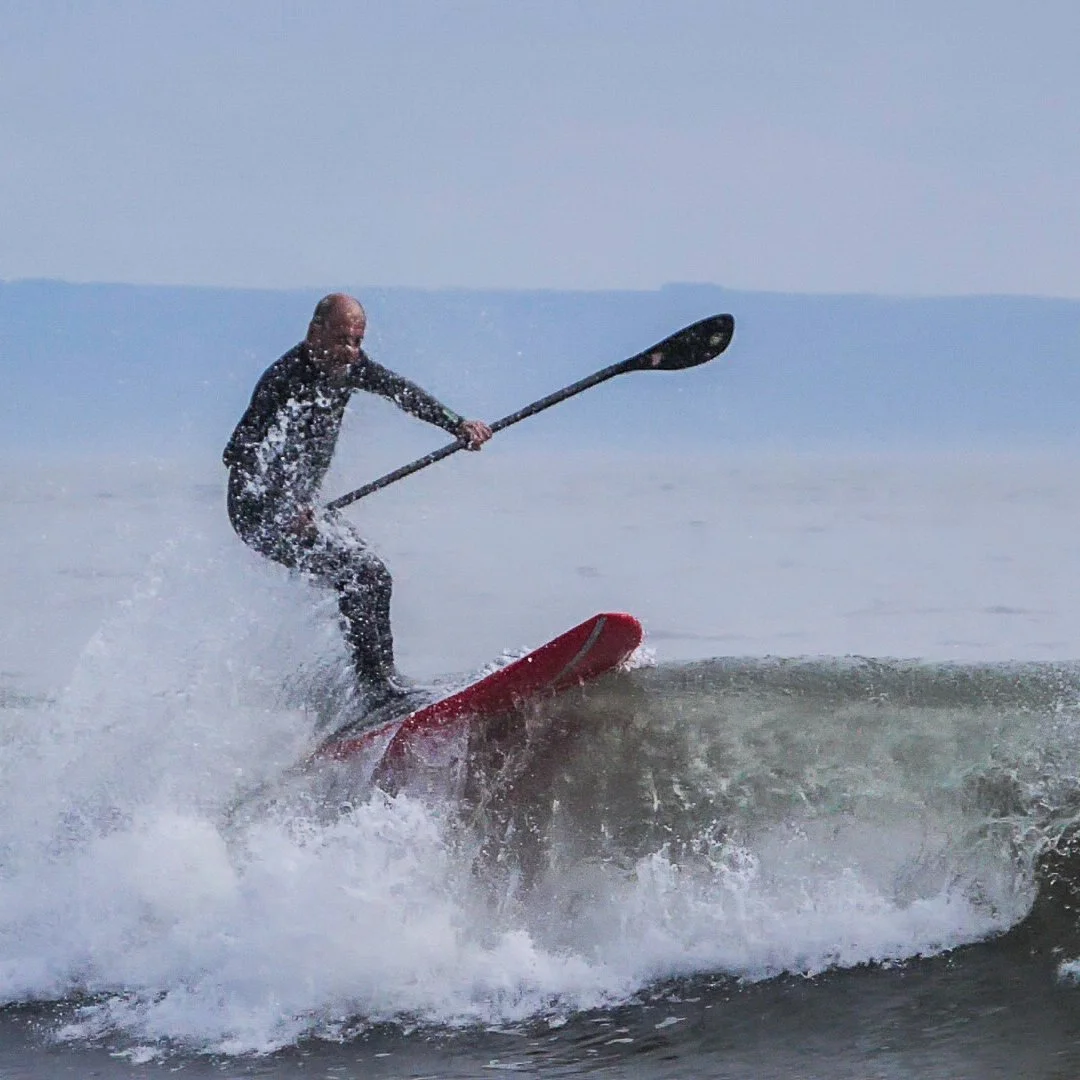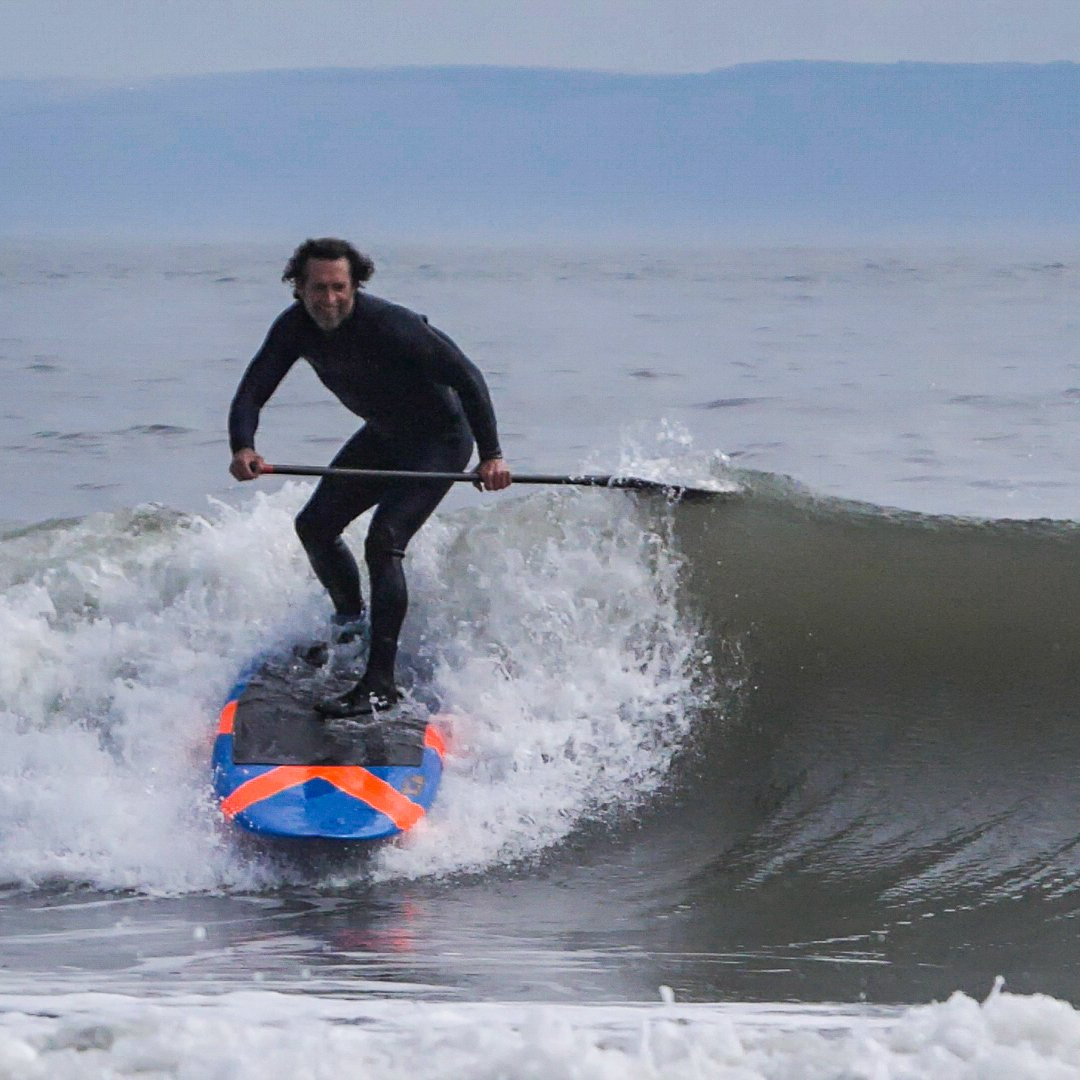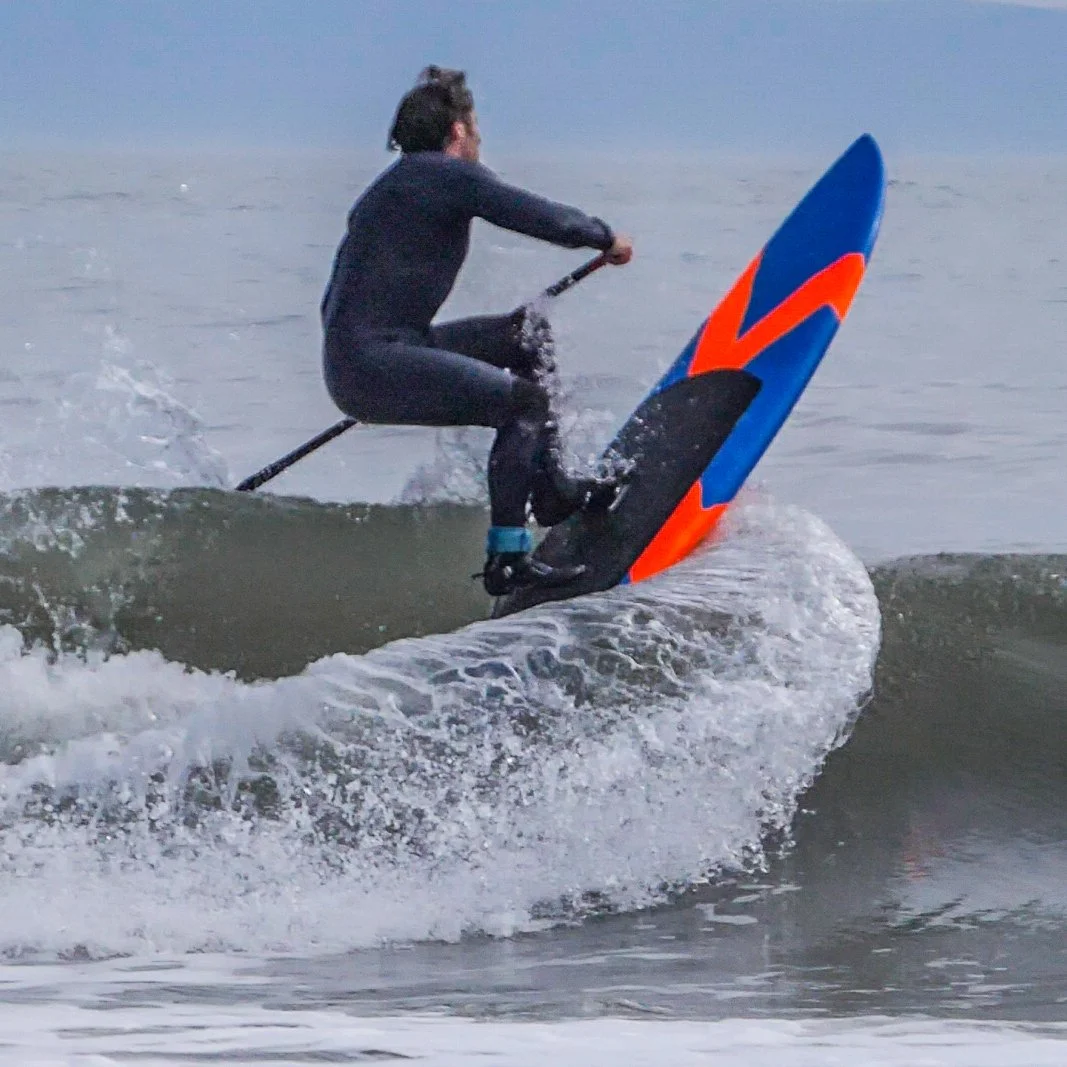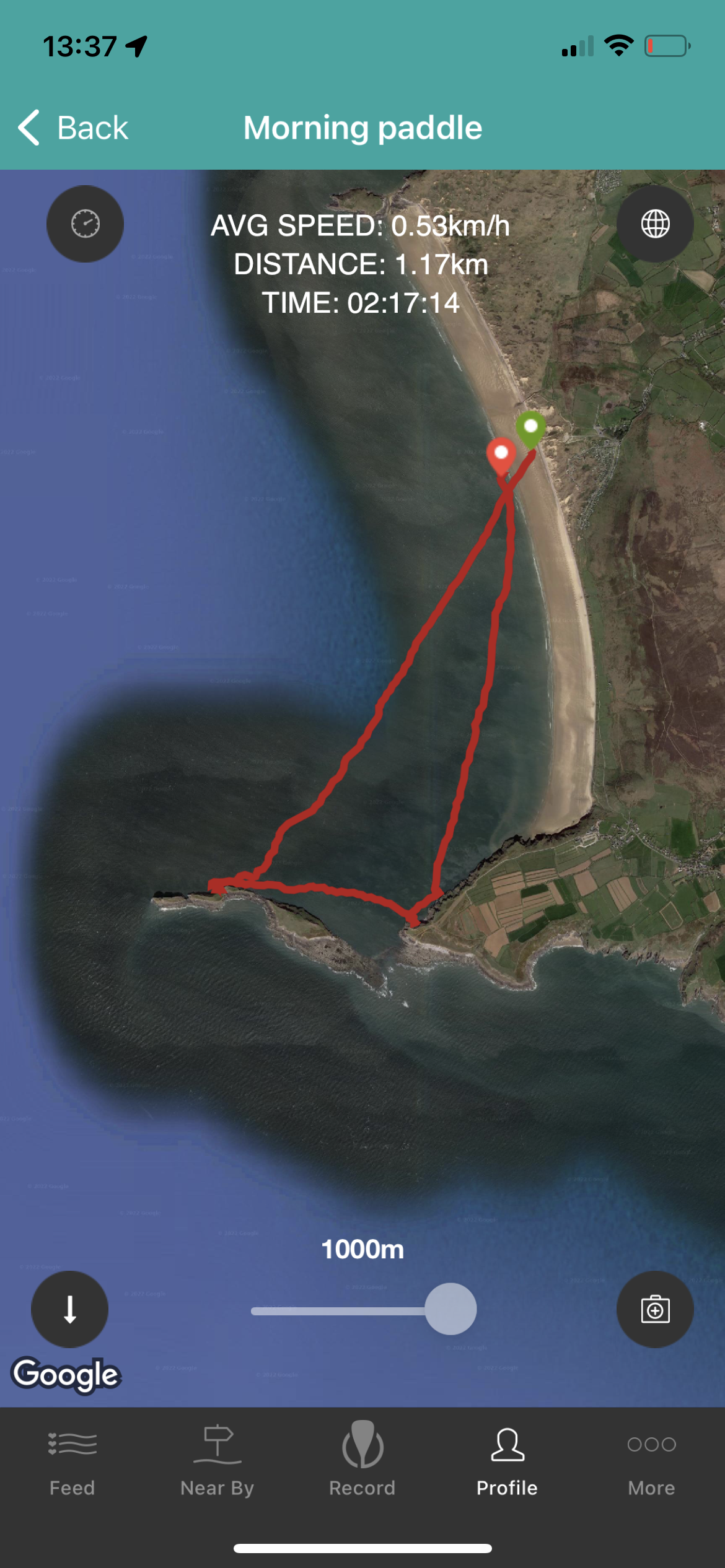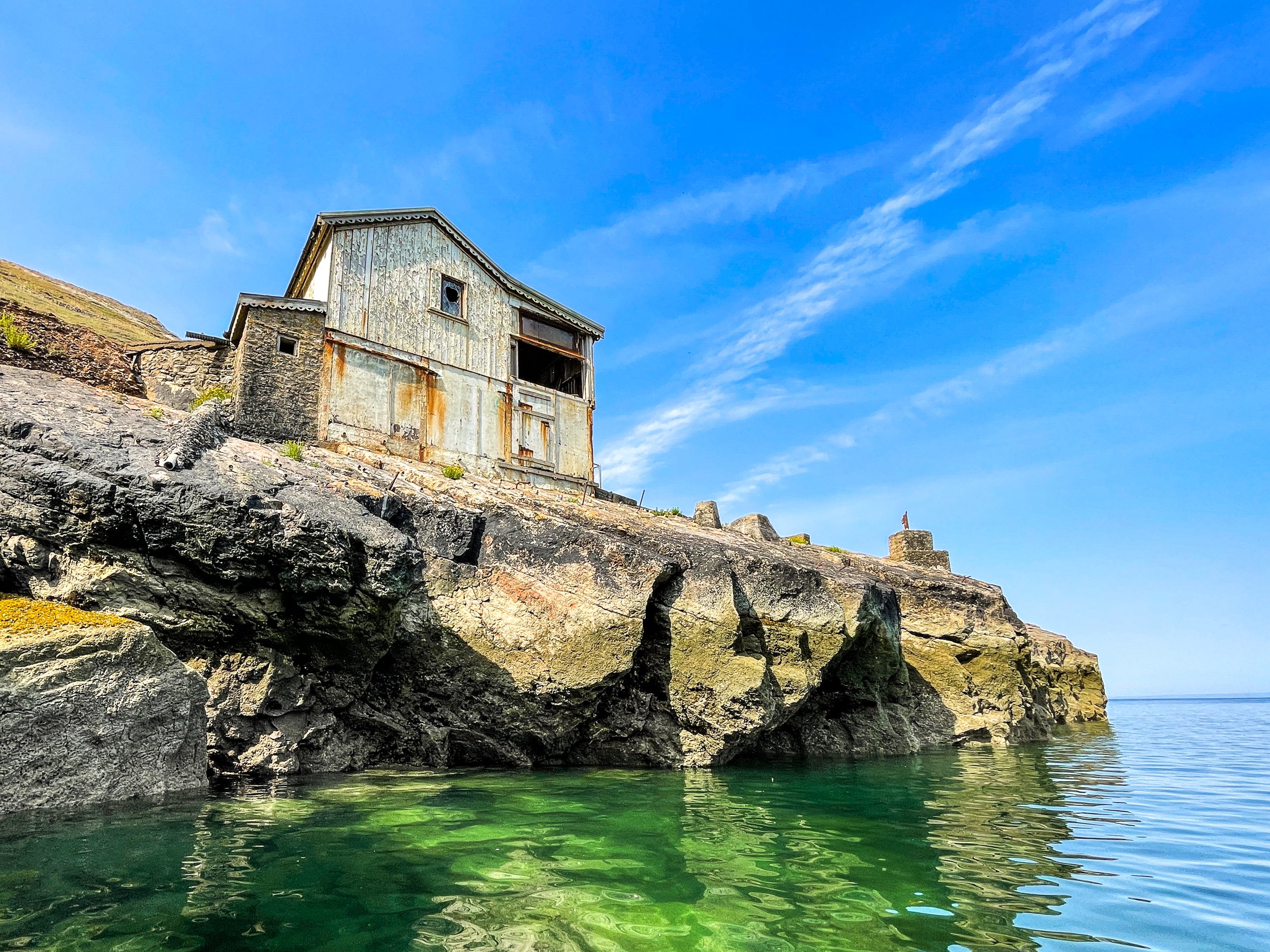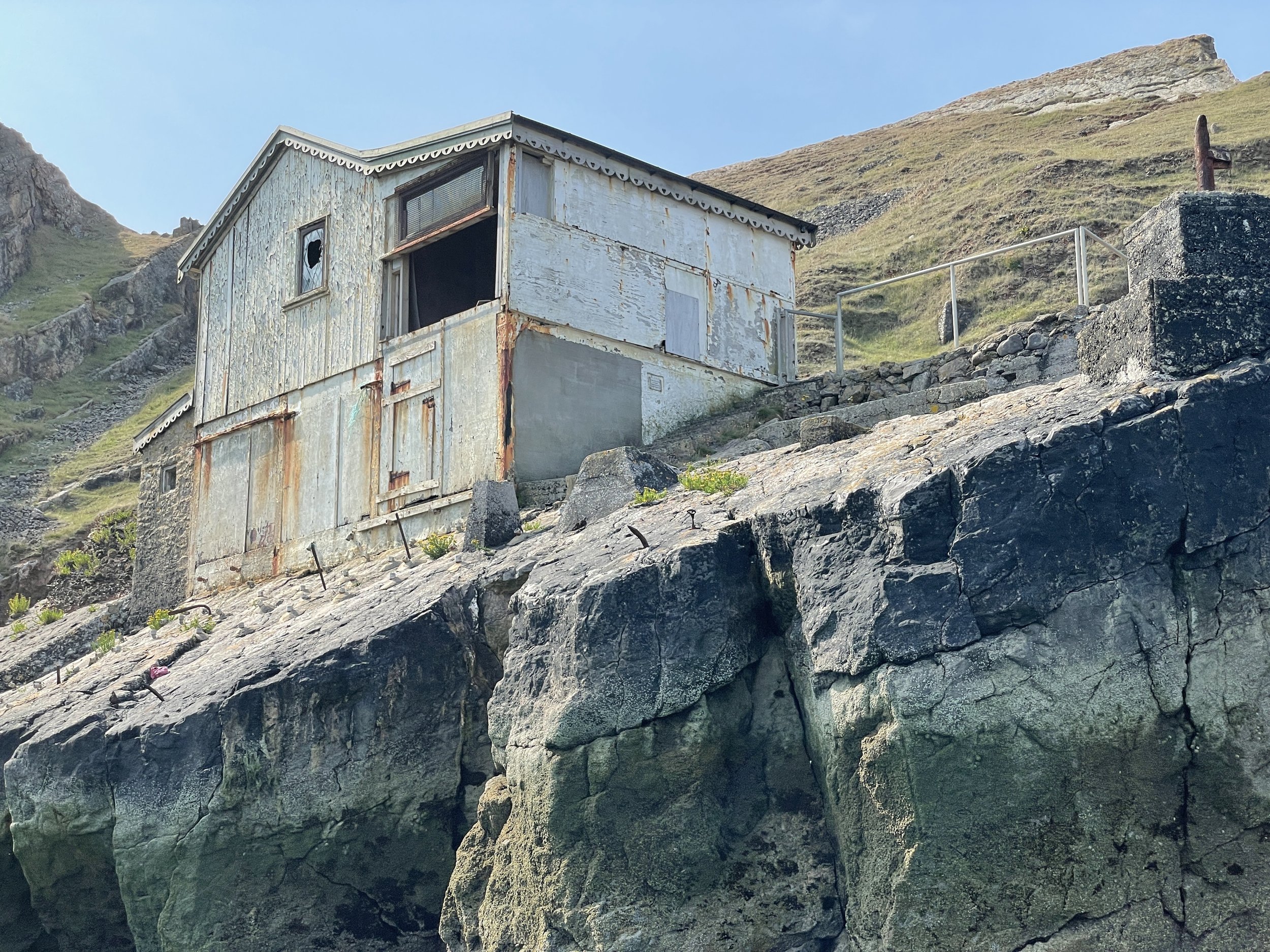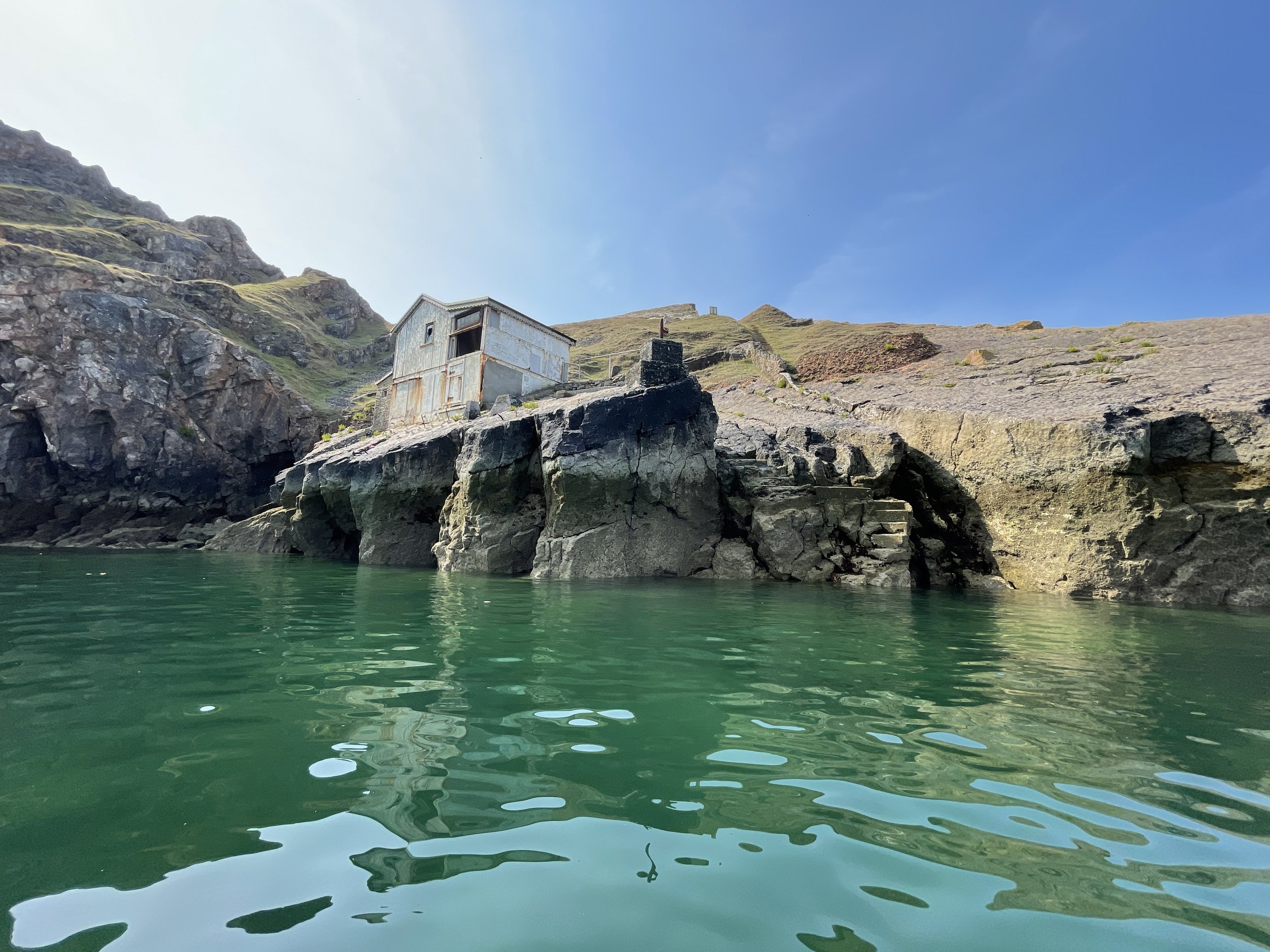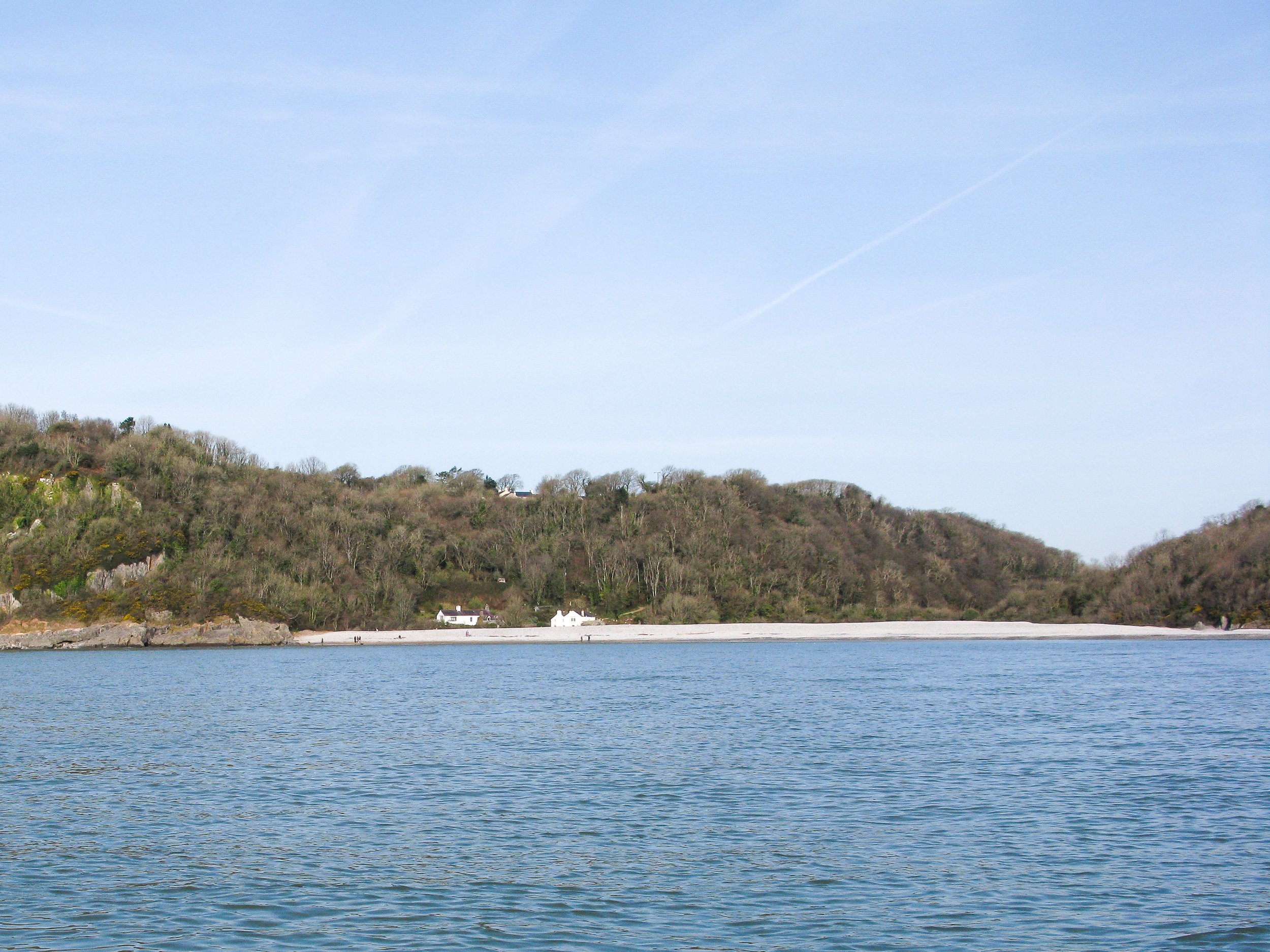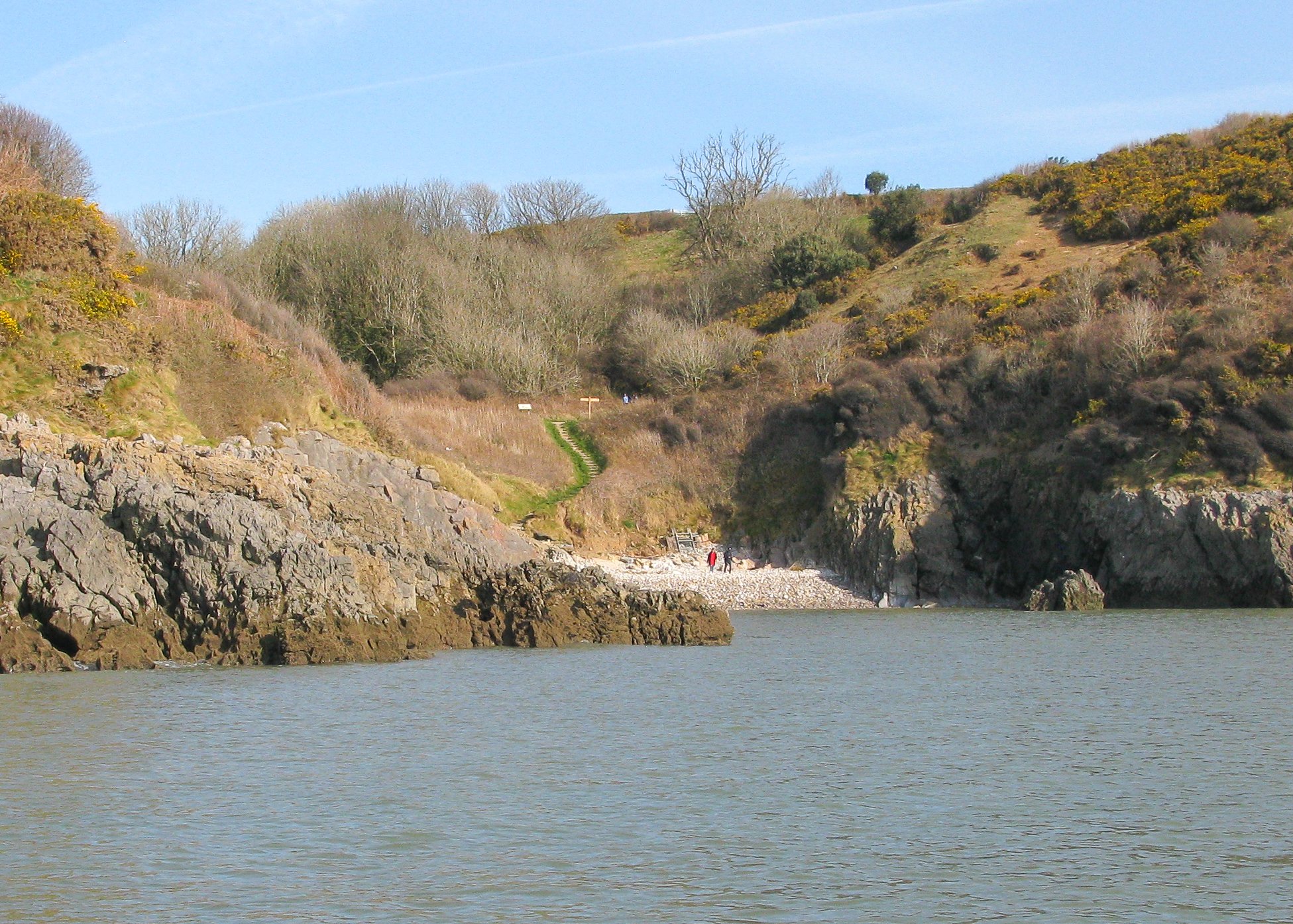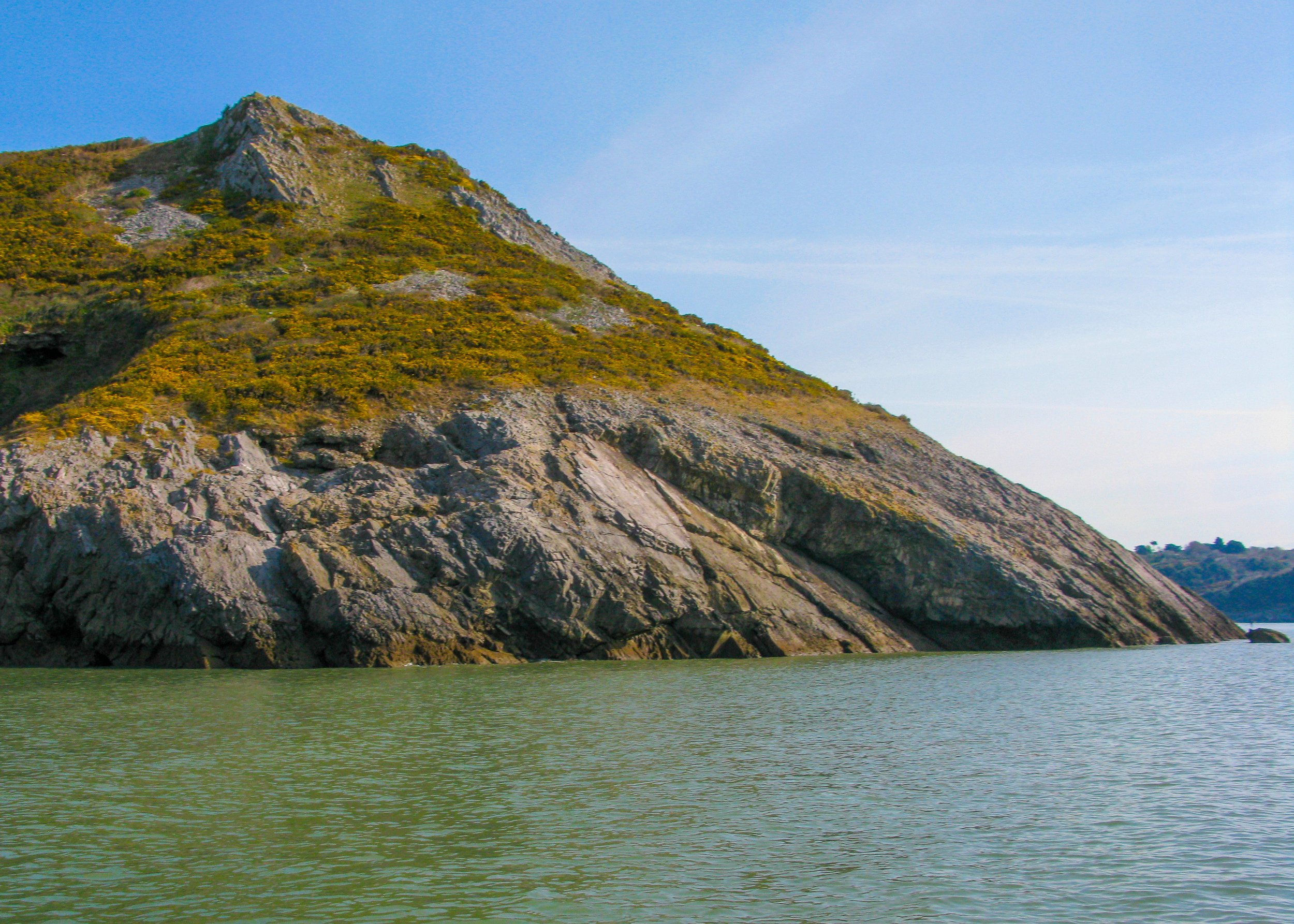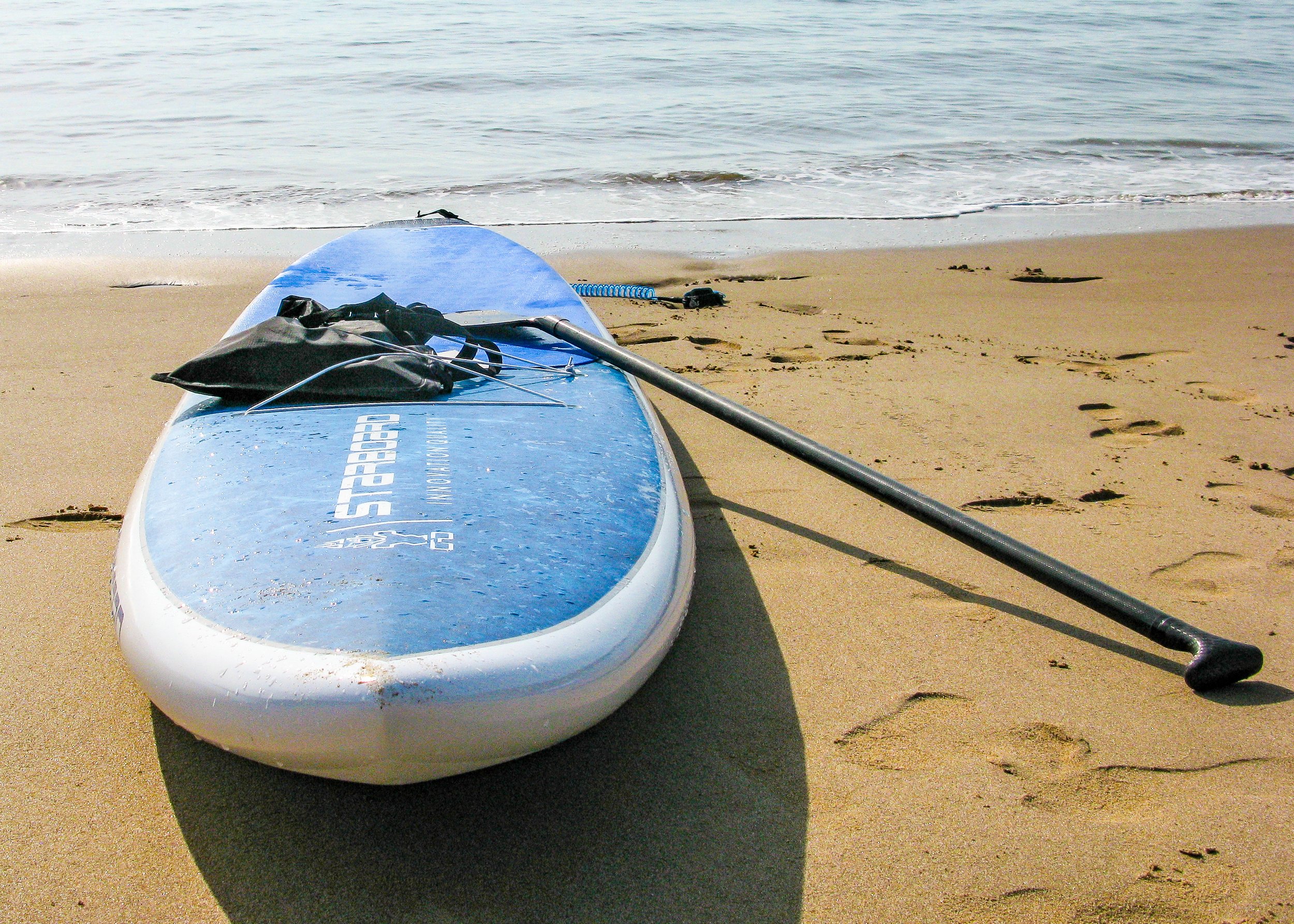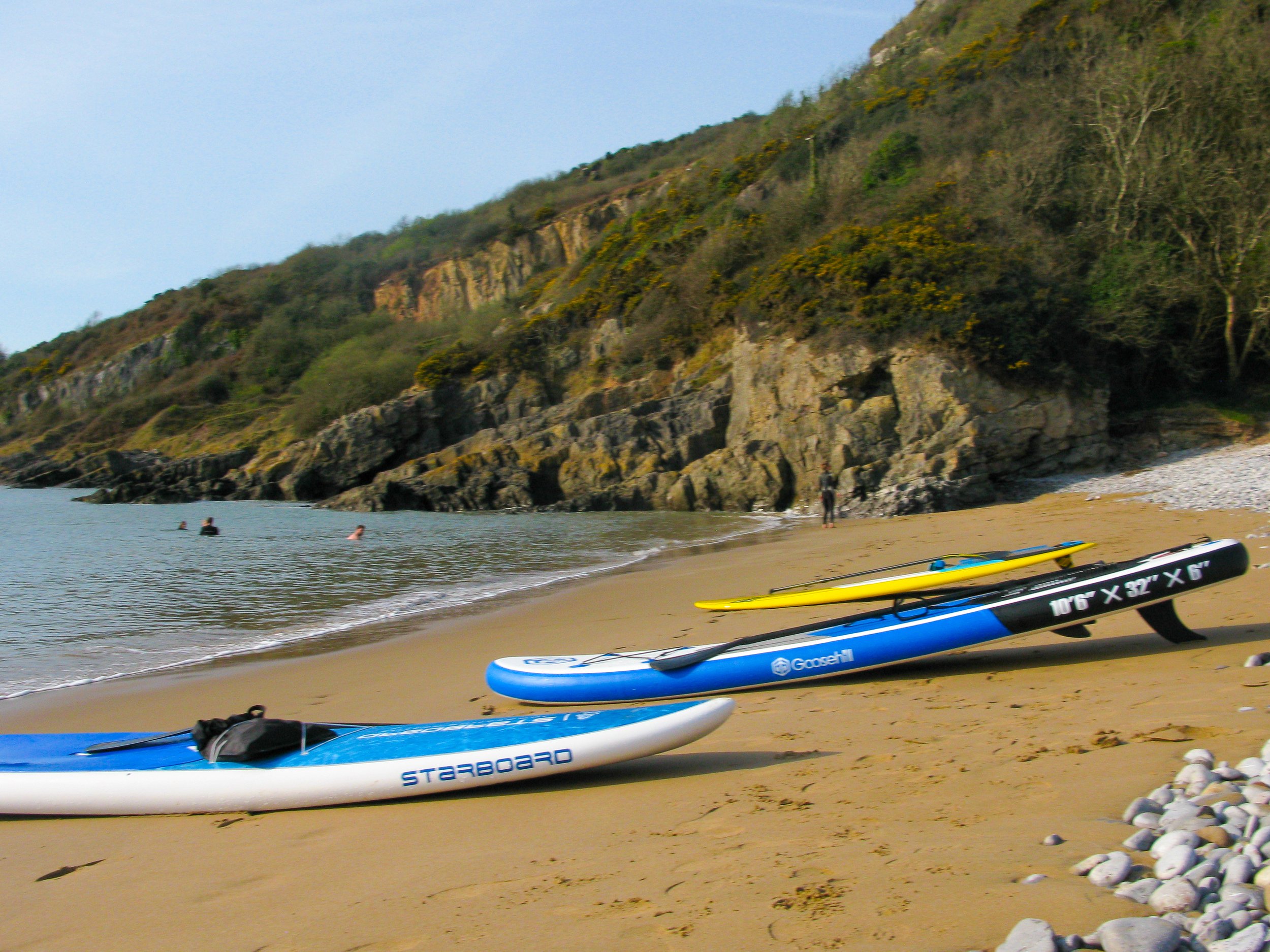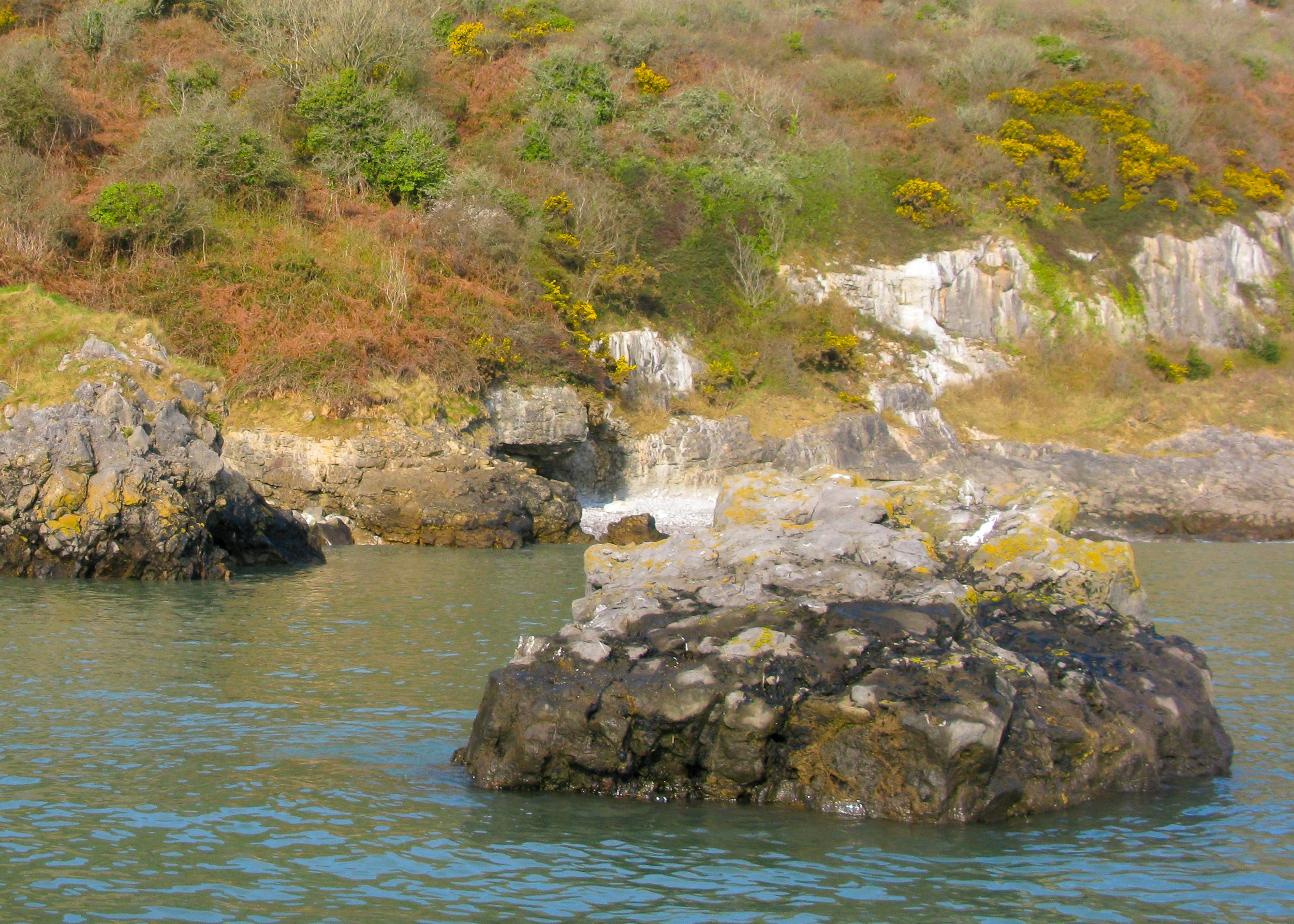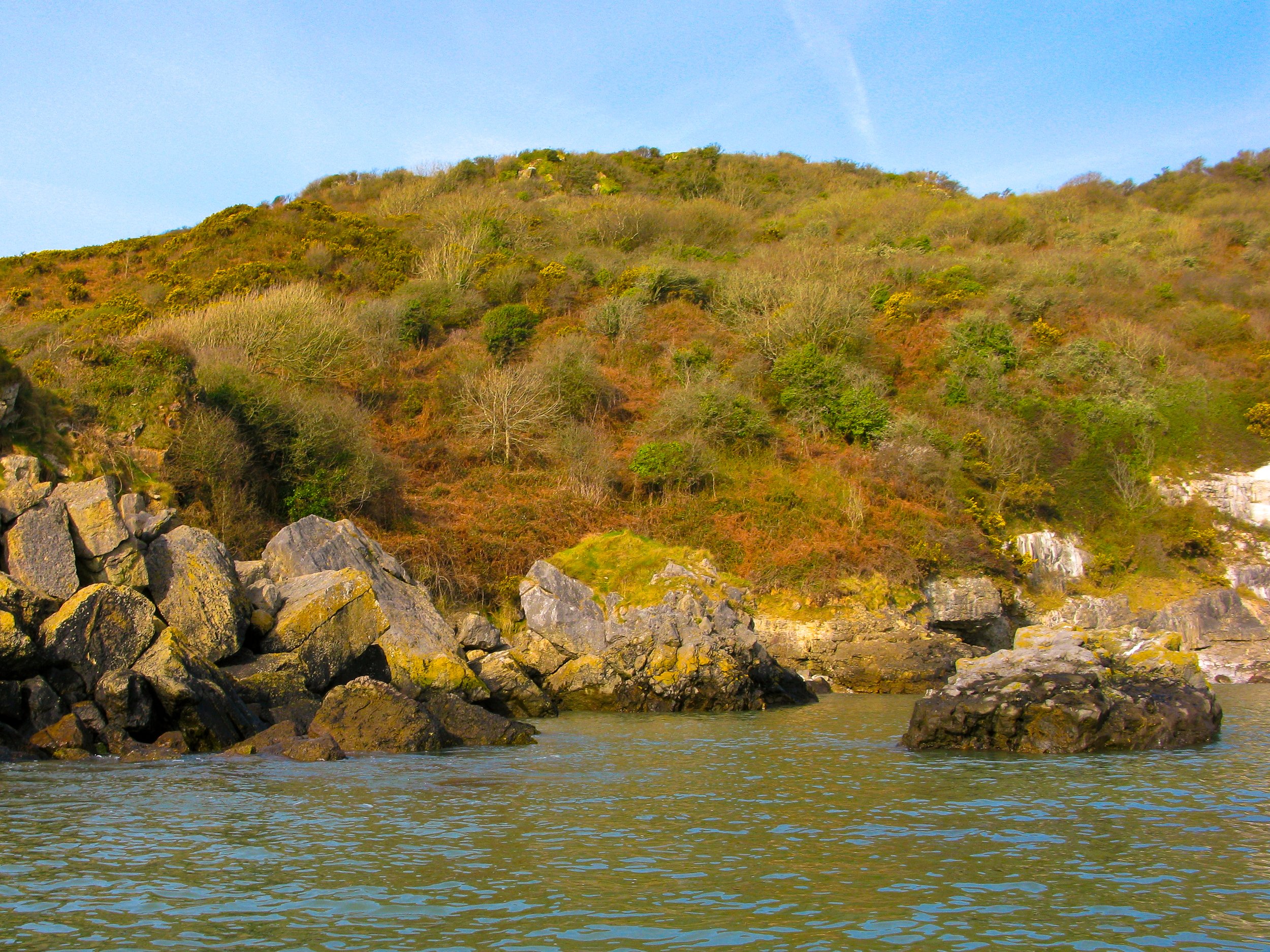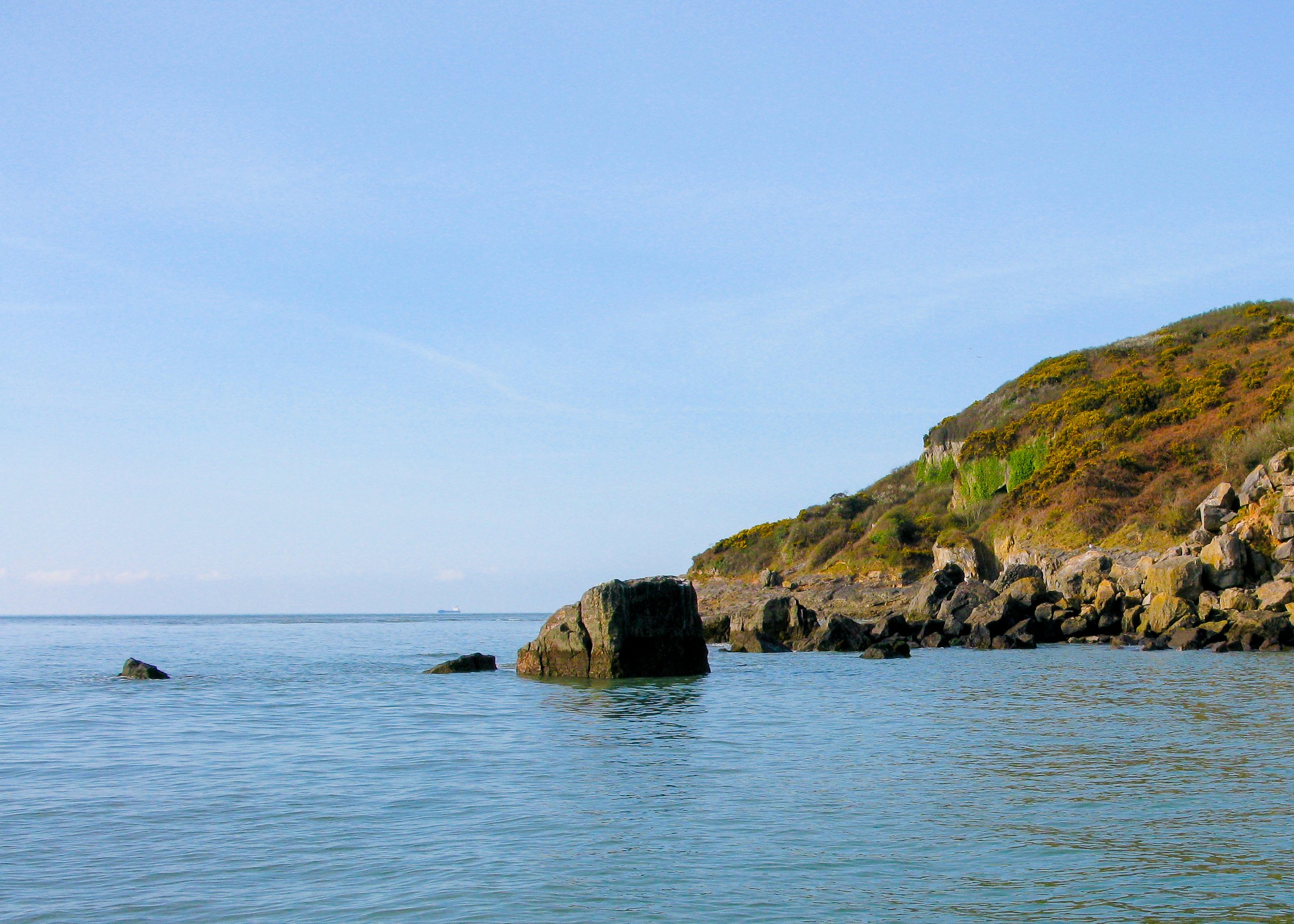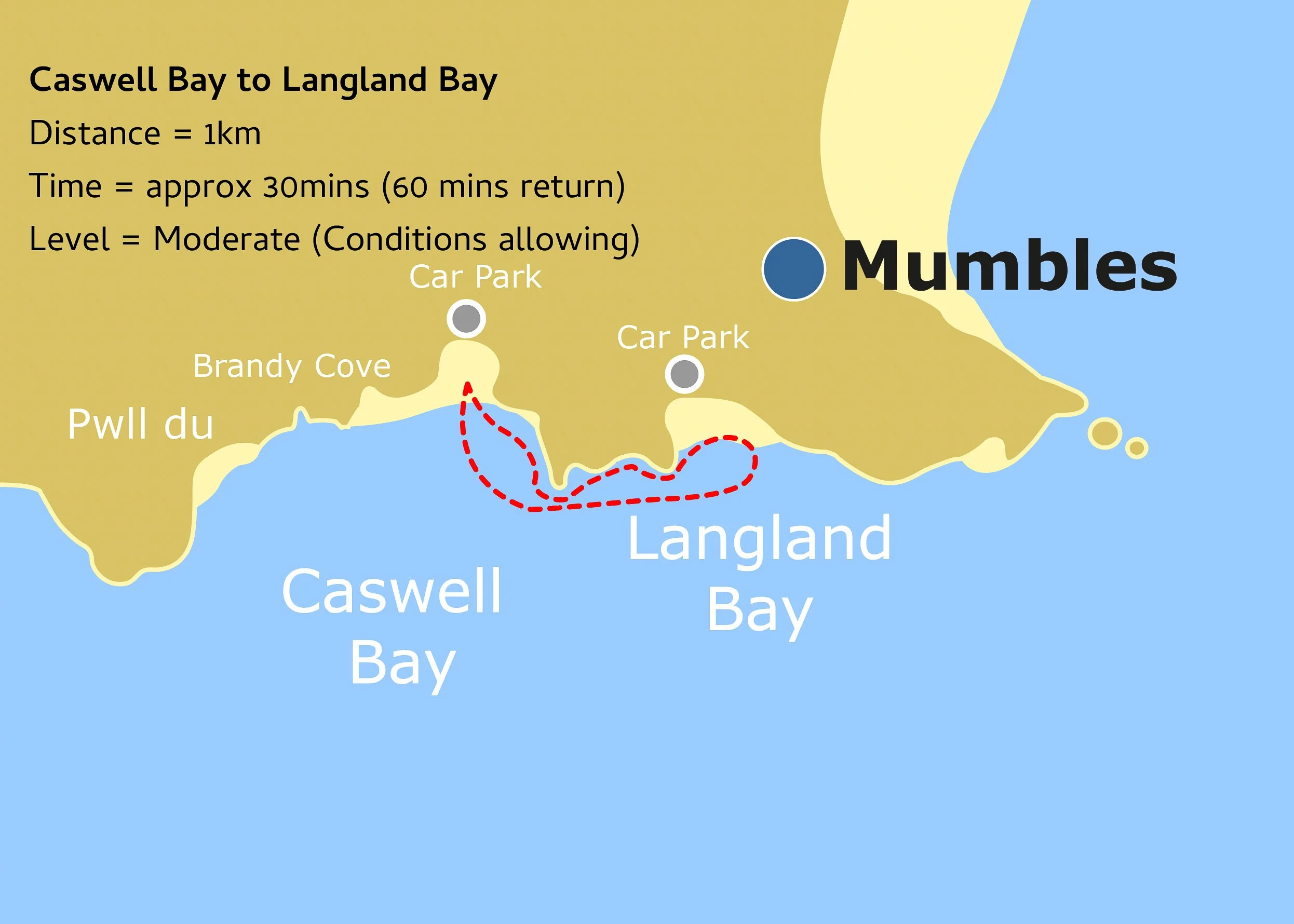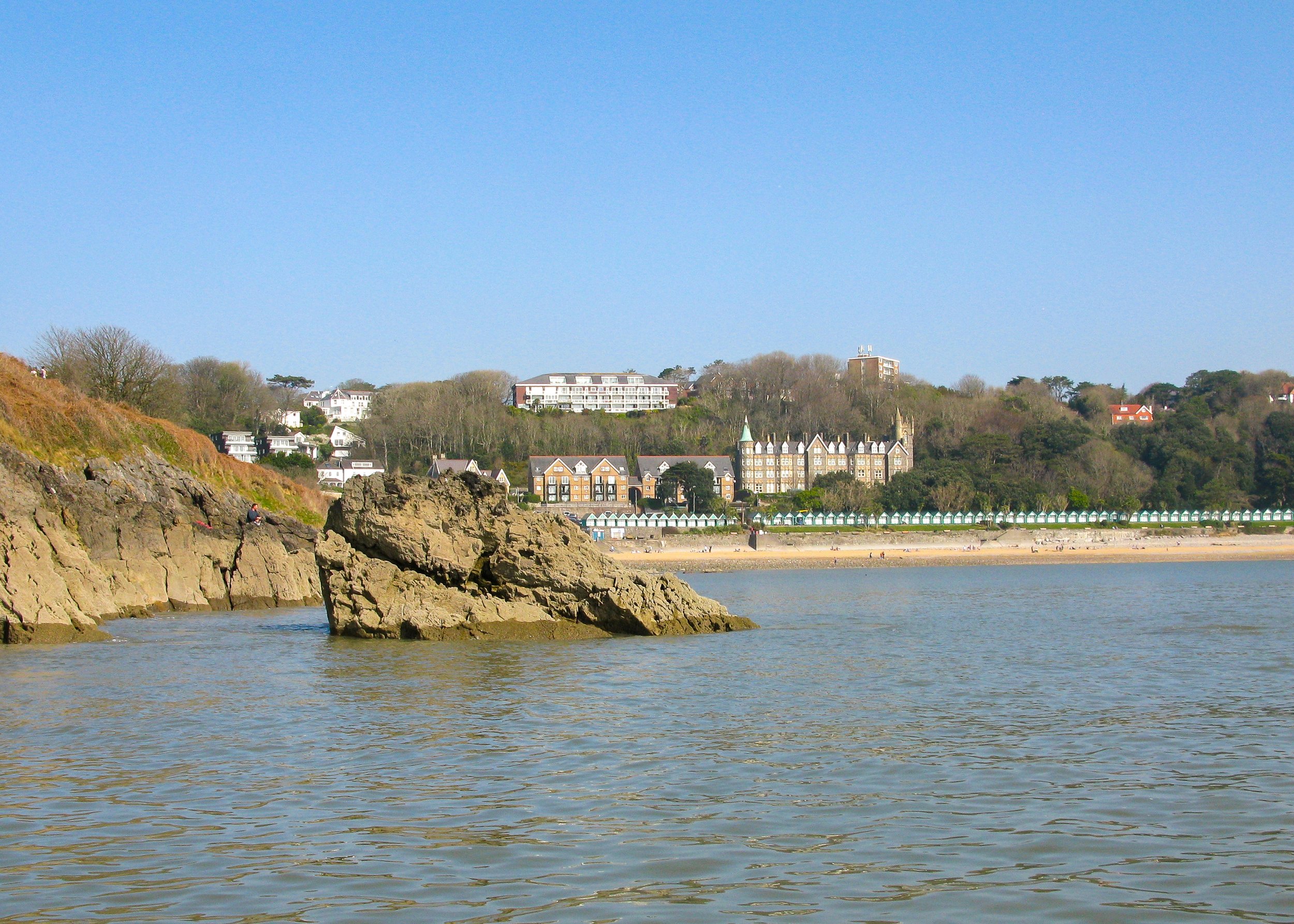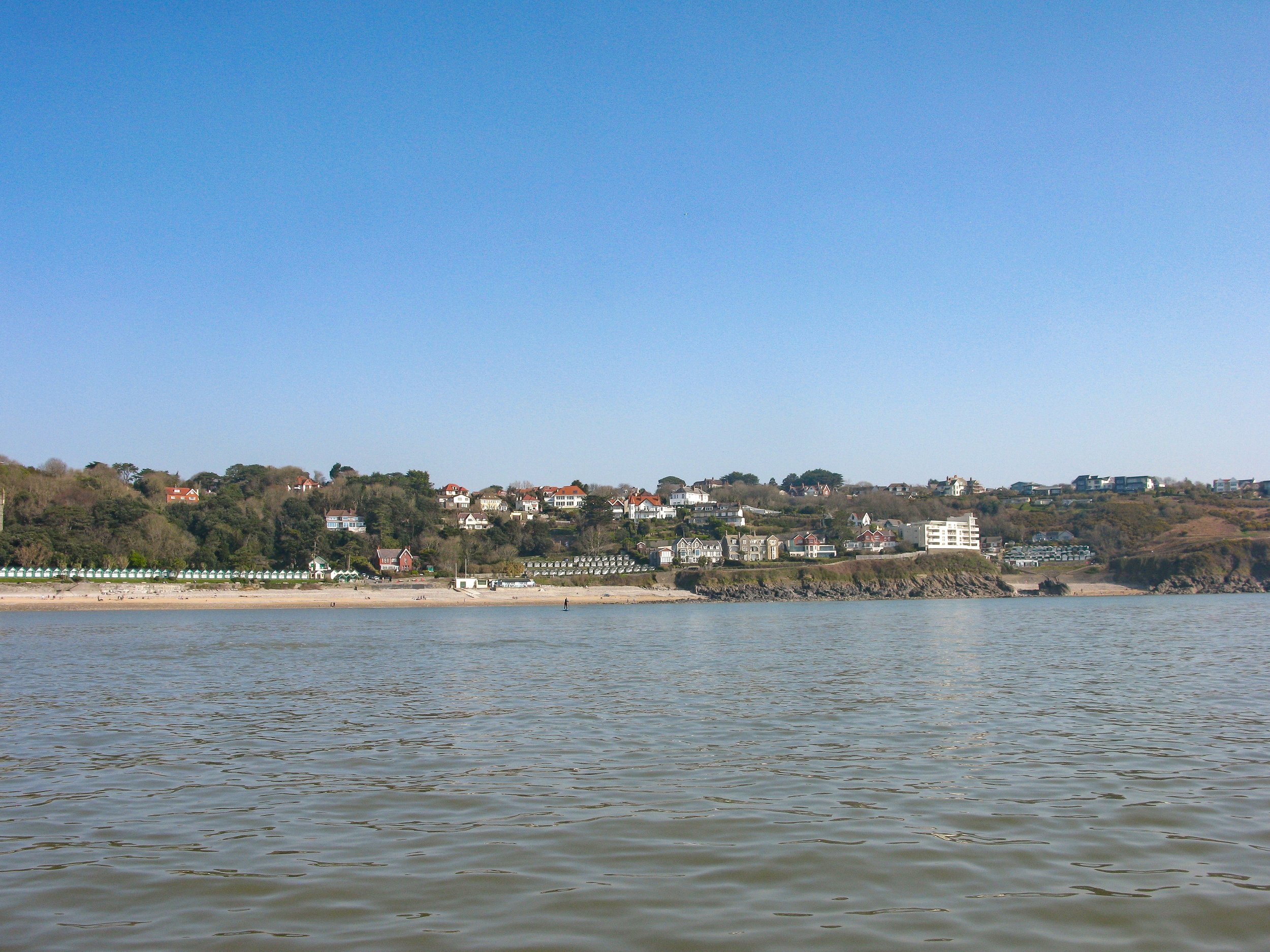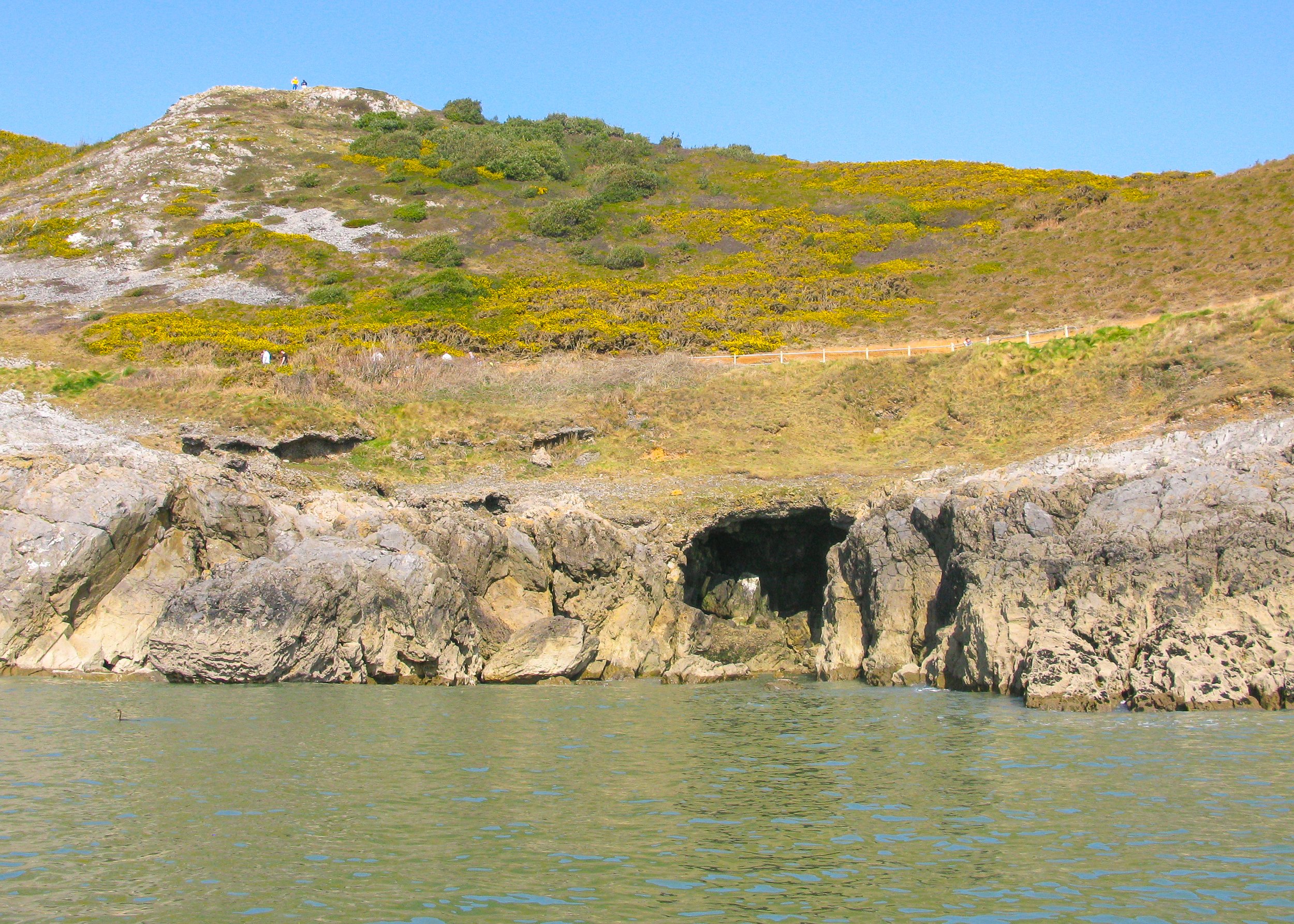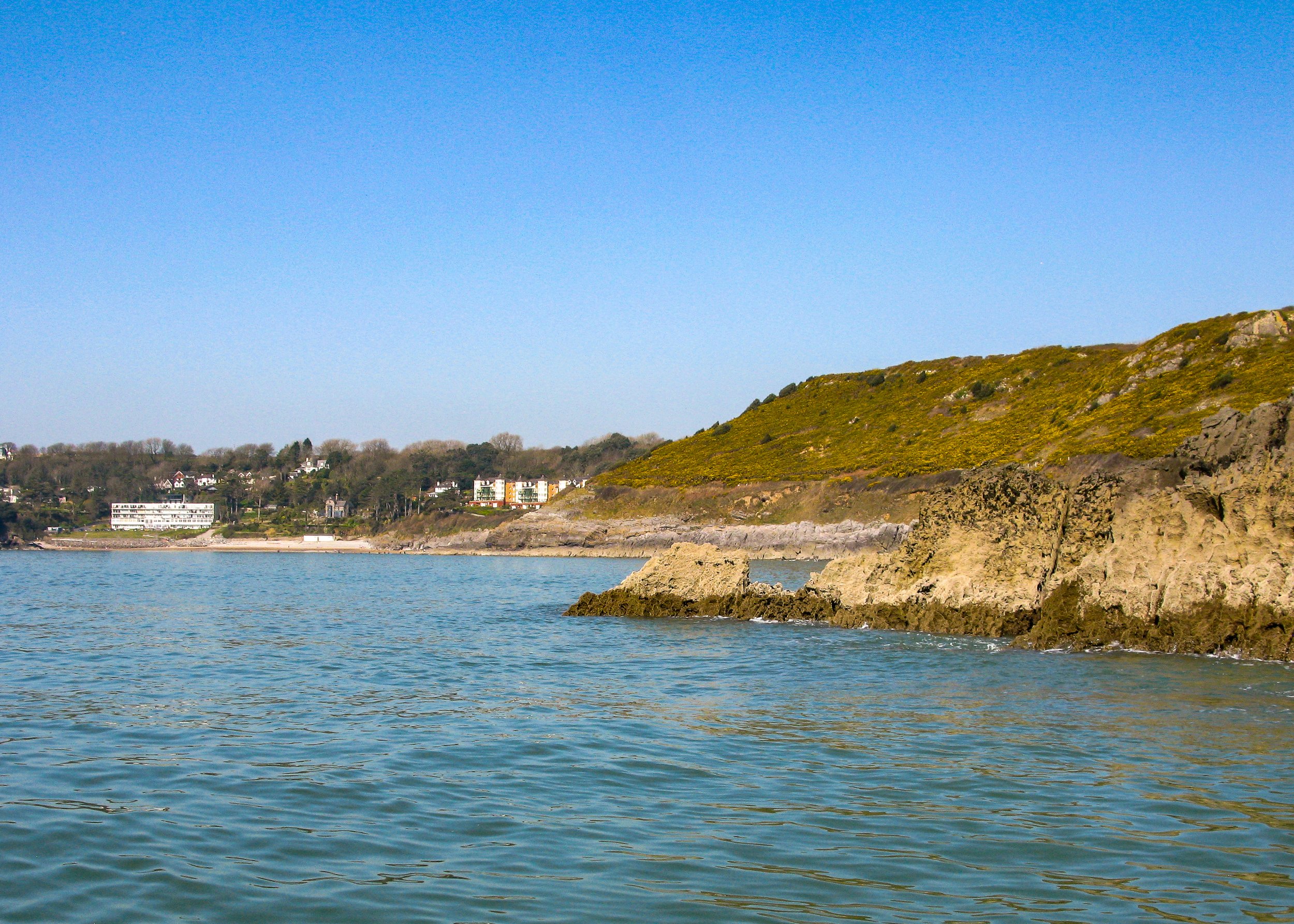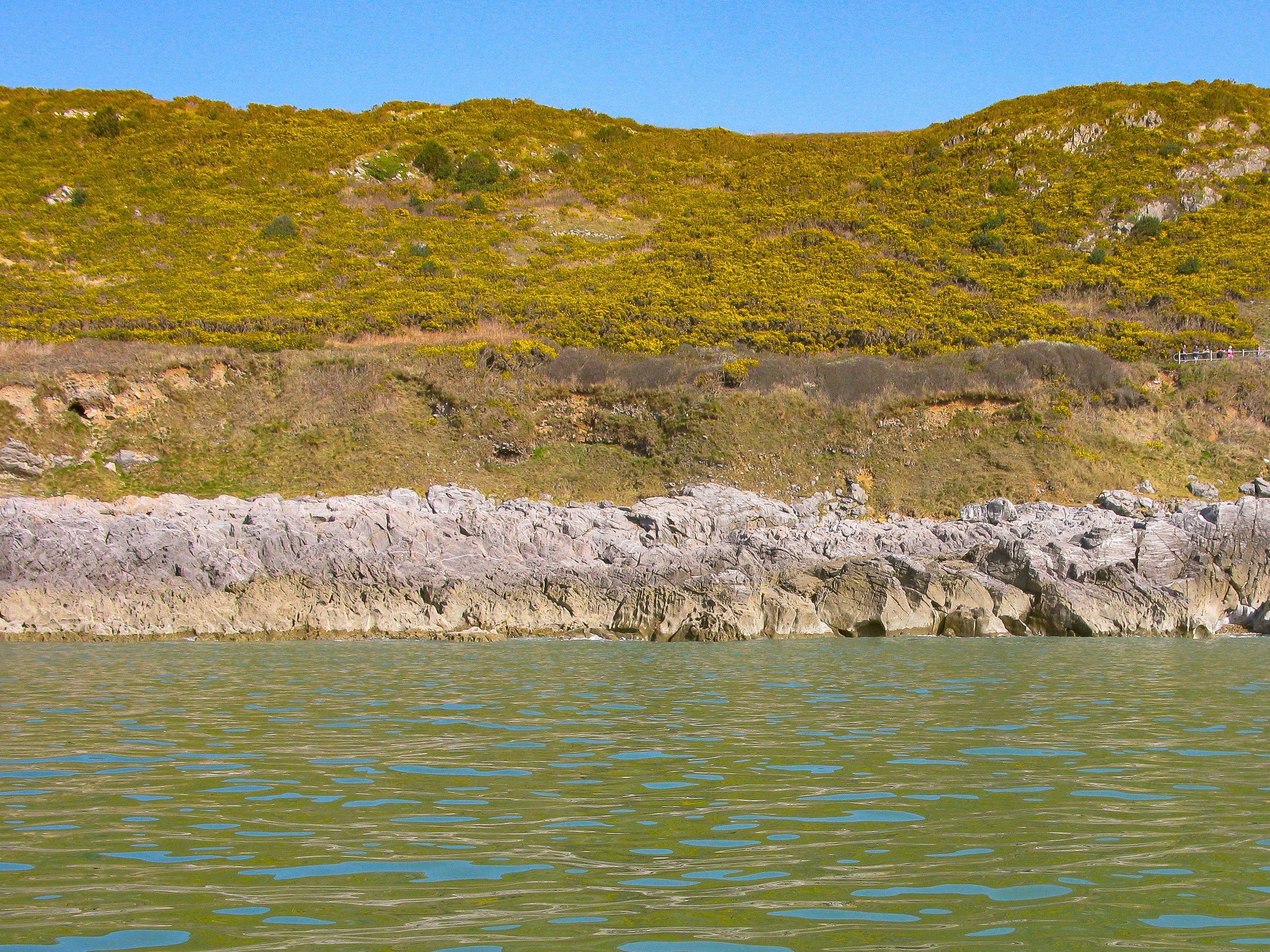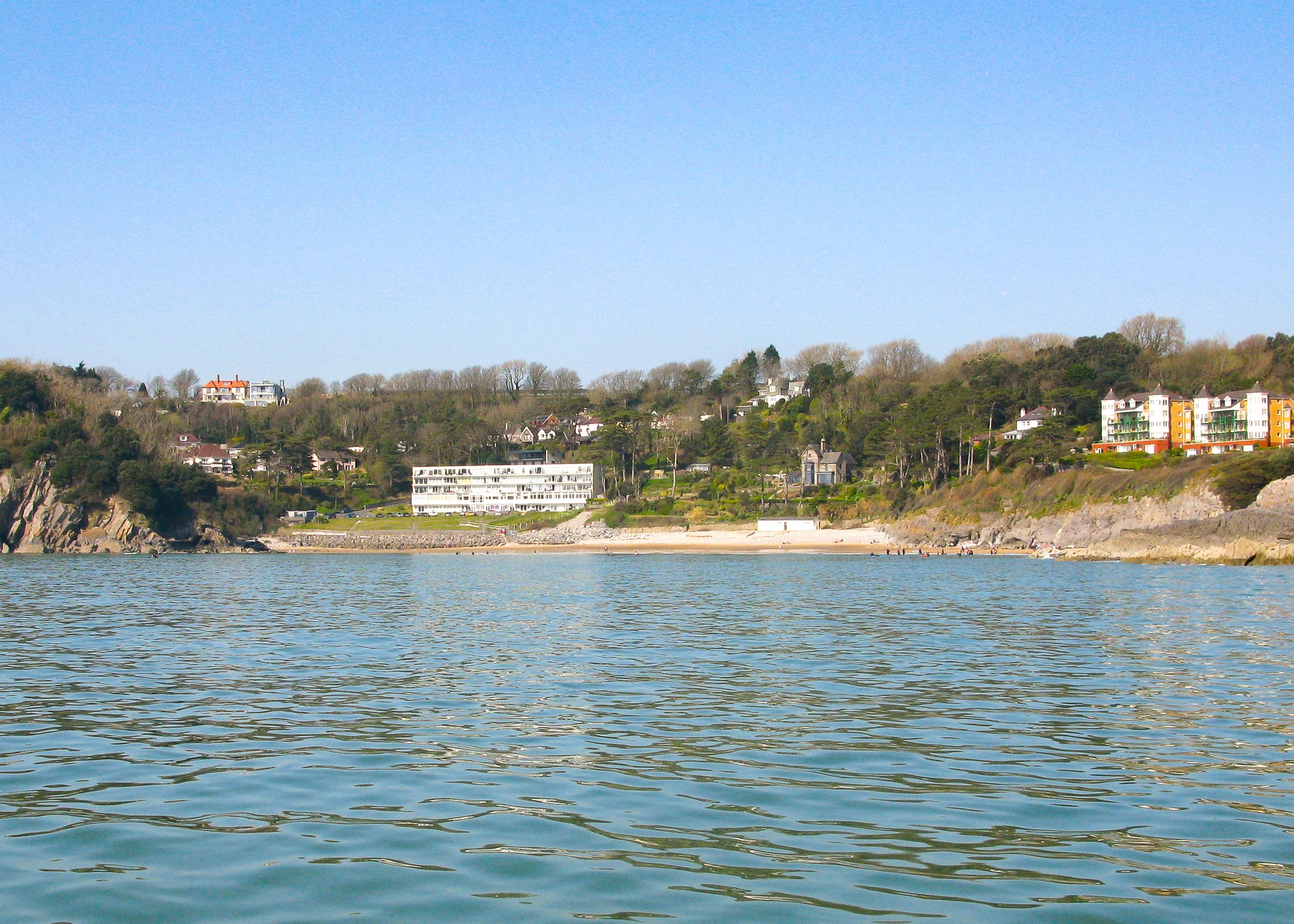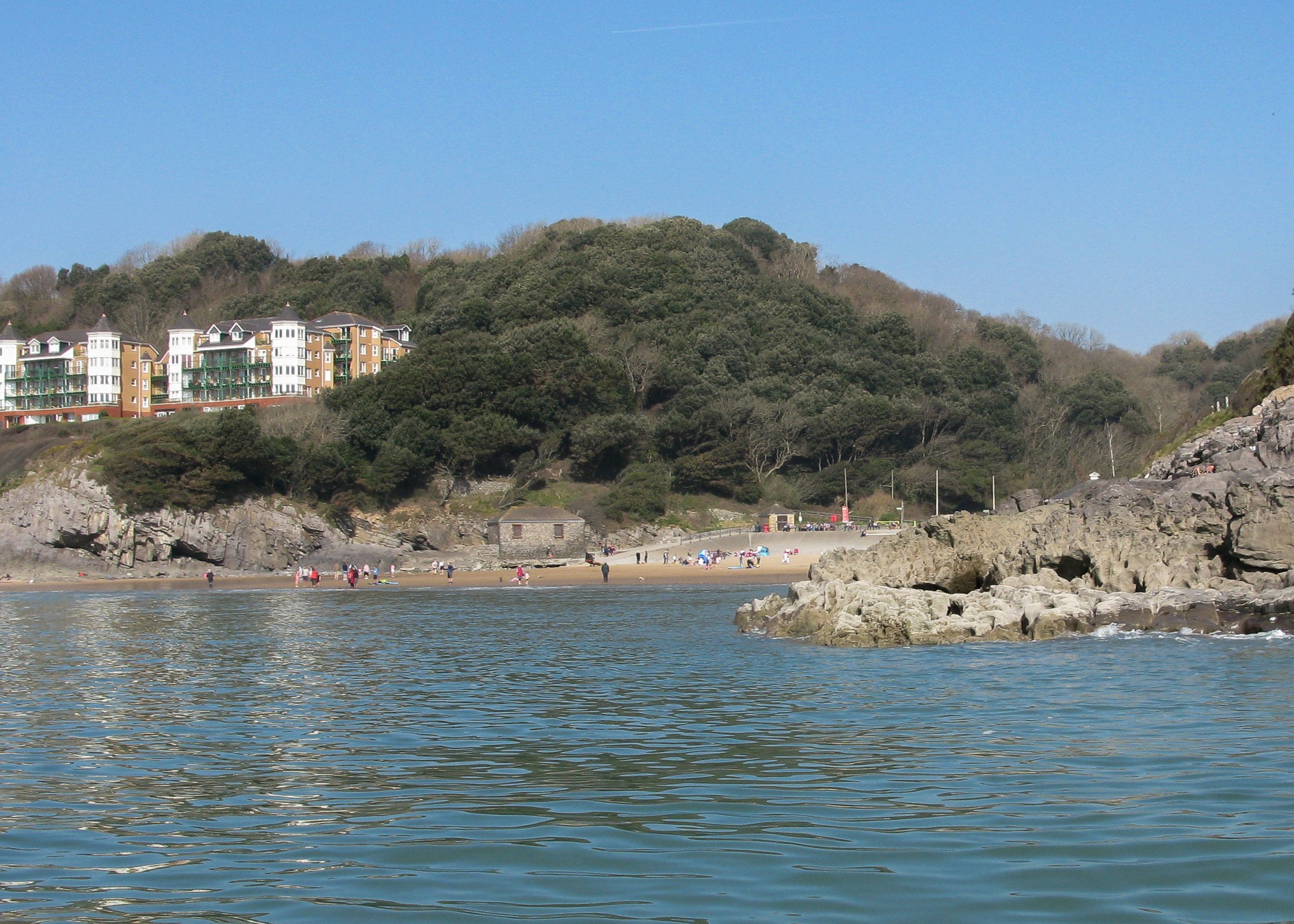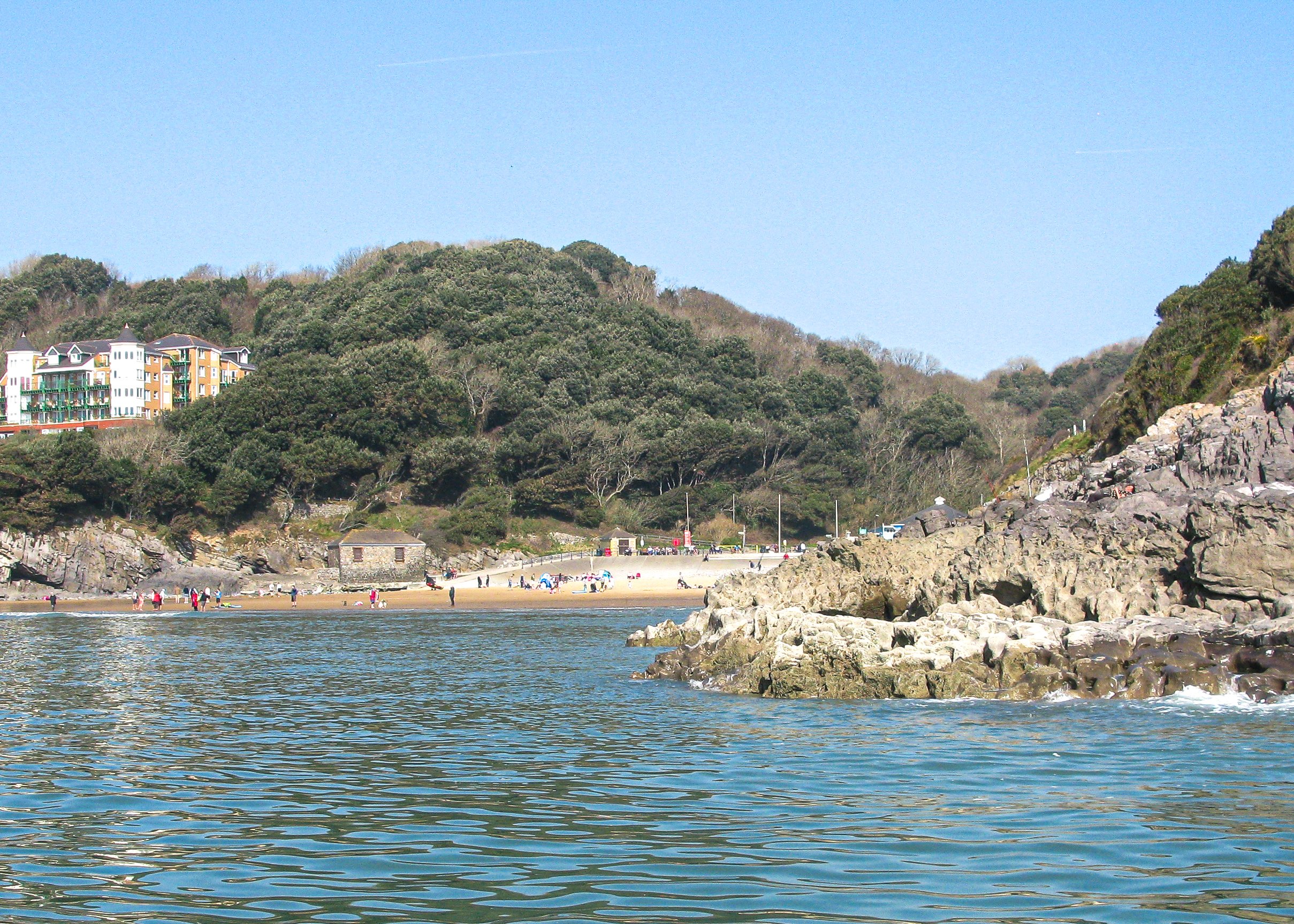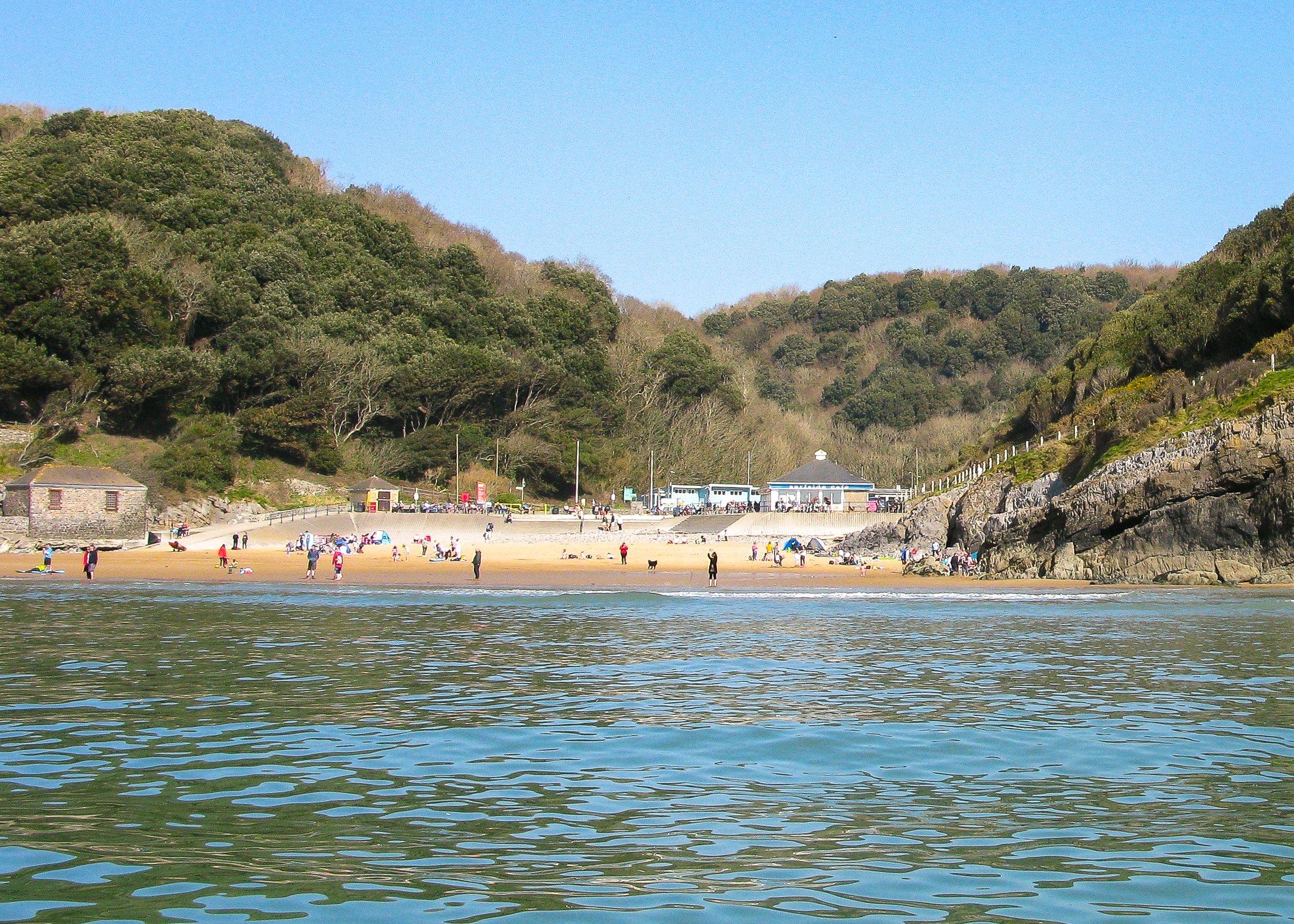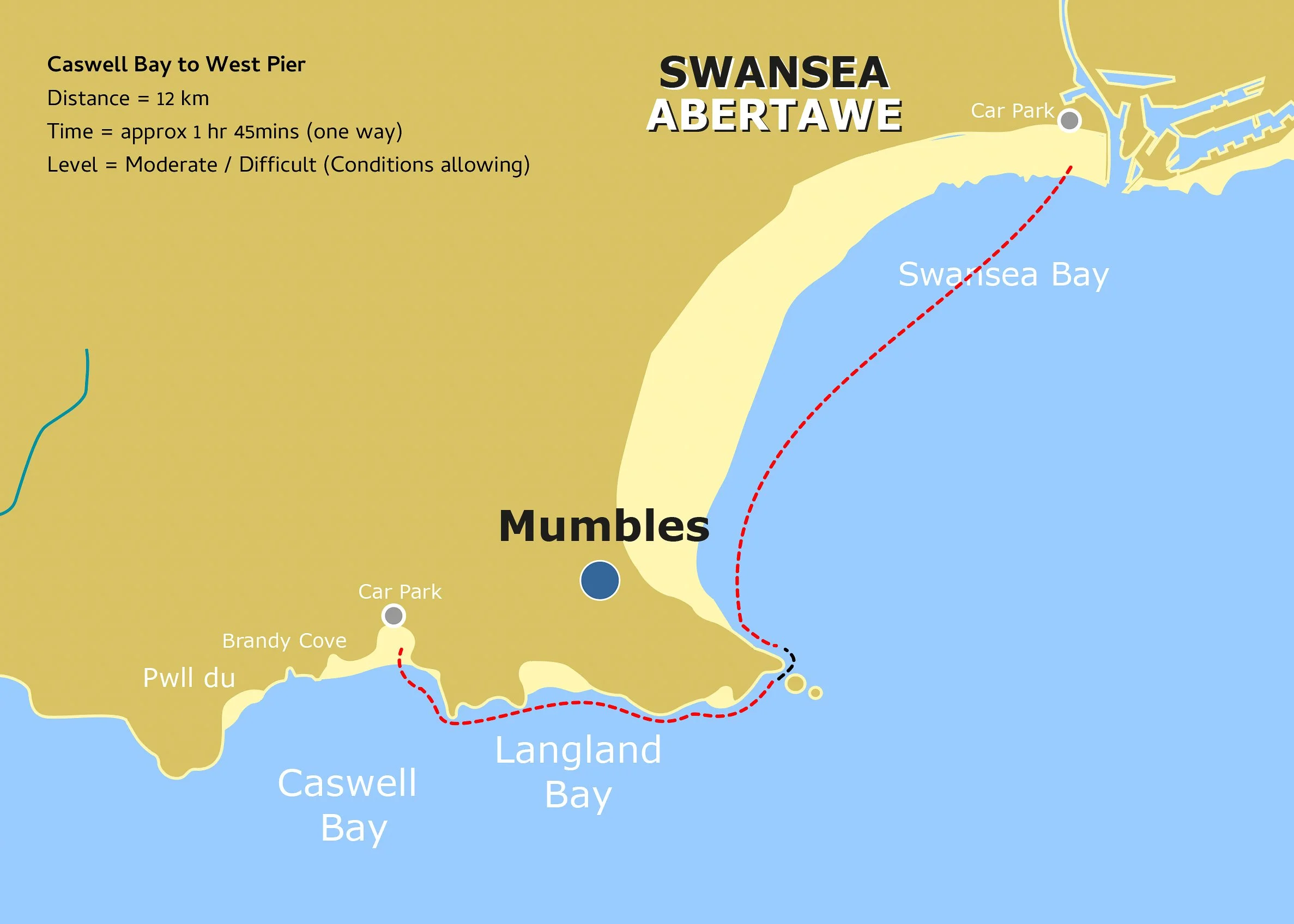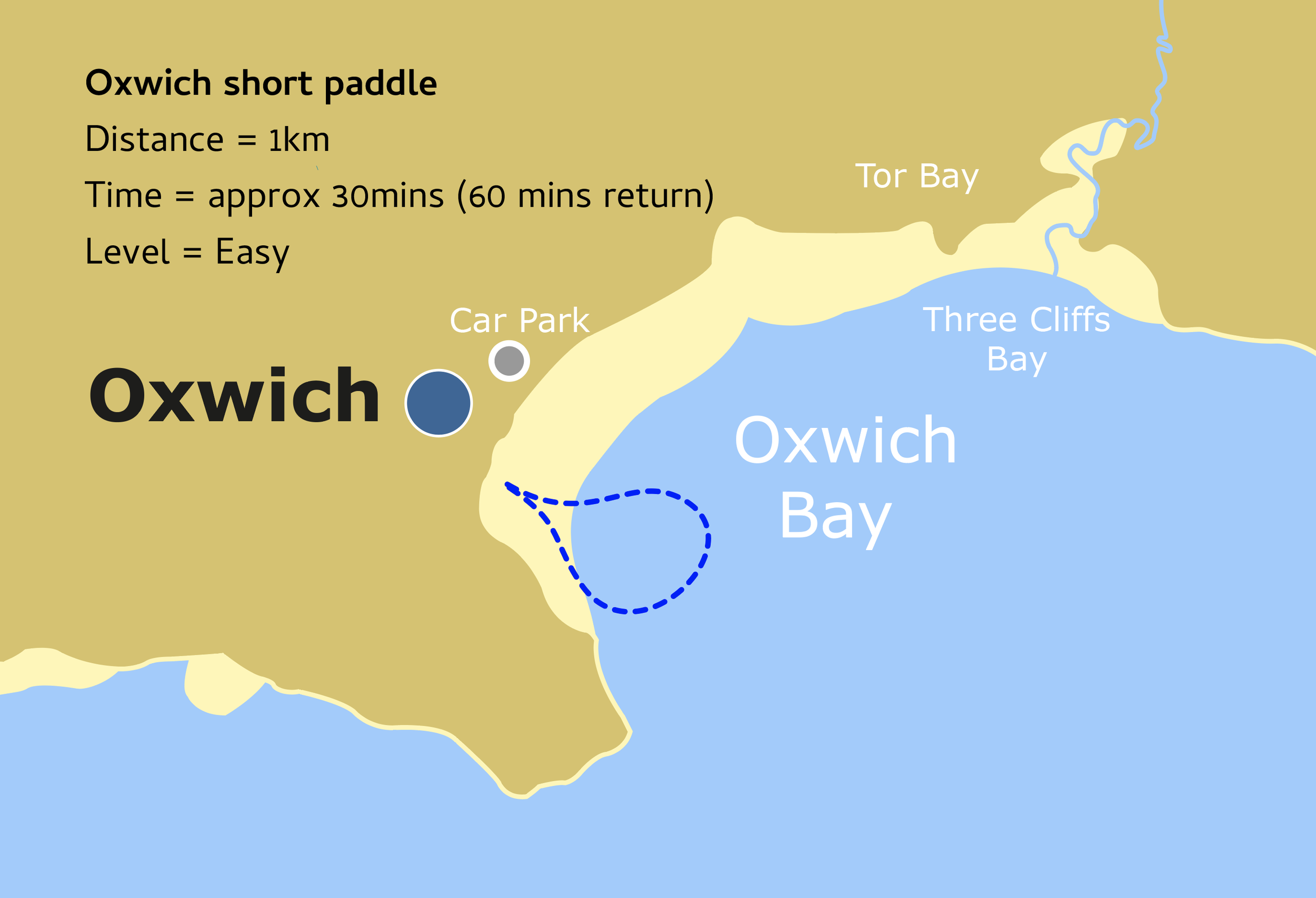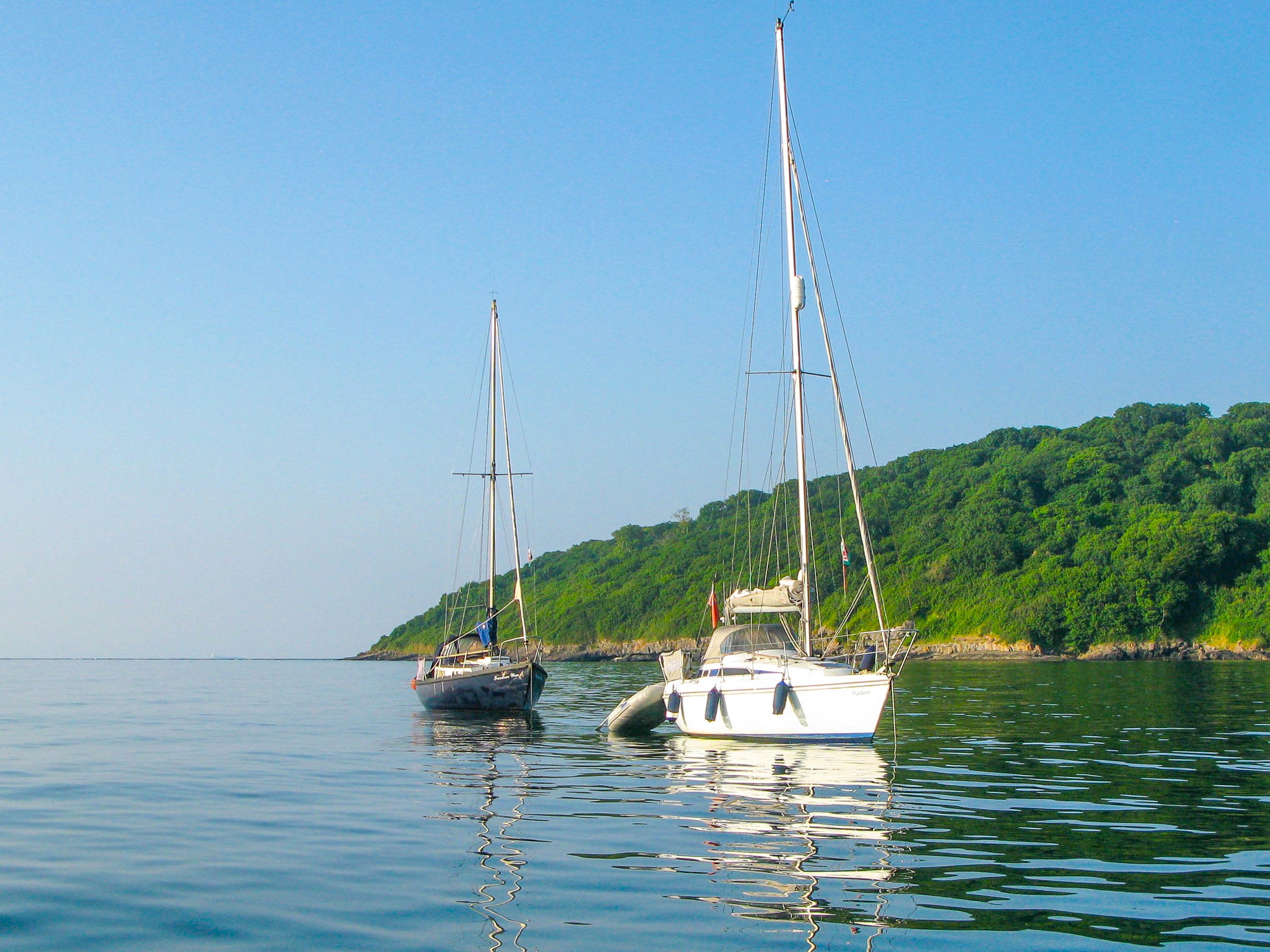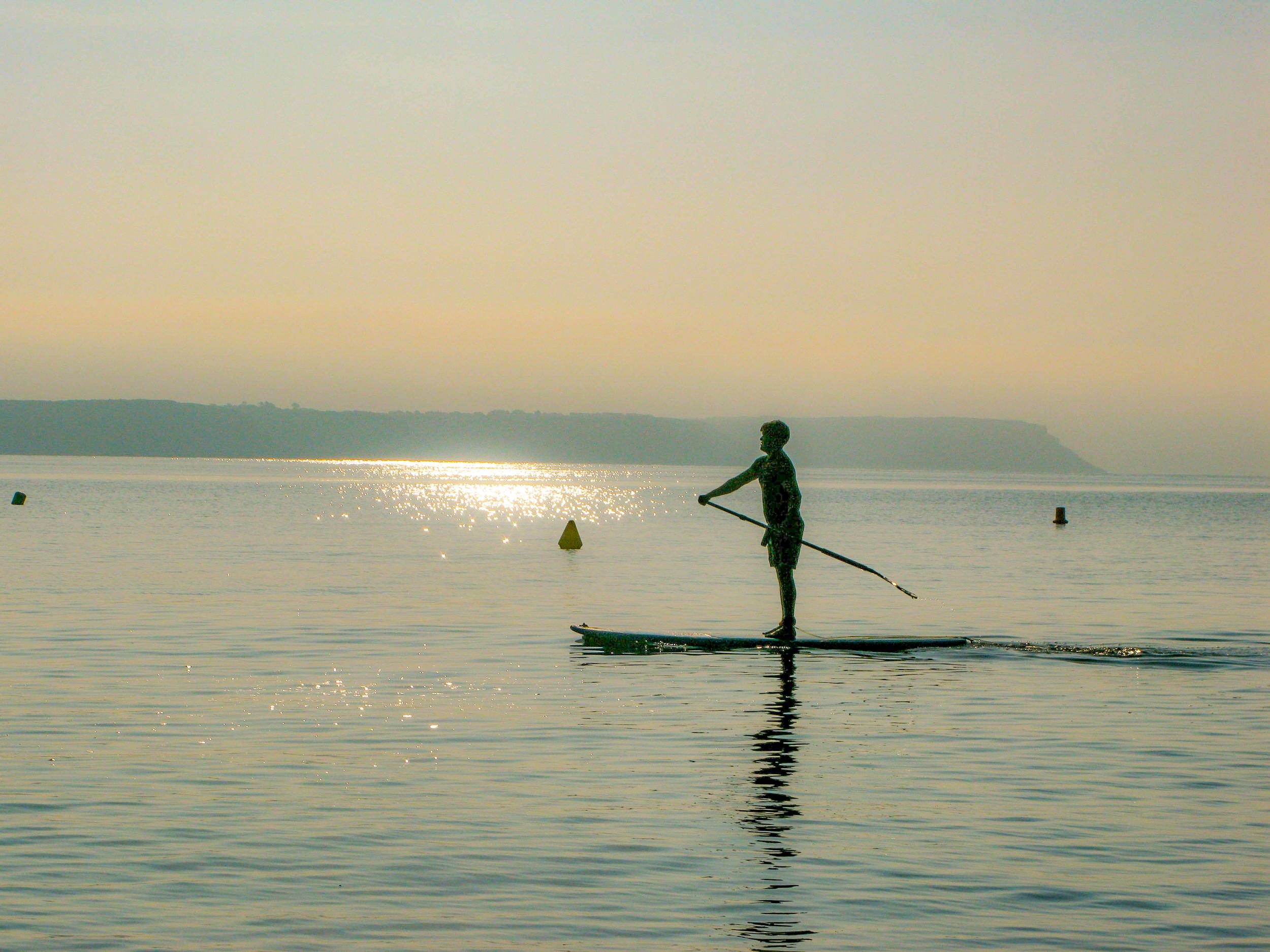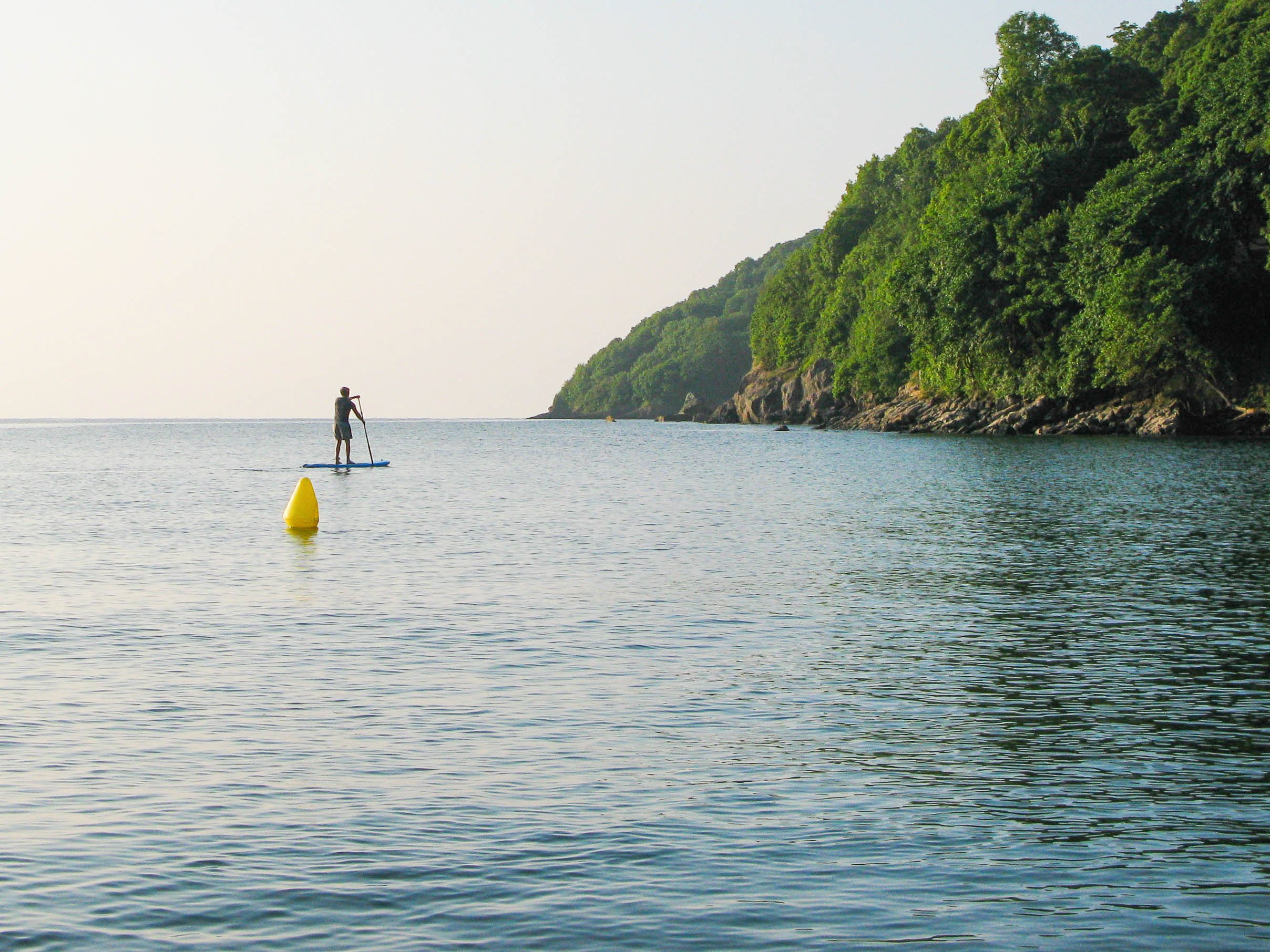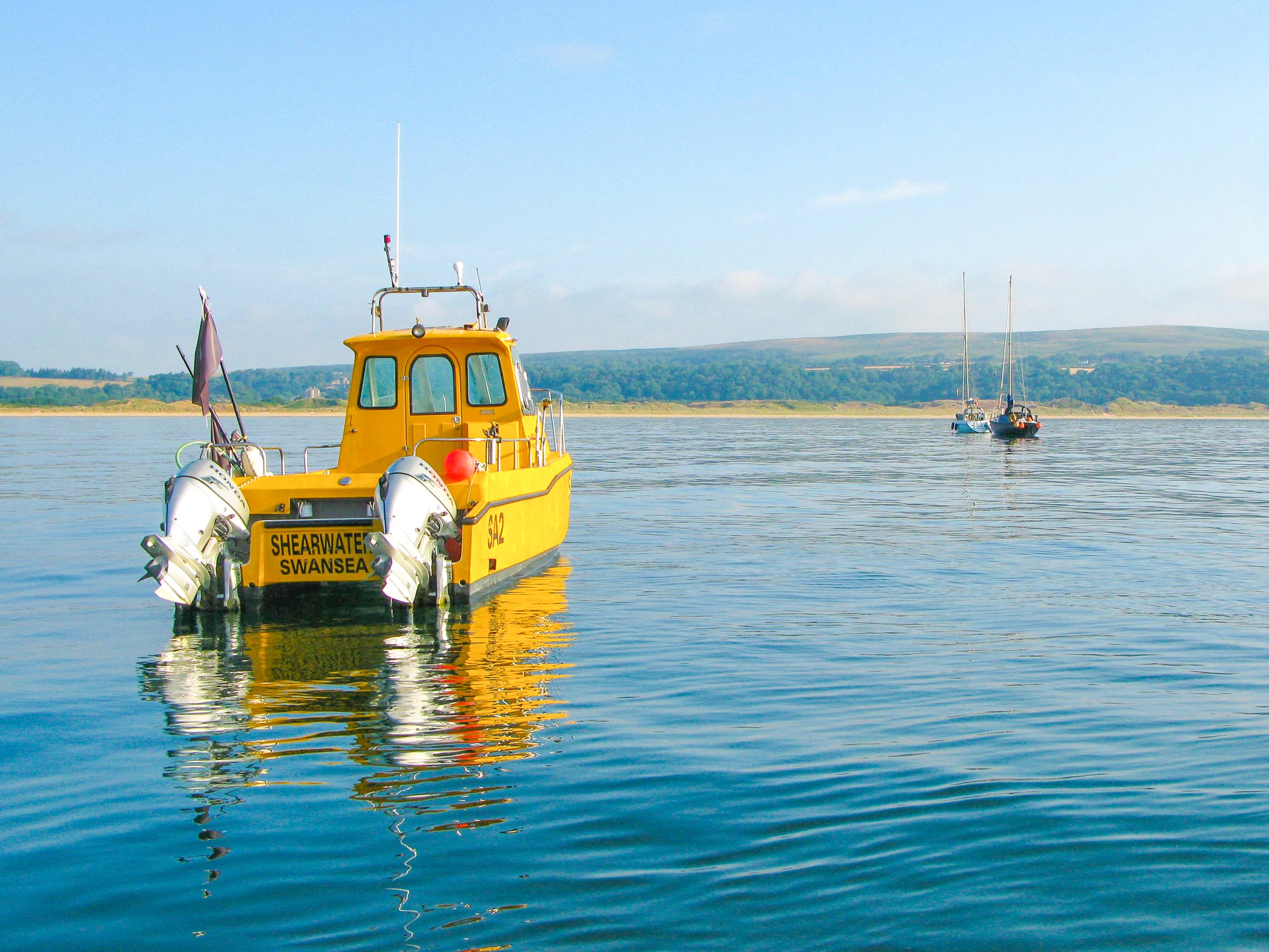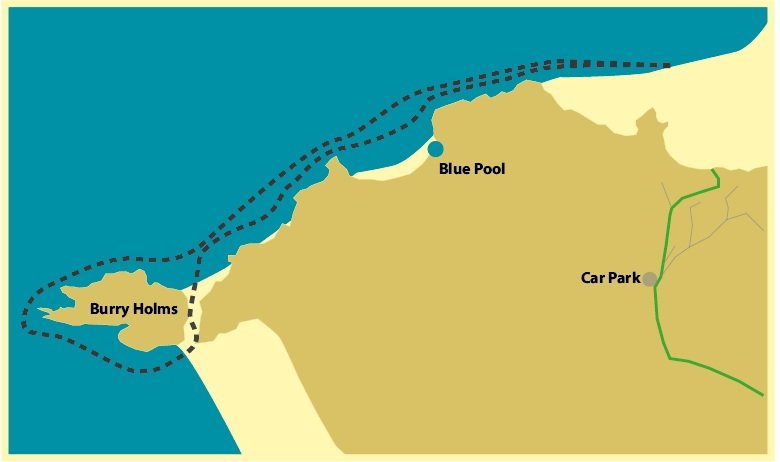Paddleboard Paradise
Wind and tide are important considerations when choosing where and when to paddle. Gower being a peninsula provides a good range of options within a relatively compact area. Many of the Gower beaches offer some shelter from wind and swell. On this page, you will find information that will help you to find the best paddle spots on any given day. The growth and popularity of paddleboarding have been significant and we have put together some guides to help you make the most of this exhilarating sport.
Stand-up paddleboarding (SUP) is a fantastic way to improve your overall fitness and build strength and endurance. Here are some of the key benefits of paddleboarding for strength and conditioning:
Full-body workout: Paddleboarding involves using your arms and core muscles to paddle and steer, while also engaging your legs and feet to maintain balance and stability. This means that you're getting a complete workout that challenges your entire body.
Low-impact exercise: Paddleboarding is a low-impact form of exercise that puts less strain on your joints than high-impact activities like running or jumping. This makes it a great option for people with injuries or joint pain.
Strengthens core muscles: Paddleboarding requires a lot of core strength to maintain balance and stability on the water. This means that you'll be working your abs, obliques, and lower back muscles with every stroke.
Builds endurance: Paddleboarding is a great aerobic workout that can help you build endurance over time. As you become more skilled at paddling, you'll be able to go farther and faster, challenging your cardiovascular system and building your stamina.
Improves balance and coordination: Paddleboarding requires a lot of balance and coordination, as you have to maintain your stability while moving on an unstable surface. This can help improve your overall sense of balance and body awareness. Overall, paddleboarding is an excellent way to build strength, improve endurance, and get a full-body workout in an enjoyable and low-impact way
Conditions
Flat Water
It goes without saying that if there is no swell and low winds, then there are lots of beaches on Gower that are great for a paddle. If you are looking for a scenic experience then you can launch at either Langland or Caswell and head off towards Pwll Du. Another popular destination is Three Cliffs Bay, especially at high tide. (Warning: there are strong close to Three Cliffs). Launch from Oxwich and then paddle east for about 4 Kilometres to the east, Tor Bay is a good spot to beach ashore. Off-shore winds can pick up if you paddle out to sea, and it is worth bearing this in mind when you plan your route. (Note the prevailing winds are westerly, so allow more time to return
Paddling around boats at anchor at Oxwich, One of the most sheltered bays on Gower
Map of Gower
Useful Links
Surf, swell and wind reports for popular gower beaches
Llangennith | Caswell Bay | Langland Bay | Oxwich Bay | Port Eynon Bay
windy.com
Swansea Bay & Mumbles
There are a number of launch spots along Swansea Bay and Mumbles, the tidal range is significant and it is best to aim for high water. Popular launch spots include Oystermouth Road- opposite St Helens Rugby Ground, The car park at the bottom of Sketty Lane, Southend Slip and Knab Rock including the smaller slip nearer the pier.
In the summer months, paddleboards can be hired from Knab Rock in Mumbles and at the car park at Oxwich Bay.
Paddling off Oyster Wharf, Mumbles
SUP Surfing
The location of Gower and the general aspect make it one of the best surf areas in the UK. The fact that it is a peninsula helps and means that there are plenty of breaks to choose from depending upon the conditions. The main factors when deciding where to go are:
Swell size and direction
Wind speed and direction
Tide timetables and height of the tide.
The rule of thumb: Llangennith faces directly out to the Atlantic and picks up swell before the other beaches. If there is swell then Llangennith will normally have larger waves than any other beaches. The prevailing wind direction for Gower is westerly and this can push up the swell size. As a rough guide, Llangennith needs to be about 4-5ft for Langland and Caswell to get a 2-3ft wave.
Once waves reach 3-4 foot then the paddle out at Llangennith becomes a challenge, particularly at low tide. The swells are usually more frequent and larger during the winter, when this is the case many local surfers will opt for Langland Bay. Langland is all about timing, there are various locations that will produce a wave at different stages of the tide.
Llangennith
Rhossili Bay stretches for 5km and produces a consistent beach break. The beach faces directly out into the Atlantic and picks up any available swell. The beach is suitable for all surfing abilities. There are local surf schools operating from the car park and it is possible to hire boards and wetsuits from PJs surf shop in Llangennith. The paddle out is renowned for its difficulty when waves reach 4ft and over. There are occasionally rips, especially near Rhossili. Look out for Jellyfish and on very rare occasions there have been reports of surfers stepping on weaver fish, this only usually happens at low tide. There is parking, camping and full facilities at Hillend, Llangennith.
Llangennith to Worms Head. This 9Km SUP tour started at Hillend. Conditions were favourable; light northerly winds turning easterly. We launched at high tide and headed out towards Worms Head. First impressions were that it looked a long way to paddle, to our surprise, it only took 40 minutes to get to Devils Bridge. Enroute we spotted a pod of dolphins and some barrel jellyfish. Upon arrival, we found a yacht and power boat moored off this collapsed sea cave. The ‘Sea Serpent’ rib operated by Gower Coast Adventures joined us. A few observations to share on the transit, once we were inline with the causeway (1 hour after top tide) there was a noticeable increase in the wind, this declined as we got within the shelter of the outer head. We also noticed, what could best describe as a series of eddies in the water, but these were not difficult to cross. There was certainly tidal movement caused by the ebbing tide, (2-3 knots). The Devils Bridge is very dramatic and home to some grey seals. One day it too will fall into the sea. Until then it’s one of the most photographed features on the island.
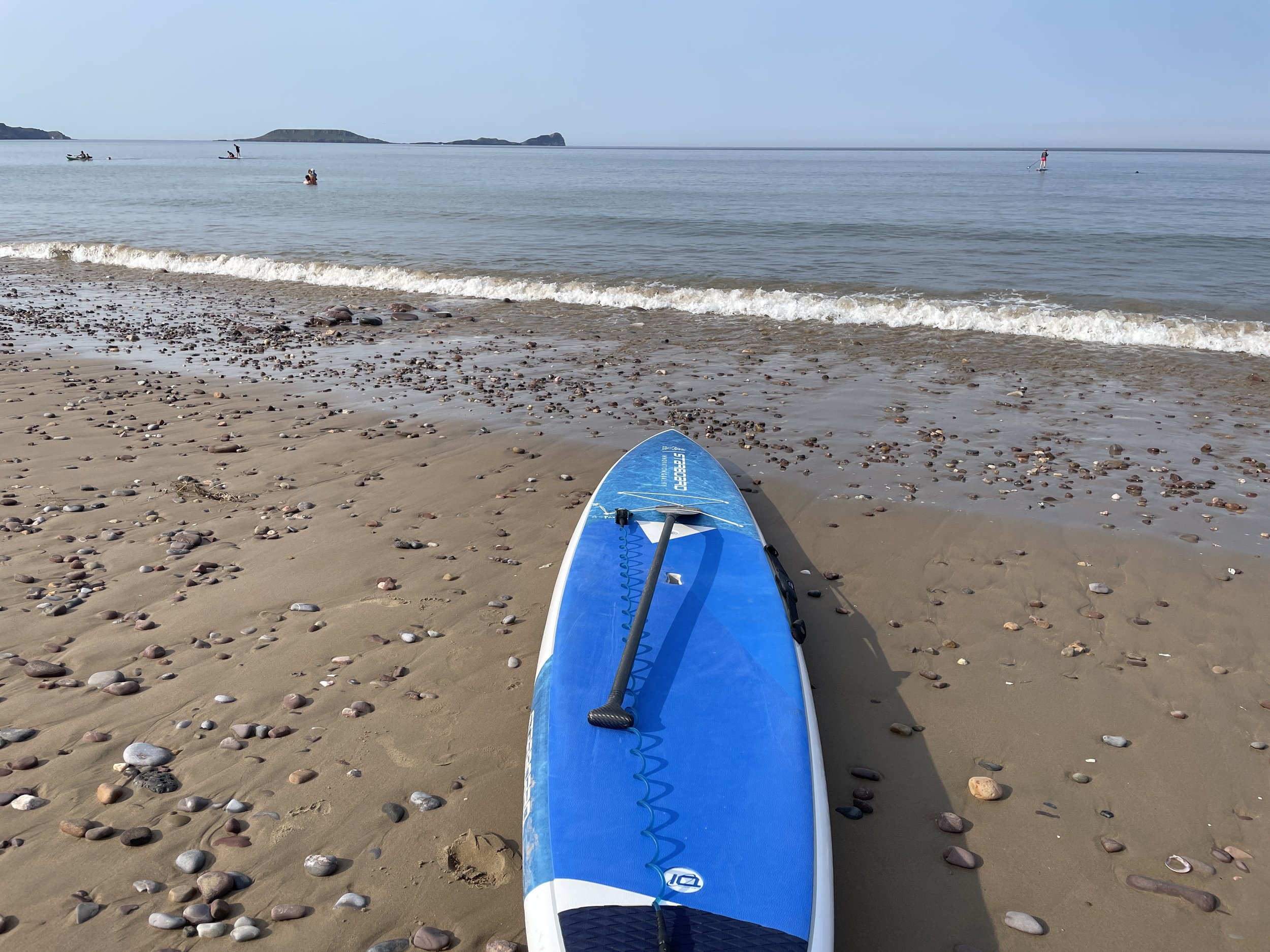
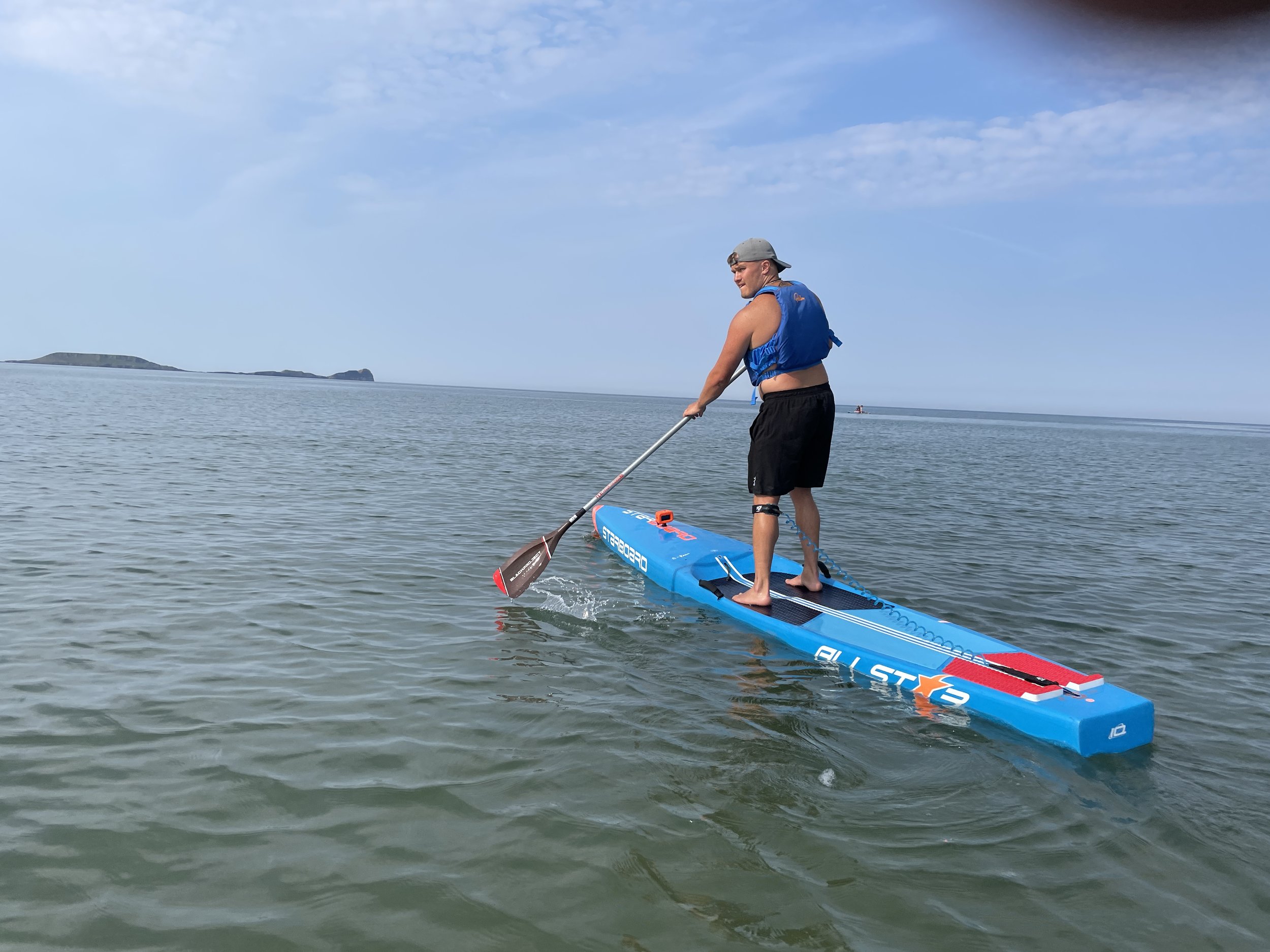

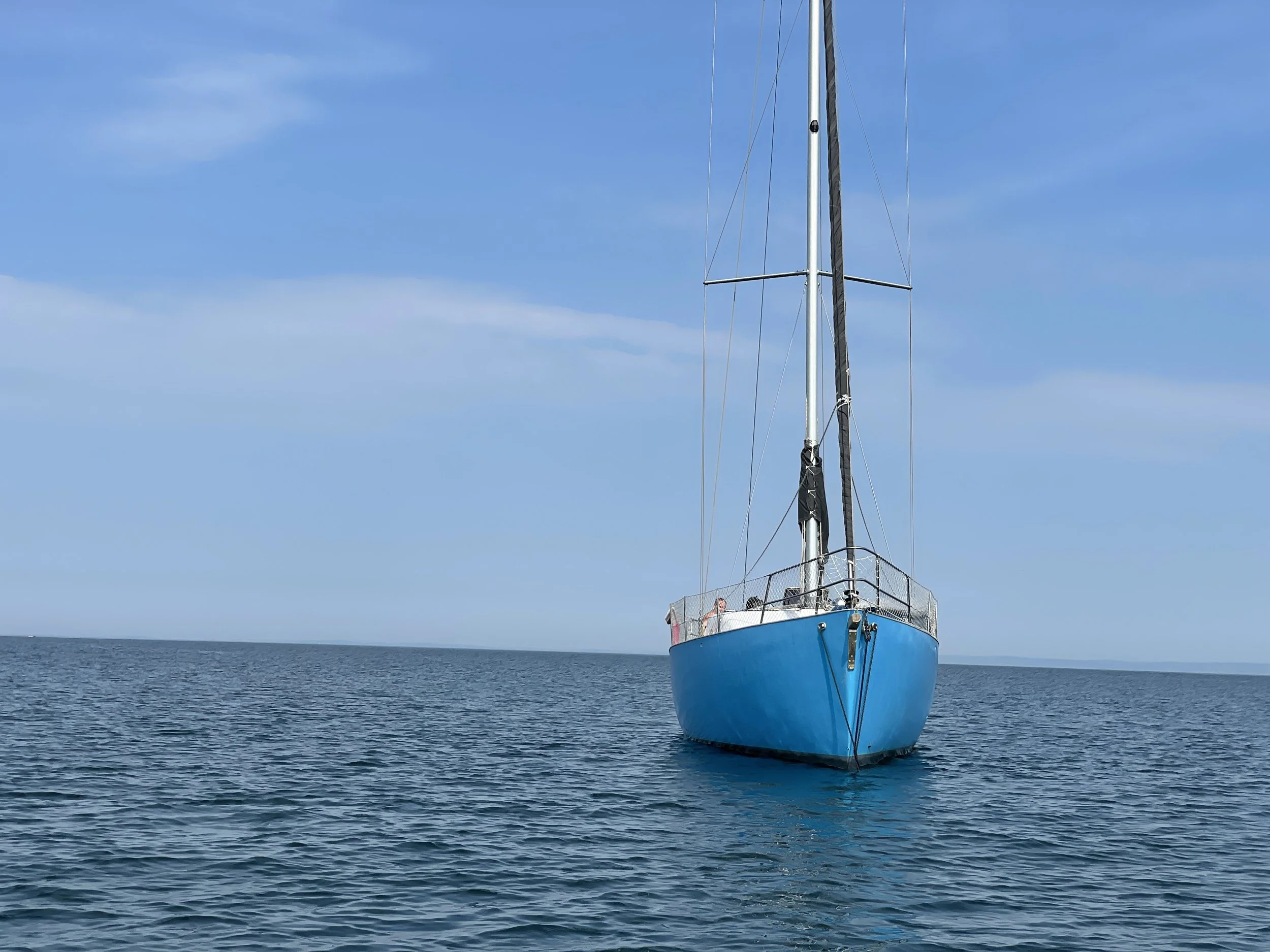
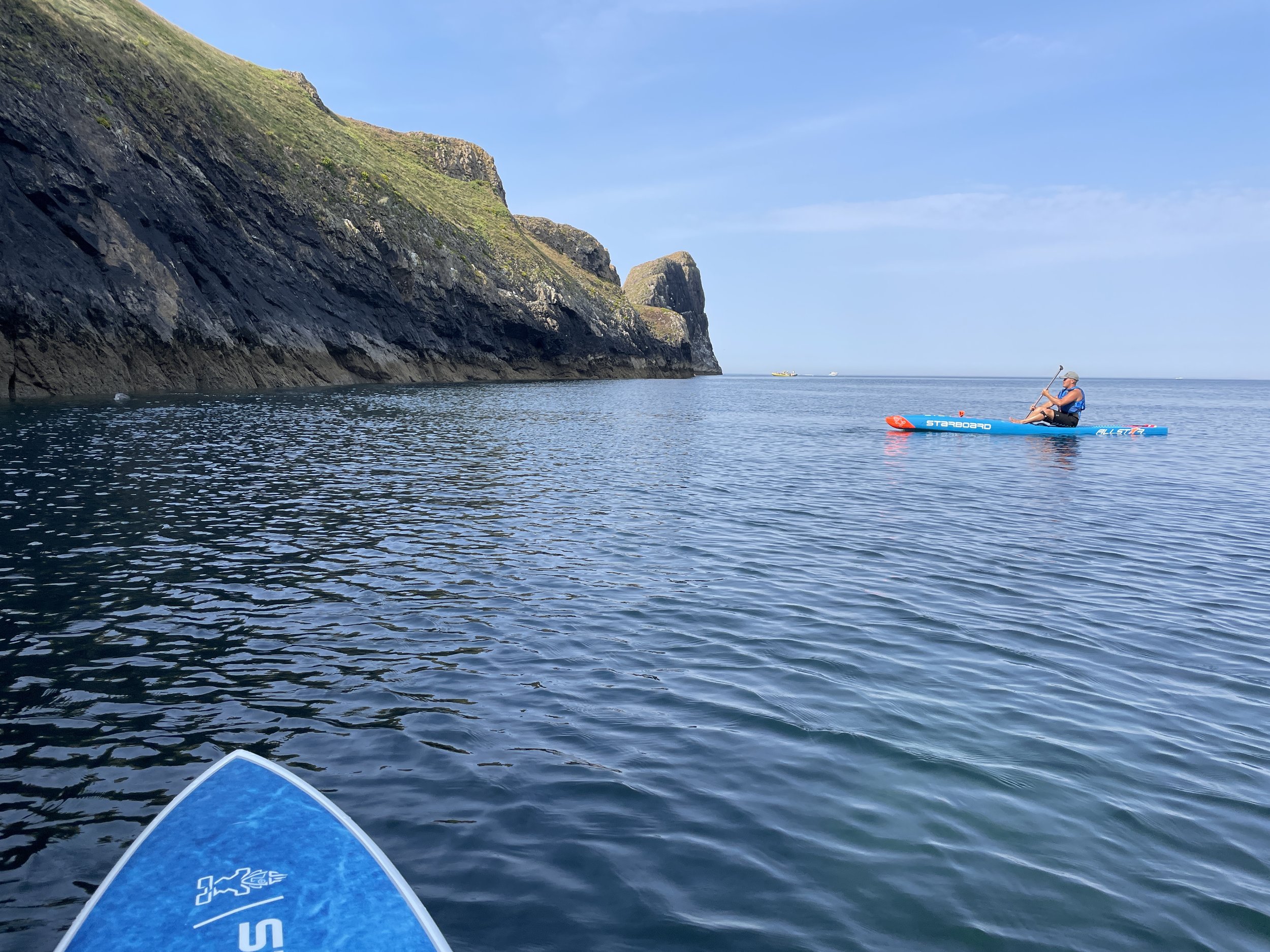
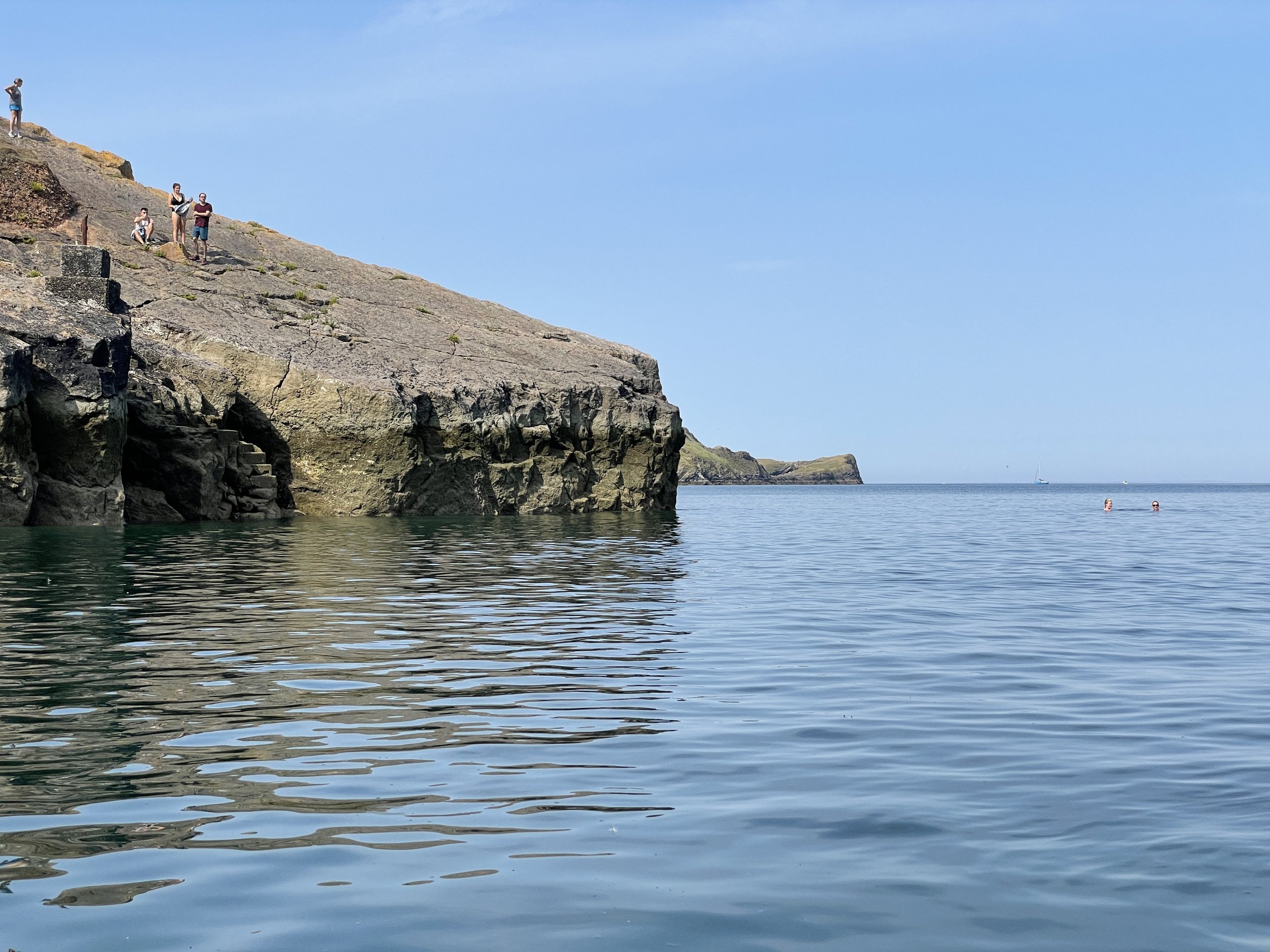


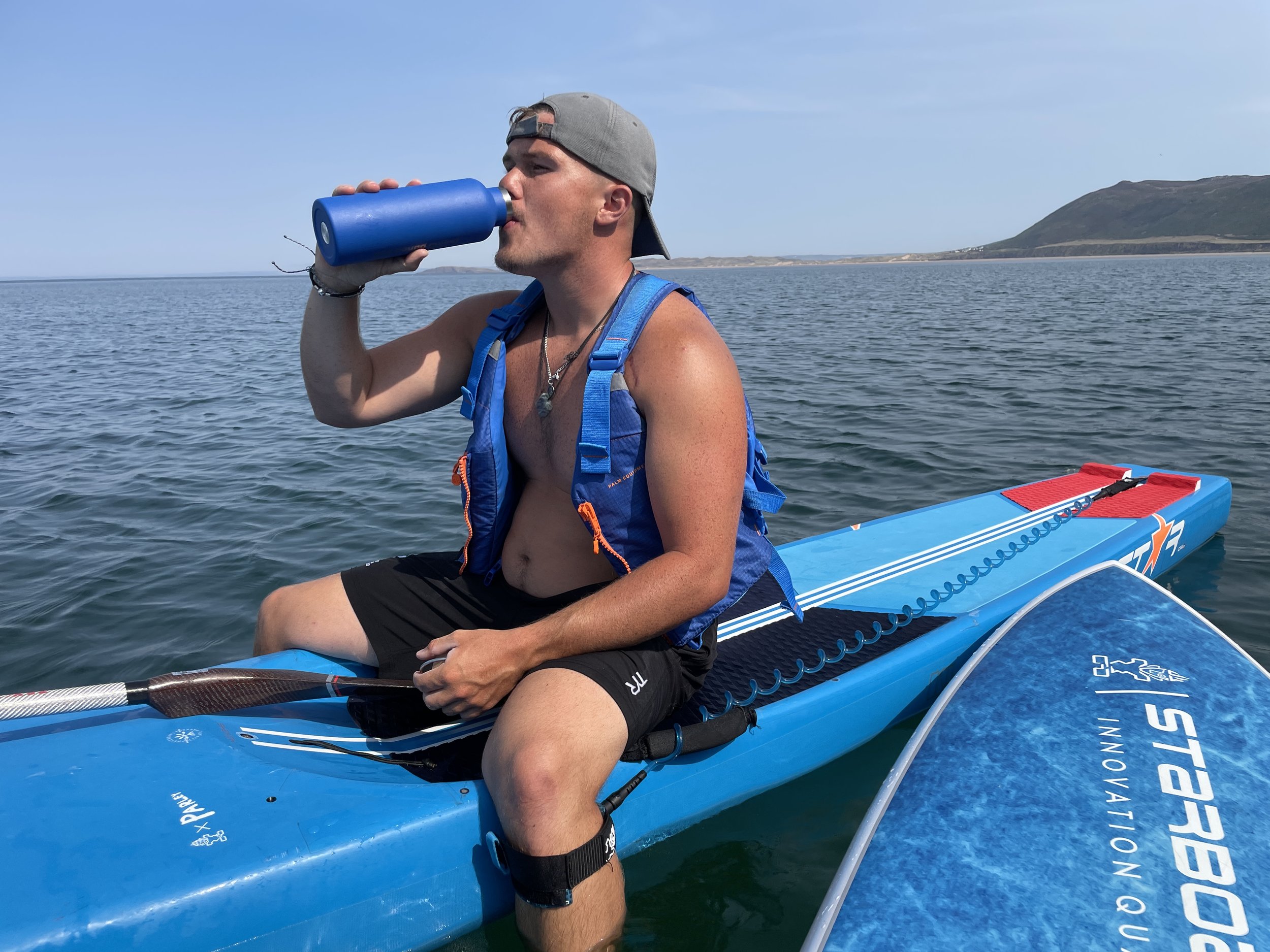
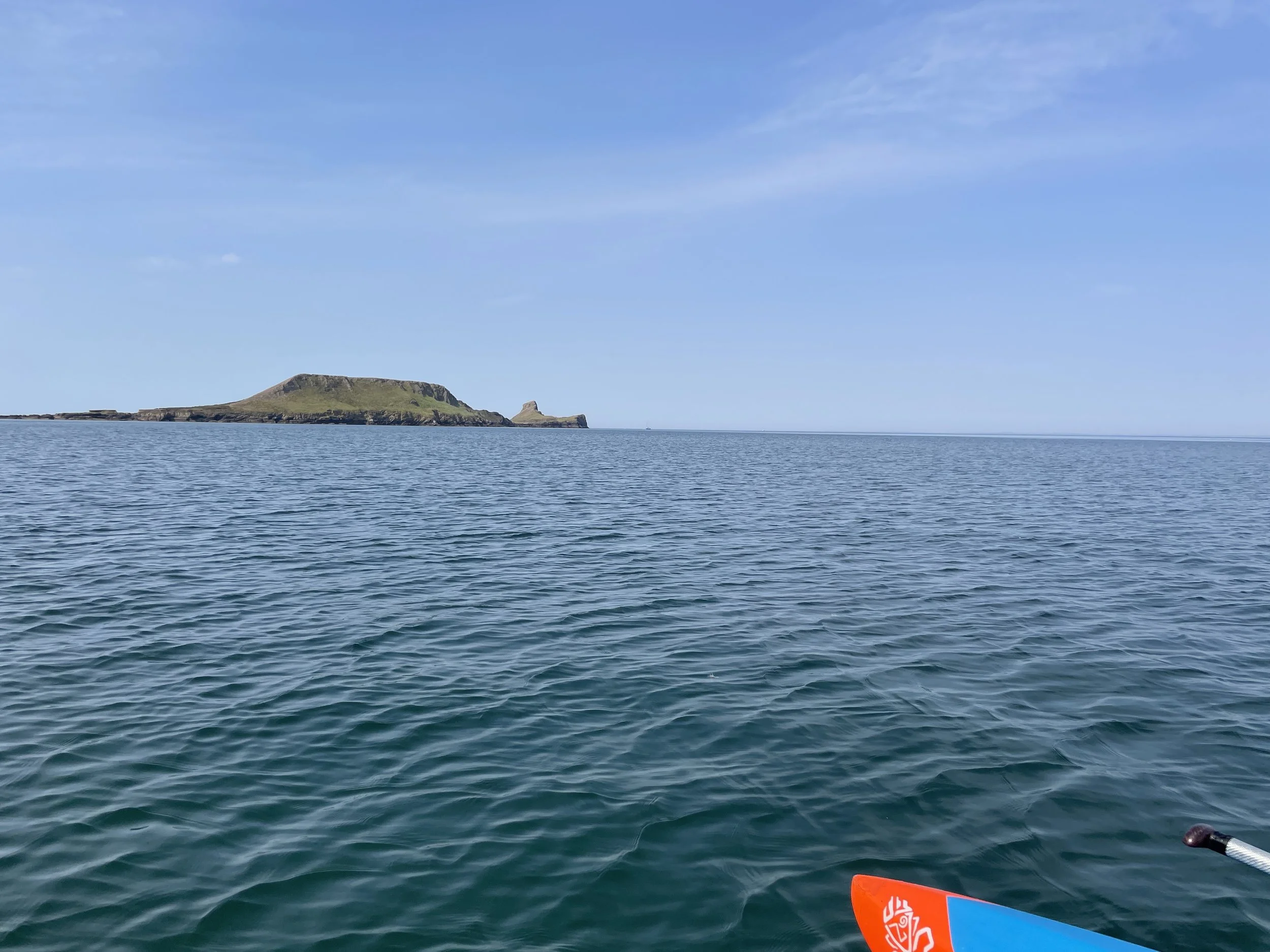
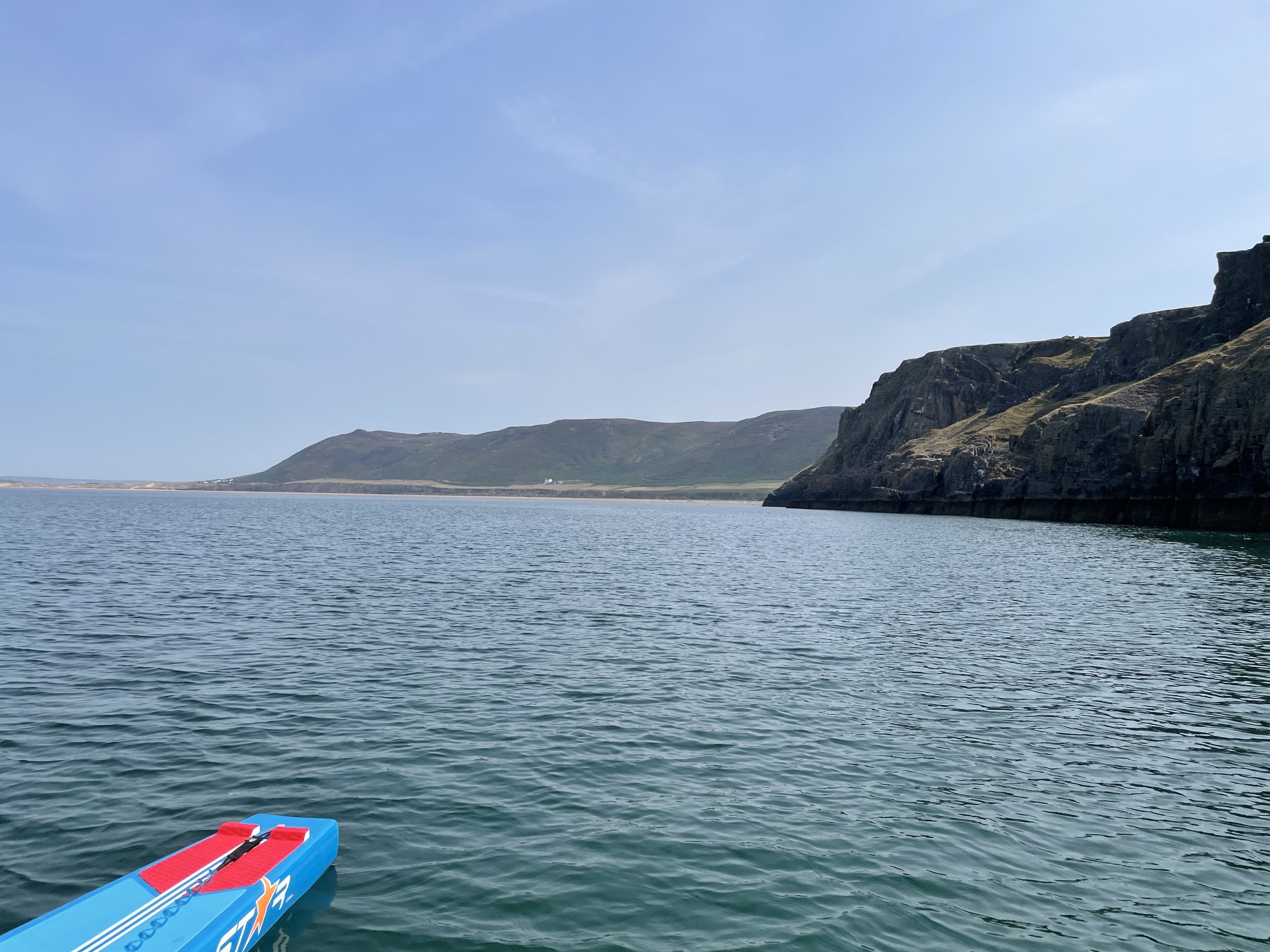
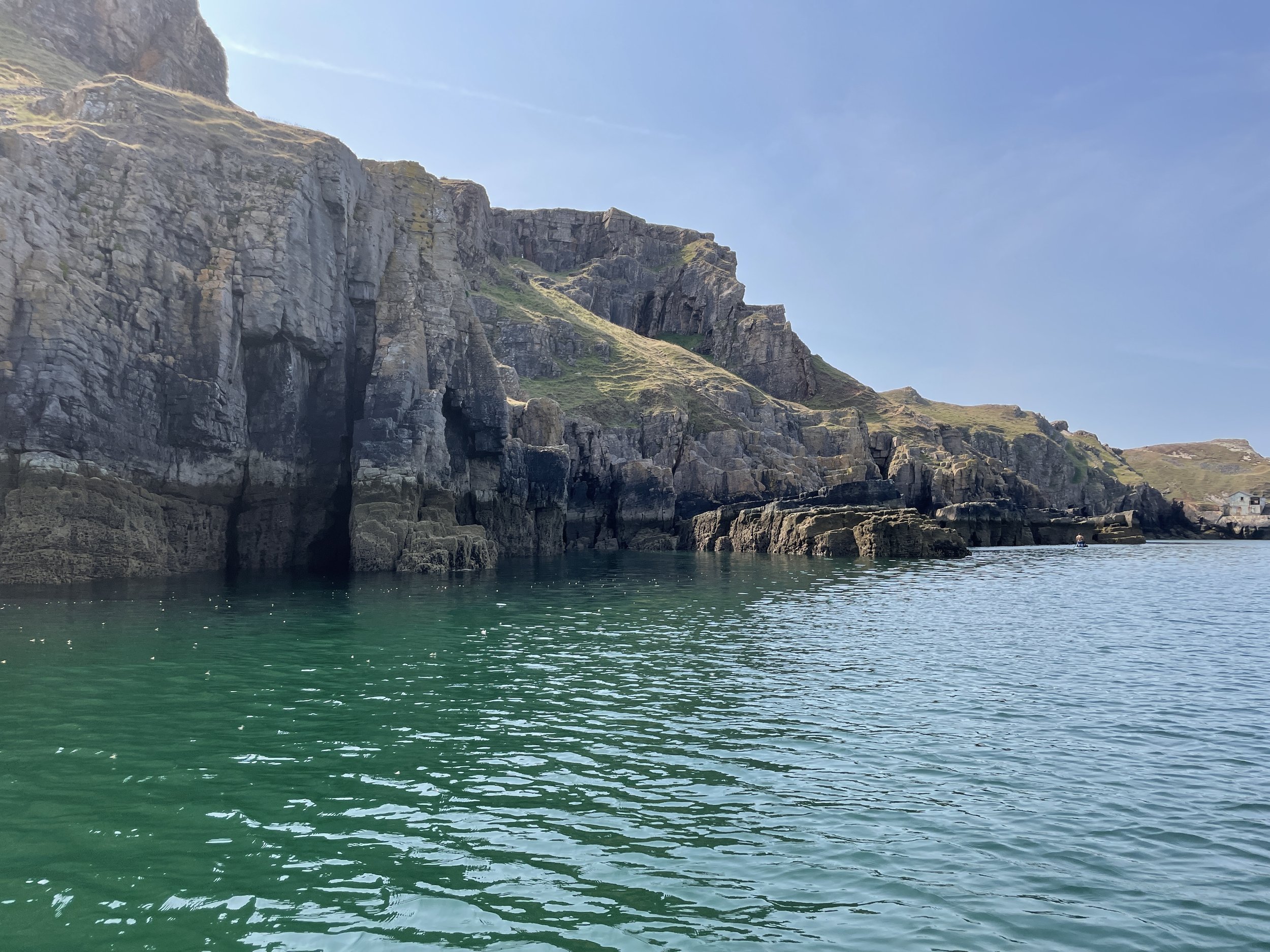
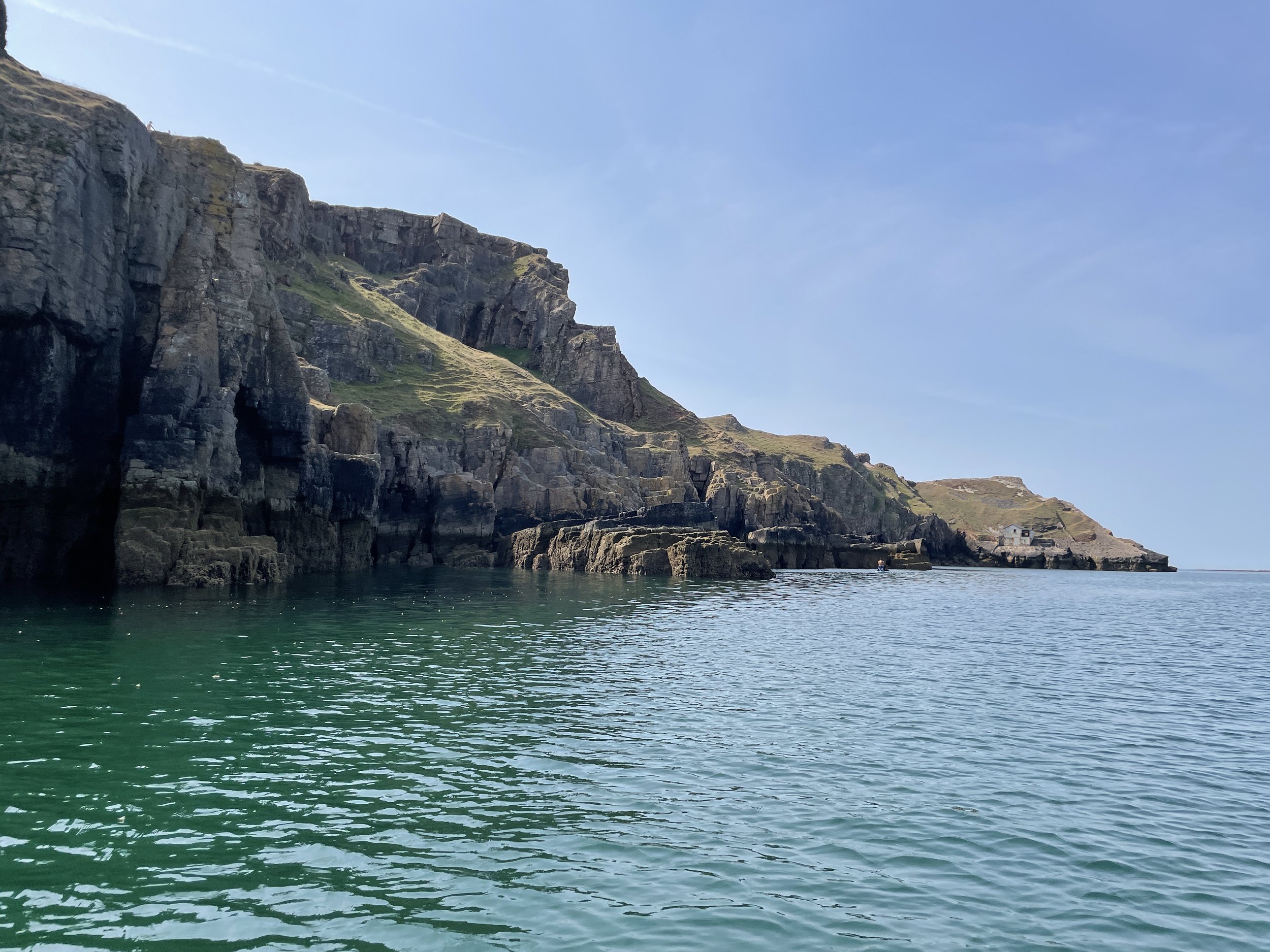
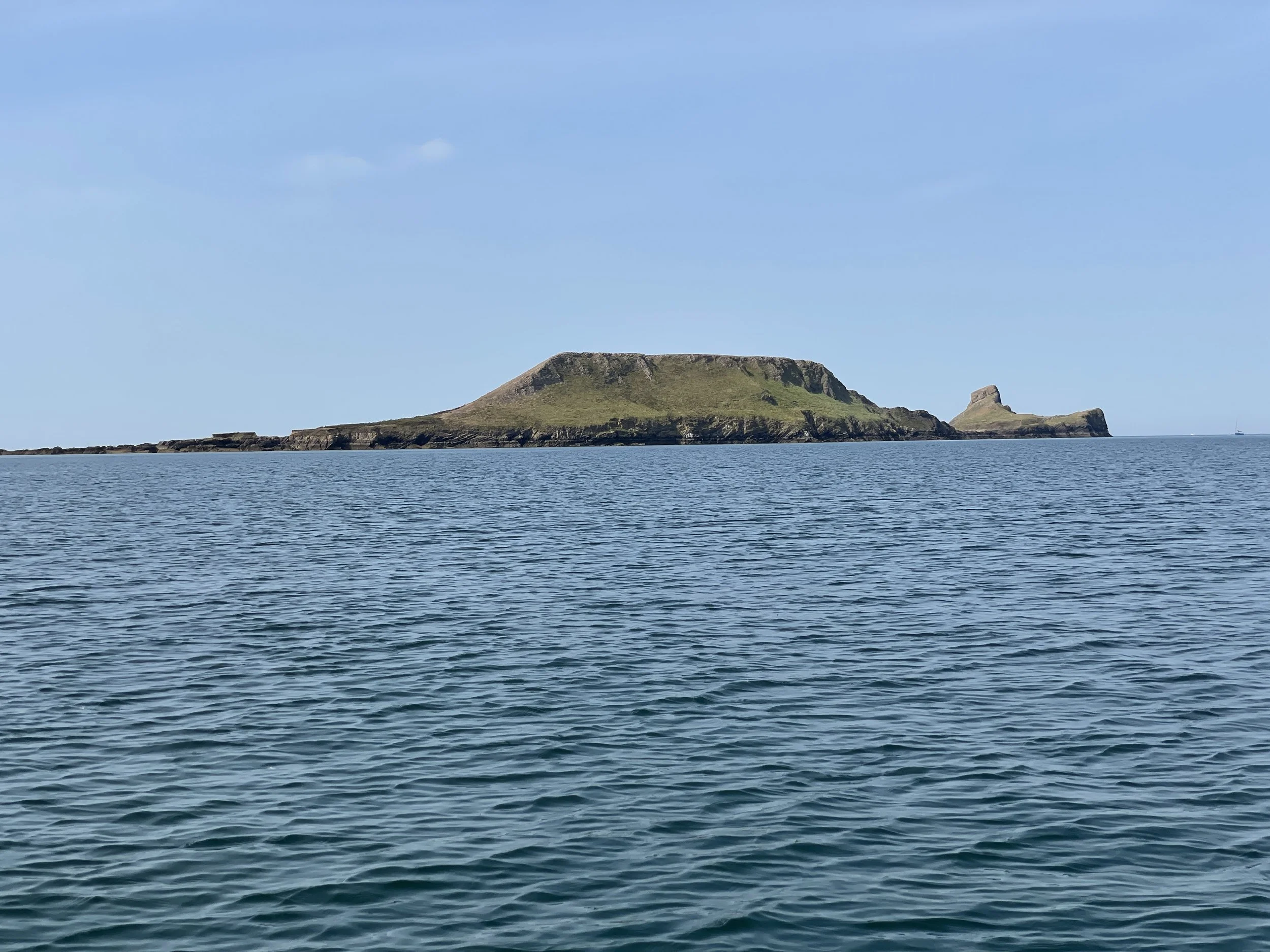
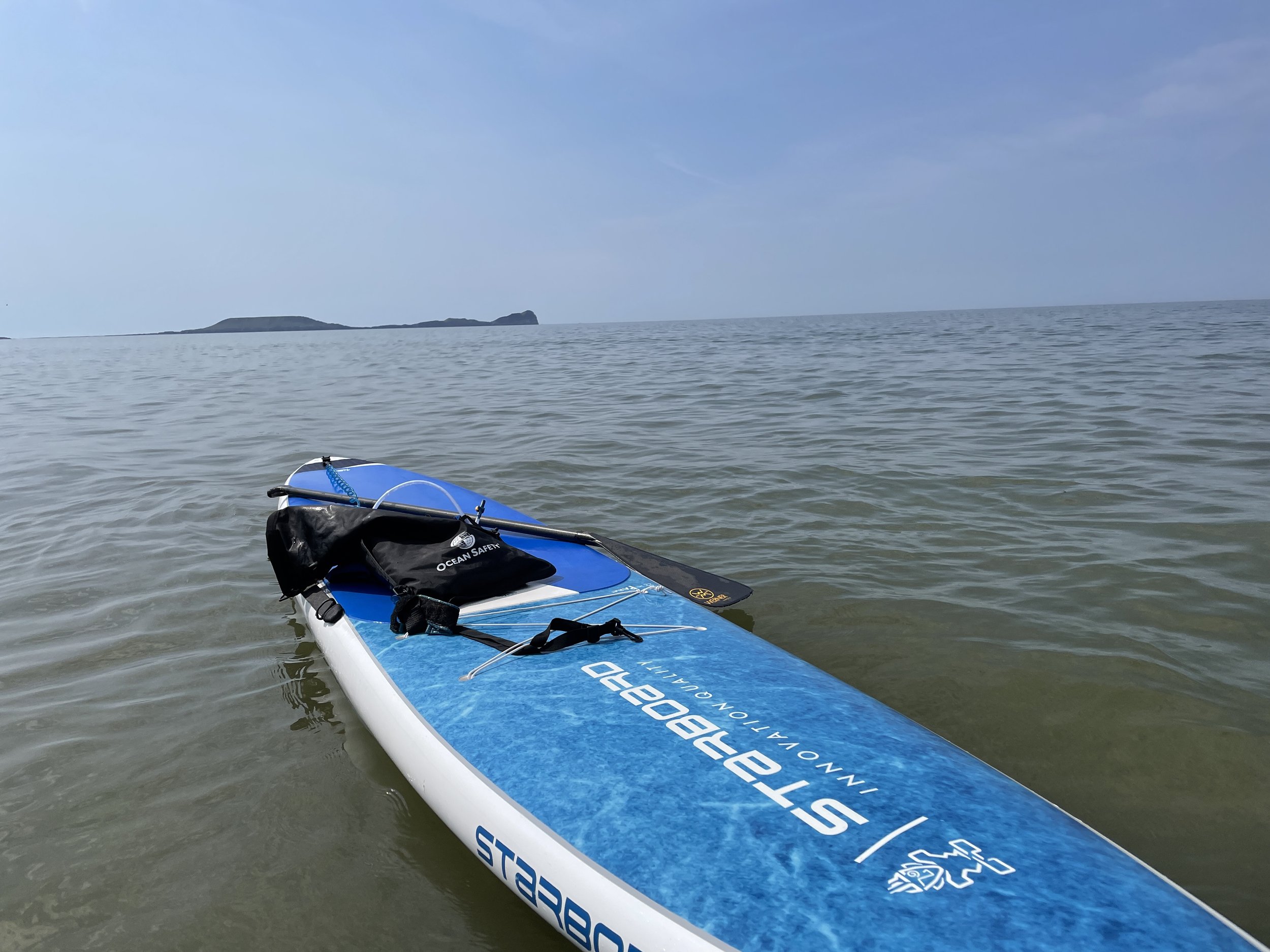
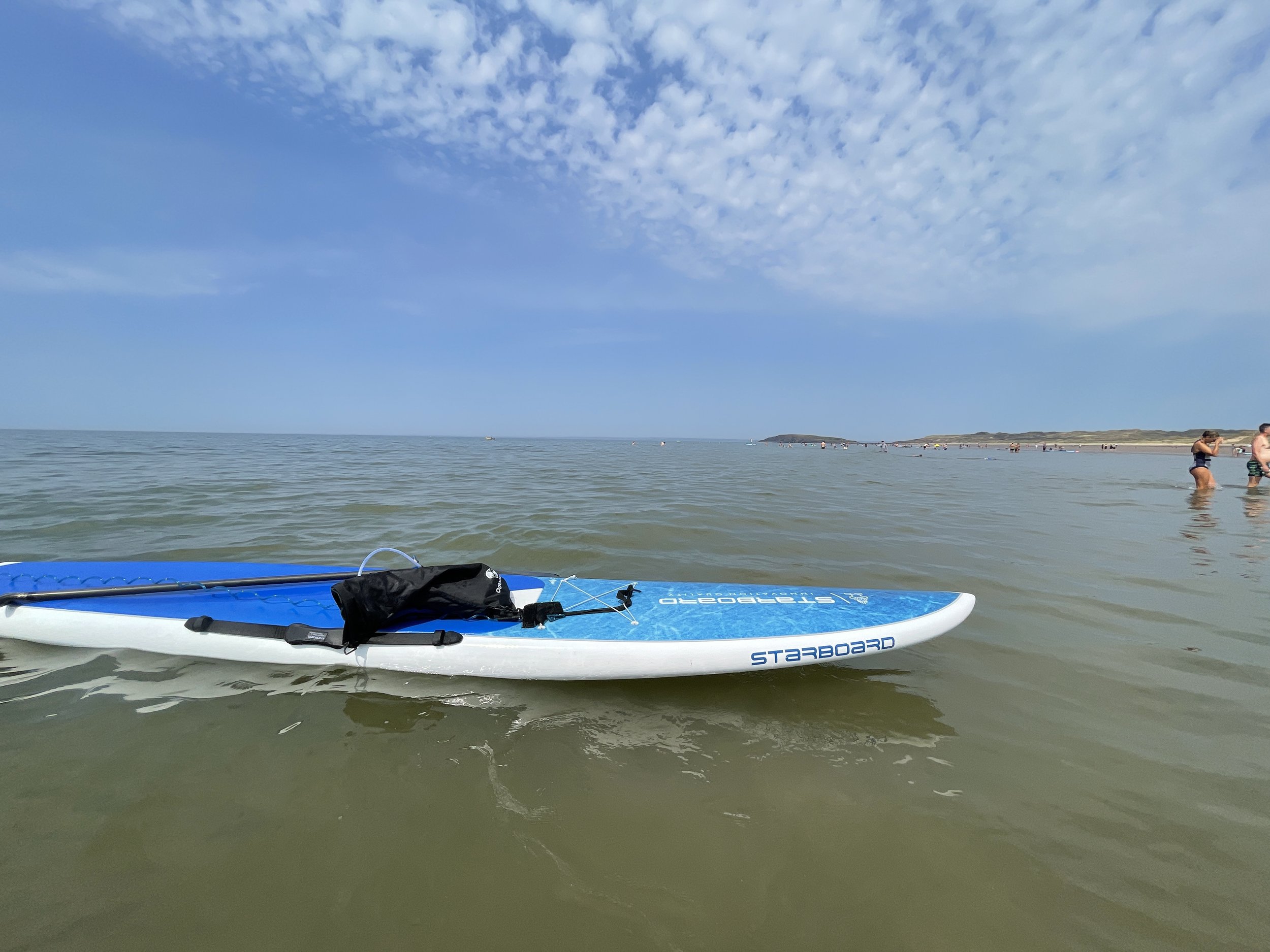
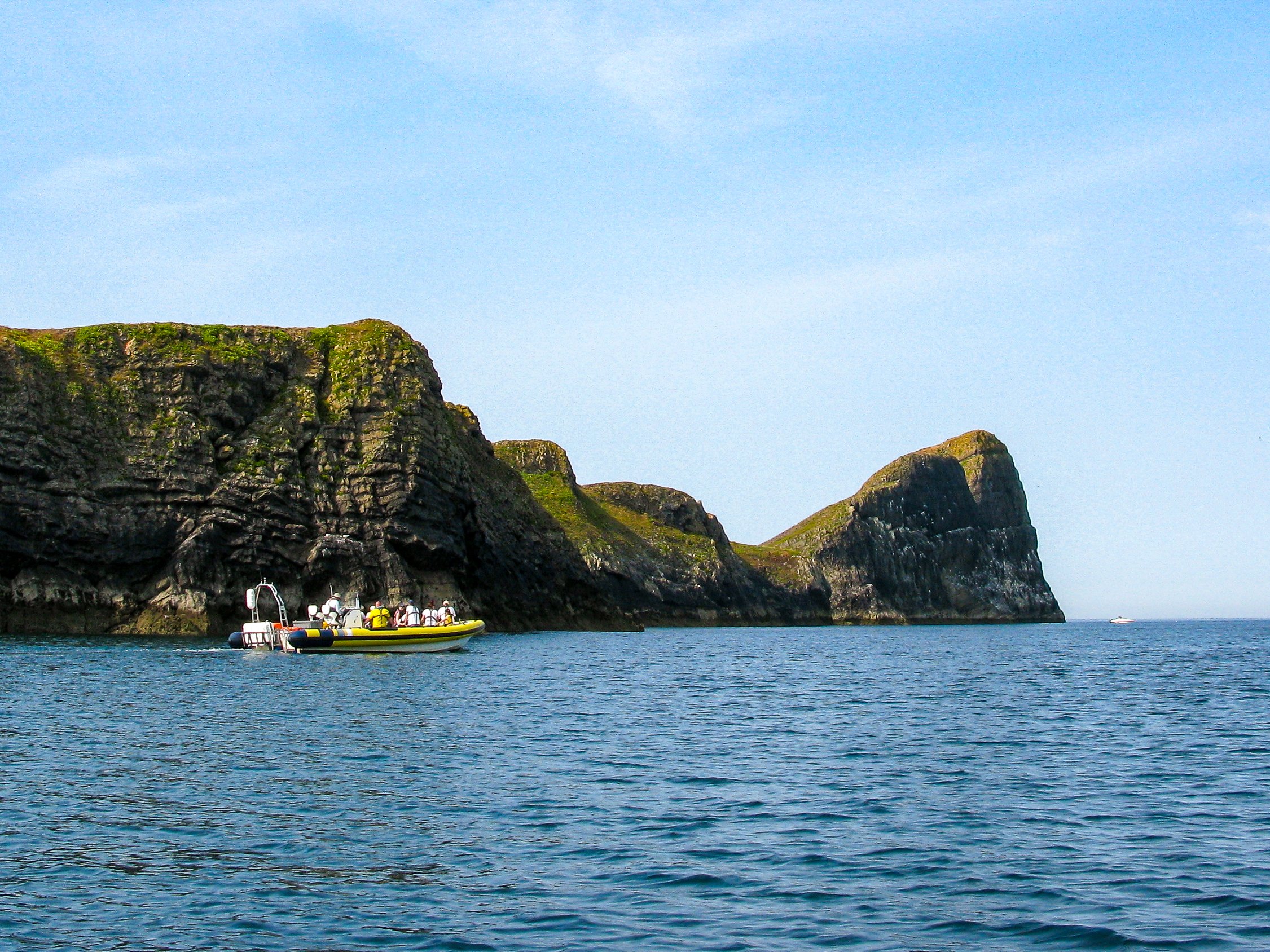
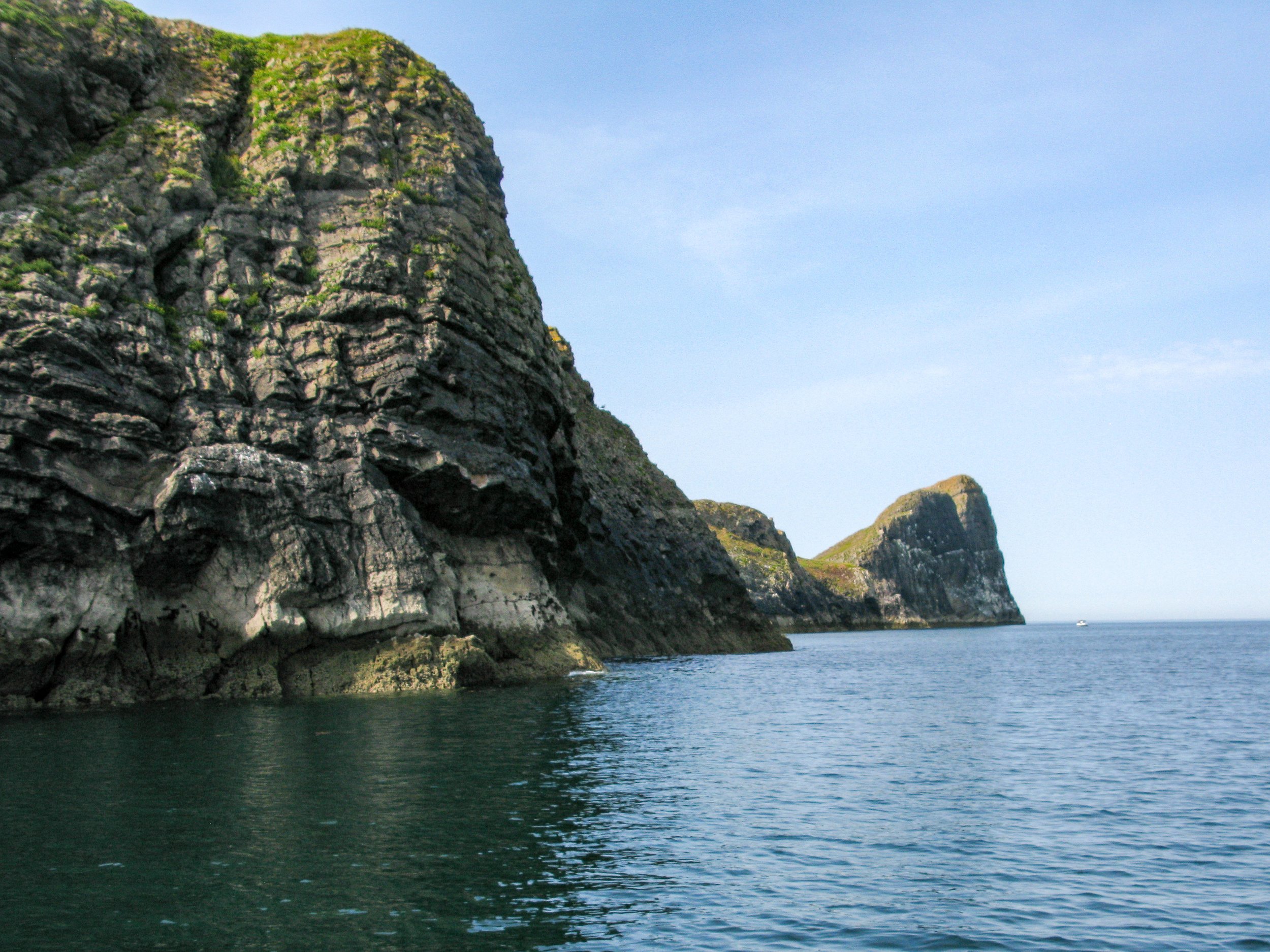
Our next destination was Kitchens Corner, located on the far corner of the inner head, this took us less than 20 minutes. The two-roomed, boathouse was built in the 1920s. This building has never been permanently lived in, but was used to store boats and fishing equipment. Under the right conditions a great place to have a swim!. After a short rest, we paddled back along the cliffs admiring the scenery and watching climbers ascend at numerous points. The journey back took 35 minutes. This was a very enjoyable tour that could be achieved in 2 hours, but I think that we would spend more time taking photos next time.
Disclaimer: Conditions at best are variable and are determined by many factors, including, wind strength and direction, time of tide, size of tide, and currents. It is up to the individual to risk assess conditions before setting out. The level indicated is based on favourable conditions and is an indication and not necessarily an accurate. reflection of what you will encounter.
Langland Bay
Langland beach is easily accessible, less than 5 minutes by car from Mumbles. Car parking is just a few metres from the beach. There are toilet facilities and a beachside cafe and restaurant. Langland offers a variety of waves that are tide dependent. The bay faces south and therefore offers some protection from prevailing westerlies. The profile of the beach can change rapidly after storms, usually, it is a mixture of storm beach, sand and reefs. At high tide, the waves are fast-breaking, but as the tide goes out, then peaks and point breaks start to generate longer breaking waves.
At mid-tide, there is the middle reef and lefts, at the same time the point break should also start to work. The reef can get very congested at times - not the place for a beginner. At low tide, there is the Sandbar in the middle of the bay and on the far left Crab Island.
Old surfers never die! - instead, they paddleboard and migrate to Saga Point. This is a slow right-hander that peels at low to mid-tide. The paddle-outs at Langland are generally forgiving as there is normally a slack water channel, but you just need to be careful of your depth both entering and exiting the water, as it can get very shallow in places. Paddleboards generally keep to the point.
Parking is good, either behind the beach huts by the tennis courts or if full, there is another car park behind Langland's Brasserie. These are Pay and Display Car parks where you will need to enter your Car Reg - Be warned they are monitored and fines are issued for non-compliance. There are toilets that can be found at the end of the beach huts, opposite the tennis course towards the Surfside Cafe end of the promenade.
Unfortunately, There have been more frequent reports of car crime in recent years. The Surfside cafe was offering to hold your key while you are in the water.
Caswell Bay
Caswell is a family orientated beach with cafe and toilet facilities. Surfability and other surf schools operate from the car park. The surf tends to be smaller than Langland and is primarily shore break. In good conditions, it is a 25-30 minute paddle to Langland to the east or Pwull Du to the west. I normally tend to head into the wind on the outward tack. These days surfing conditions are better at low tide and there is a small reef that sometimes gets exposed on the larger tides. There is a large shore area at low tide but this gets smaller as the tide advances up the beach. It can be very busy at high tide.
Tips: The car park can fill early on weekends and during the summer holidays. There are often queues for the pay and display machines, It is more effective to use the MiPermit App to pay for parking. Wifi signal can vary by provider, there is generally a good signal at mid to low tide, if not available in the car park itself.
If you are paddling out at high tide then consider paddling out close to the left-hand cliff path as this is often less turbulent when there is surf.
Caswell to Pwll Du
Caswell to Pwll Du Map
Disclaimer: Conditions at best are variable and are determined by many factors, including, wind strength and direction, time of tide, size of tide, and currents. It is up to the individual to risk assess conditions before setting out. The level indicated is based on favourable conditions and is an indication and not necessarily an accurate. reflection of what you will encounter.
Pwll Du is a storm beach that is approximately a short 25-minute paddle from Caswell Bay. En route, you will pass Brandy Cove. It is probably easier and quicker to get to Pwll Du than walking!
You can see in the distance a Yacht moored off Pwll Du, just to give you an idea of distance / destination.
Caswell Bay: KEY POINTS
Car Parking is limited and gets busy in Summer (Get there early)
Avoid queues to pay for parking - get the MiPermit App - (Wifi is Provider dependent - most will get a signal at the mid-tide area.
Toilets facilities on-site - limited opening times
Open-air Showers
Cafes and Snacks available
Surf Schools
Small beach area at high tide
Dog restrictions in place during Summer
Caswell to Langland (Moderate Difficulty)
Caswell and Langland are often sheltered from the prevailing winds and it is only when you clear the points that you experience the conditions. Tides will impact on performance and there can also be rips and currents, notably at each point, this means localised choppy waters.
Caswell to Langland Map
Disclaimer: Conditions at best are variable and are determined by many factors, including, wind strength and direction, time of tide, size of tide, and currents. It is up to the individual to risk assess conditions before setting out. The level indicated is based on favourable conditions and is an indication and not necessarily an accurate. reflection of what you will encounter.
SUP Downwinding
Caswell to West Pier
Caswell to West Pier
Disclaimer: Conditions at best are variable and are determined by many factors, including, wind strength and direction, time of tide, size of tide, and currents. It is up to the individual to risk assess conditions before setting out. The level indicated is based on favourable conditions and is an indication and not necessarily a totally accurate. refection of what you will encounter.
SUP Touring - Caswell Bay to Swansea West Pier, via Langland Point, Bracelet Bay, Mumbles Head, Knab Rock and Swansea Bay.
Oxwich Bay
Oxwich is a good destination for beginners, it is one of the most sheltered spots on Gower, taking into consideration the prevailing westerly winds. The water is generally calm and flat with little or no swell (except on storm days). You can usually park close to the beach and it is just a short walk to the water’s edge at high tide. However, it can be a long walk carrying boards to reach low tide.
Normally the water closest to the headland is the most sheltered and you can usually judge this visually. Just a word of warning, if you paddle out into the middle of the bay the winds can be a little unpredictable. . Oxwich point is very shallow and notorious for the tidal race. The point is only really suitable for advanced and technically strong paddlers. Beginners should avoid the Point.
Disclaimer: Conditions at best are variable and are determined by many factors, including, wind strength and direction, time of tide, size of tide, and currents. It is up to the individual to risk assess conditions before setting out. The level indicated is based on favourable conditions and is an indication and not necessarily accurate. reflection of what you will encounter.
Oxwich Bay to Three Cliffs Bay
This is a good 4 hour adventure, open sea, river mouth and up river. Spring Tides are best as you need the extra depth to travel up Pennard Pill. You have 30 minutes either side of top tide, the river drains quickly on the ebbing tide. Be prepared for tunnelling winds and you need to navigate carefully to prevent grounding on this meandering waterway. Watch out for the submerged stepping stones, plenty of water at top tide but will get shallow on the drop.




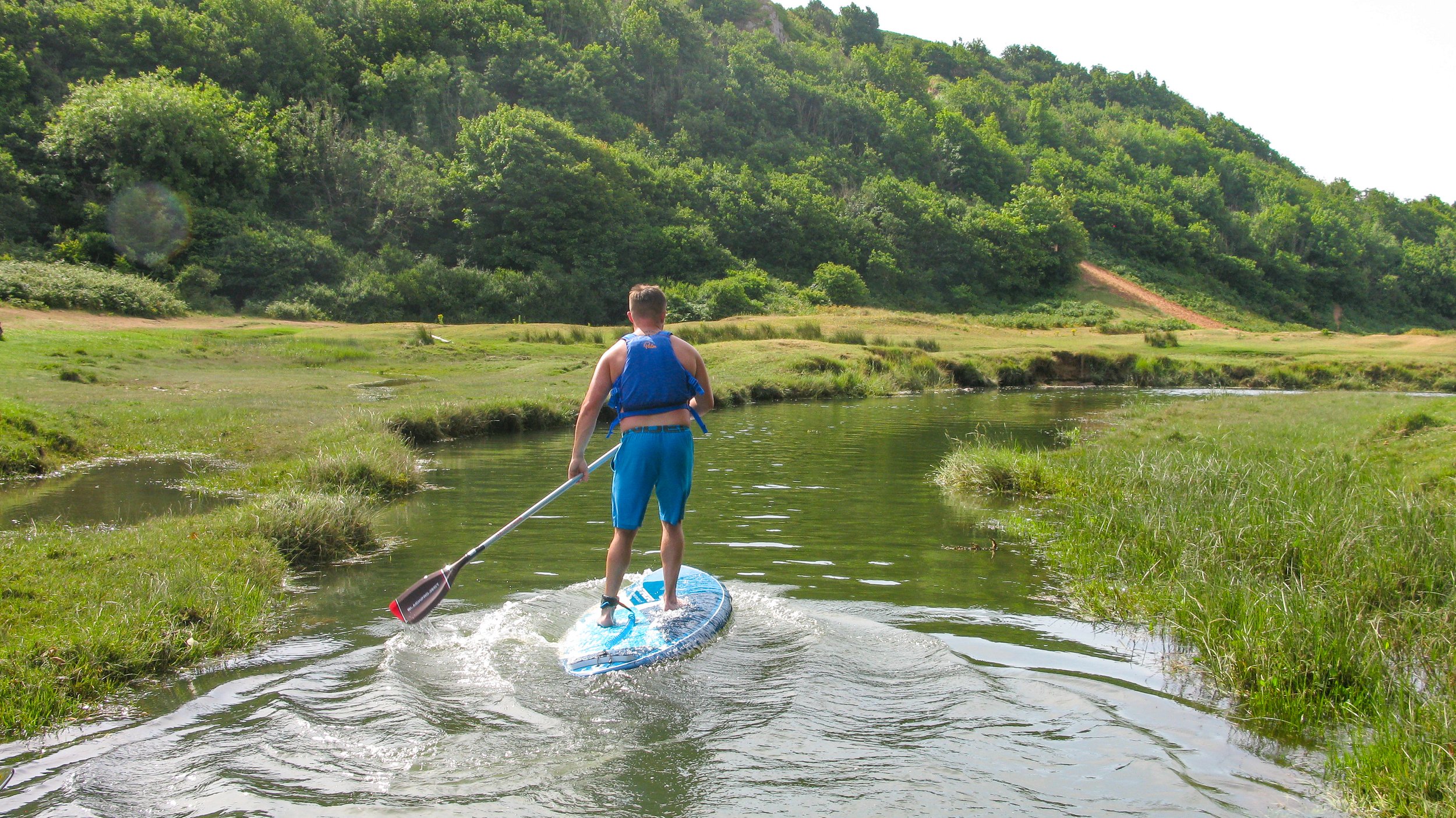
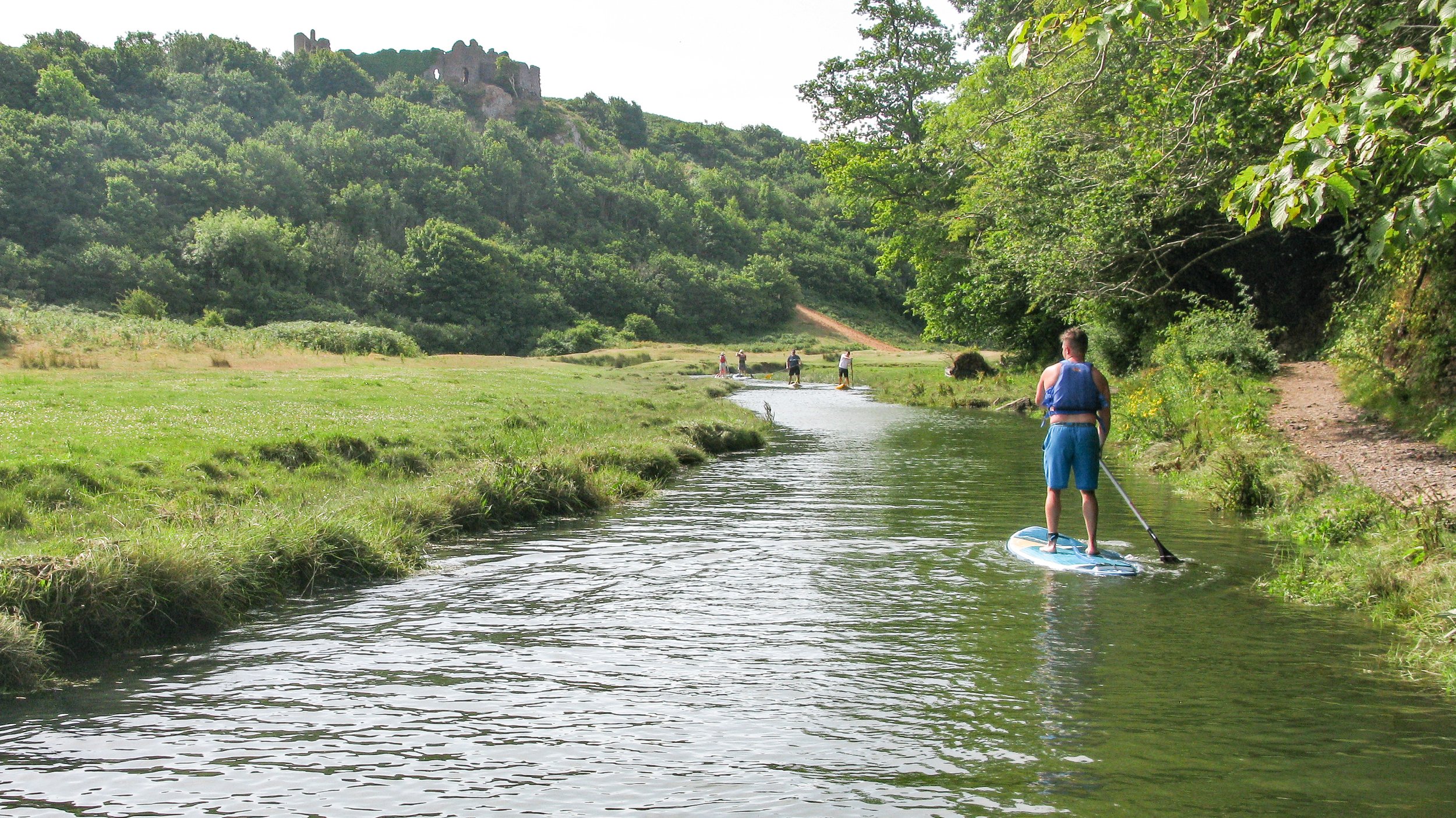



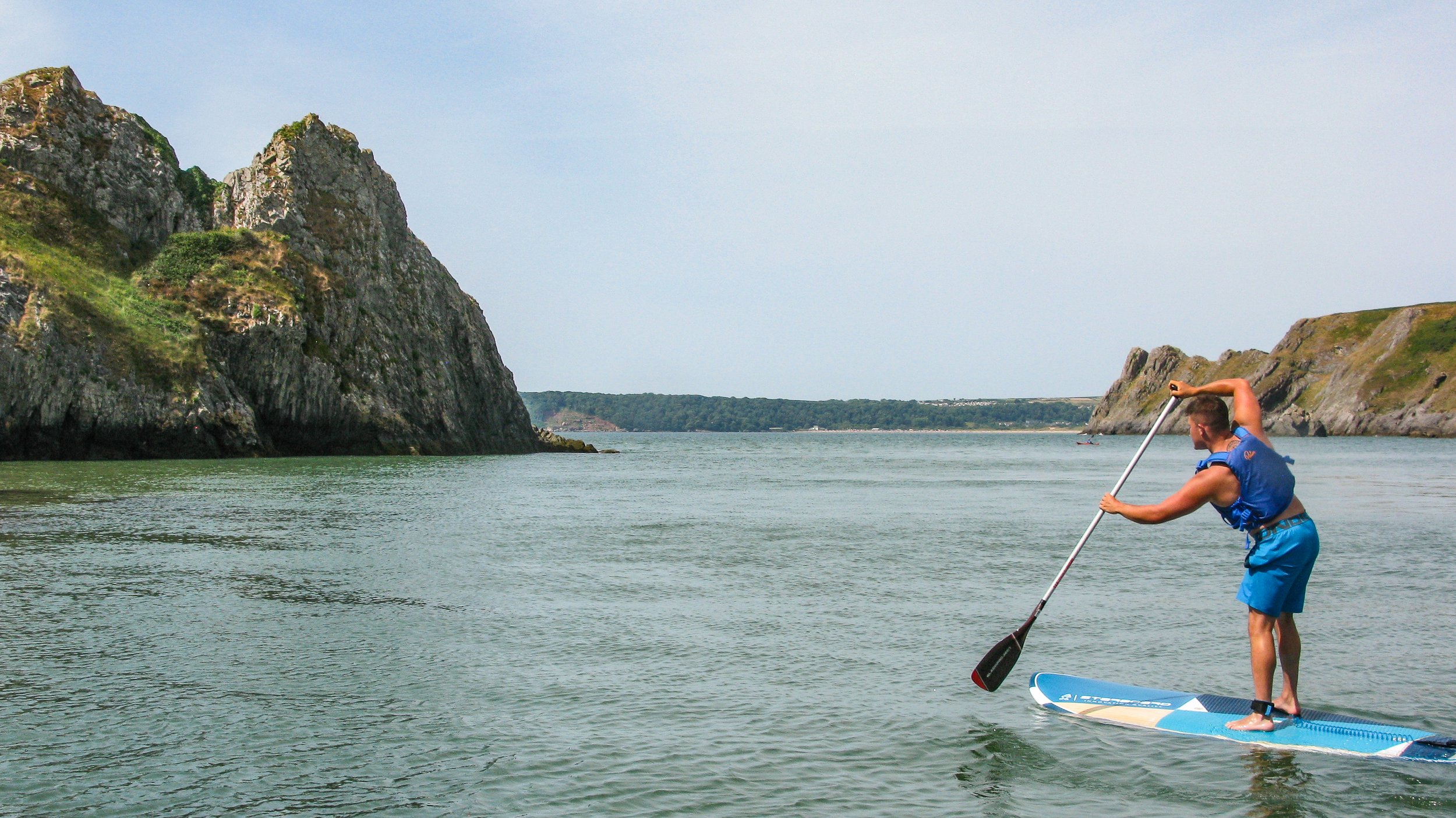
Broughton SUP Adventure
Glorious paddle today at Broughton. Crystal clear waters, plenty of Whitebait , Mullet and Bass to be seen, as well as lots of large Jellyfish.
We launched at low tide and then travelled along the coast to Burry Holms, the causeway was dry so we beached and then re-launched in Rhossili Bay. Conditions were great, even some some small waves to ride. We paddled back around the island, using the current to take us around Spanish Point. A gentle breeze was with us on the return and we stopped off at Blue Pool to take a few photos. It was a fabulous session.
I would like to add a disclaimer. Conditions around Burry Holms can sometimes be very challenging / dangerous currents etc. Carefully check the conditions and wear safety gear. The far points of Burry Holms are exposed to winds, swell and strong currents.













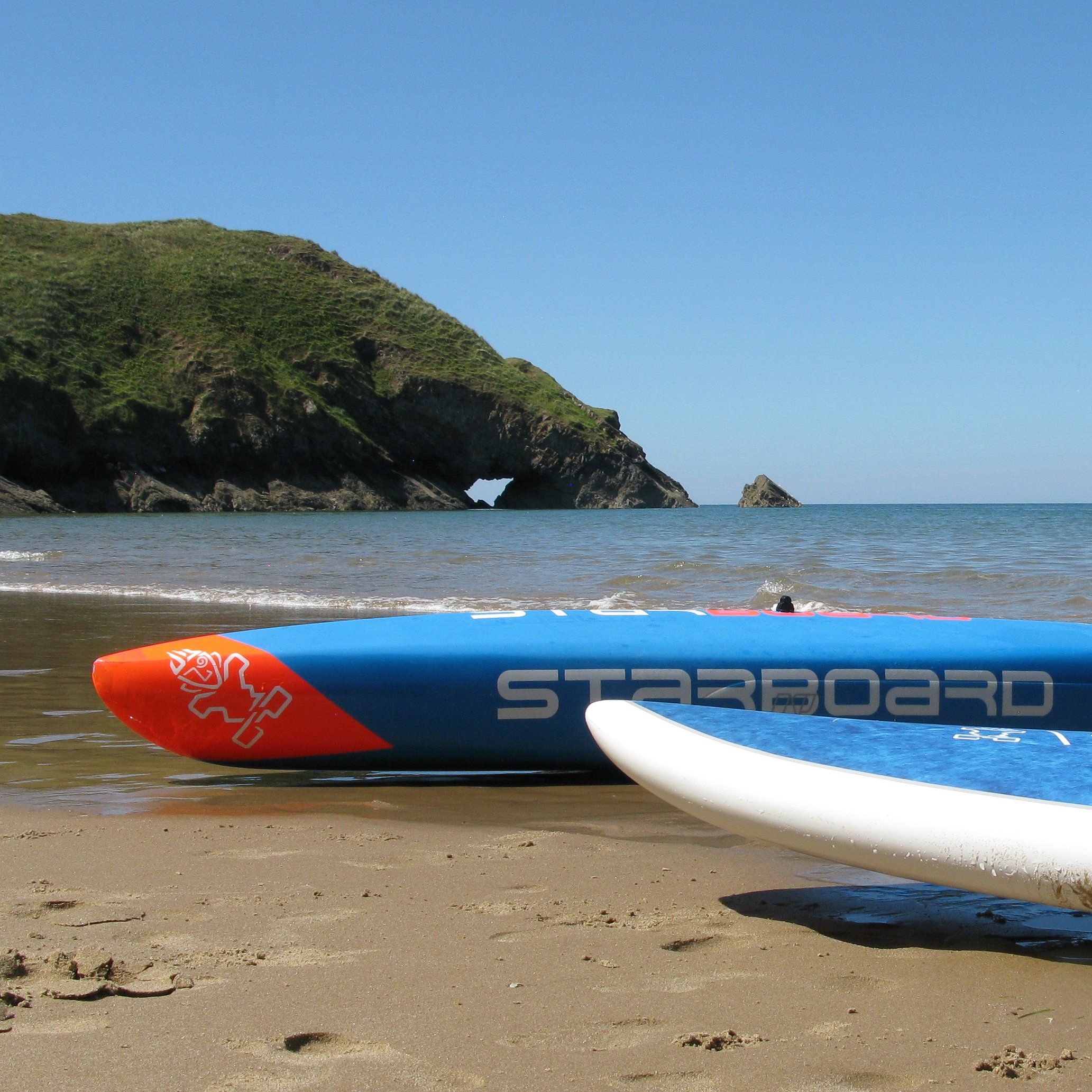
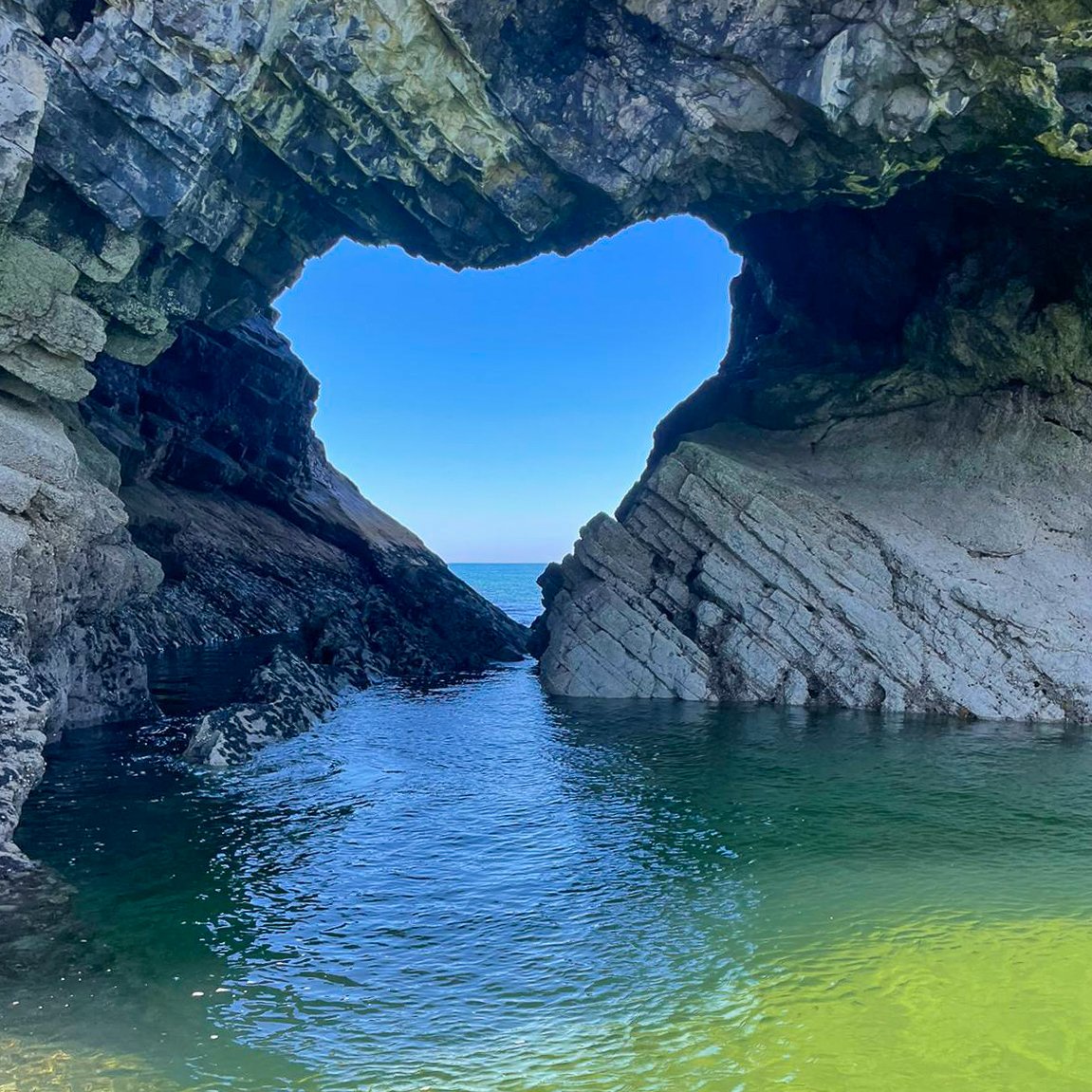
Simple tips to improve your time paddleboarding
SUP (stand-up paddleboarding) is one of the most popular watersports. SUPing, whether on an inflatable or a solid paddleboard, is a great way to have fun on the water while also getting in shape. If you do it frequently enough, you will notice an improvement in your overall fitness, particularly your core body strength, which is where the majority of your paddle power will come from.
Whether you are a complete beginner or a seasoned paddleboarder, knowing a few tips and tricks to help improve your SUP experience is always beneficial.
If you can, always go with a friend. It’s more fun, and they can help you if you get into difficulty.
If you are going out alone, always tell someone where you're going and when you'll be back. Don't leave the house without a mobile phone or communication device.
Bringing your phone to take some photos? Make sure you keep it in a waterproof pouch. That way it won’t get wet, and you can use it to call for help in an emergency too.
Check the weather forecast and tide times before you set out. If the water is too choppy, you might find it difficult, especially if you are a beginner. And be aware, the conditions can change quickly.
Avoid offshore winds. They will quickly blow your paddleboard far out to sea, which can make it extremely tiring and difficult to paddle back to shore.
You should wear a suitable personal flotation device. This can be a buoyancy aid or a lifejacket. Choose one that still allows you plenty of movement so you can paddle freely. Not only will it keep you afloat, but it will also help give you time to recover should you fall in – and chances are you will!
Wear suitable clothing for the time of year. In the winter, you will want to use a wet or drysuit. In the summer, you might be able to get away with a swimsuit. But if you are going to be in the water for a long time, you might want to upgrade to something that keeps you warm.
You should always use a paddleboard with an appropriate leash. There’s nothing more frustrating than having to swim after your paddleboard if you fall off. The leash will also help you stay connected to your board if you get into trouble and help you float. British Canoeing has some great tips to help you decide which leash is right for you.
If you are launching on a lifeguarded beach, make sure you launch and recover between the black and white chequered flags. There should be fewer swimmers in this area, giving you more room to manoeuvre. Consider other water users by learning the rights of way in the surf. This can save you and others from getting injured.
Get the appropriate level of training. You might be tempted to just buy a board and head out. Having a few training sessions can teach you the right technique, so it’s more stand-up and less fall-in paddleboarding!
SUP safety: Useful links and resources
https://www.bsupa.org.uk/
RNLI Coast and Beach Guide
Paddling at Swansea Bay with Mumbles Head in the background.
